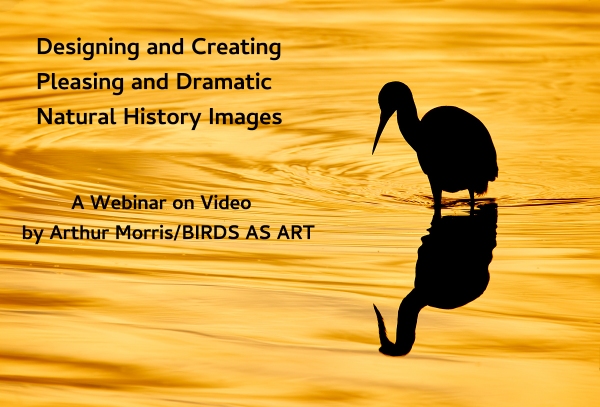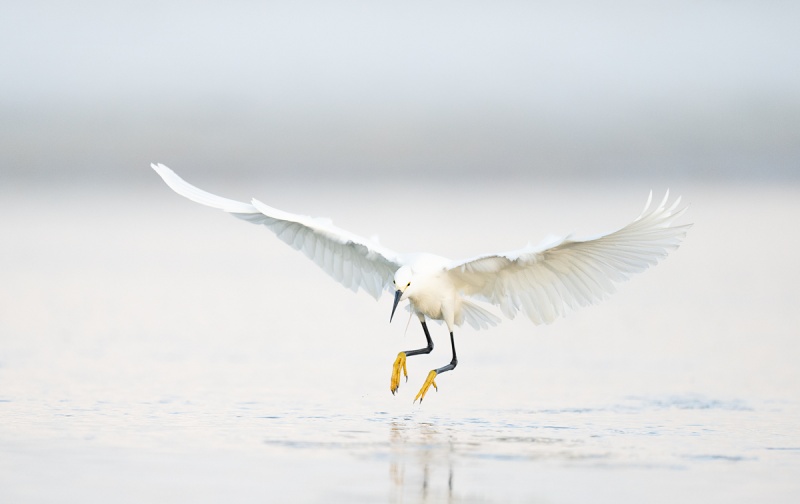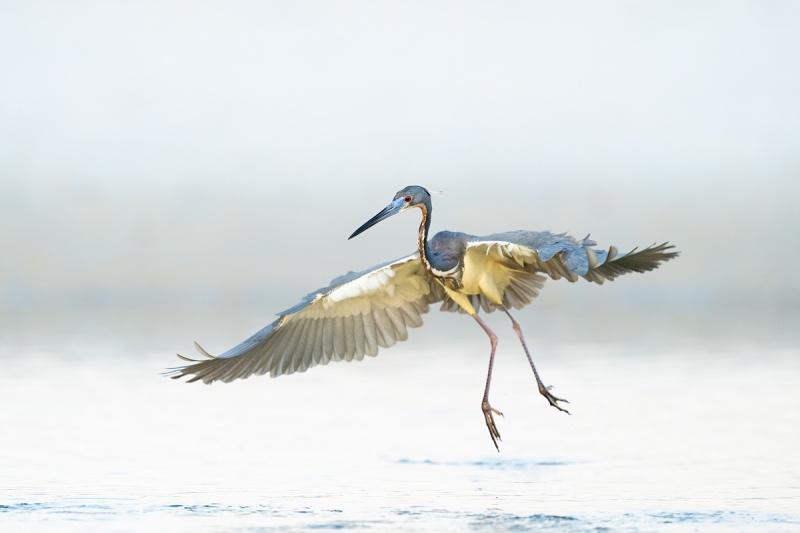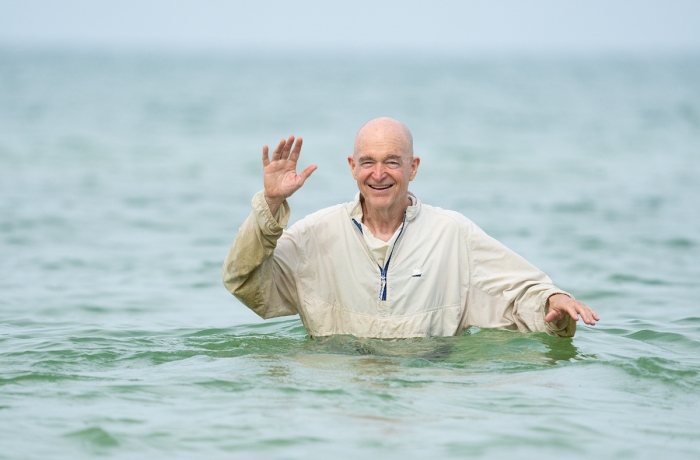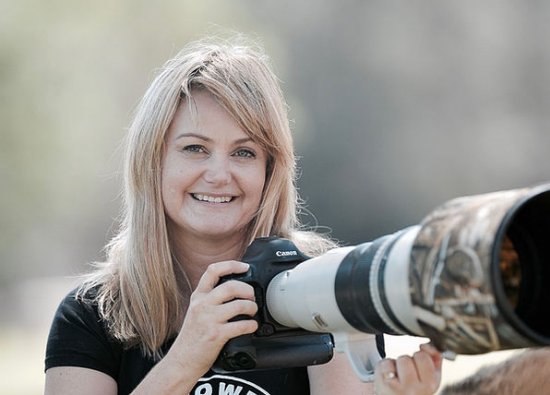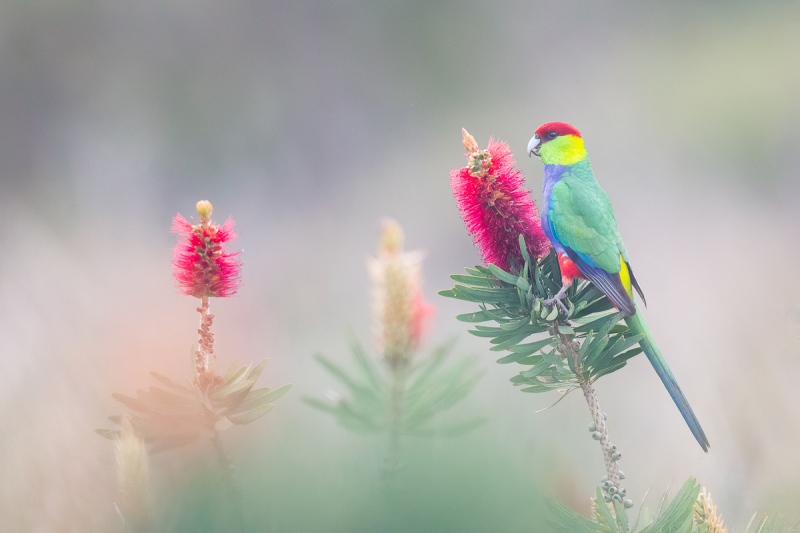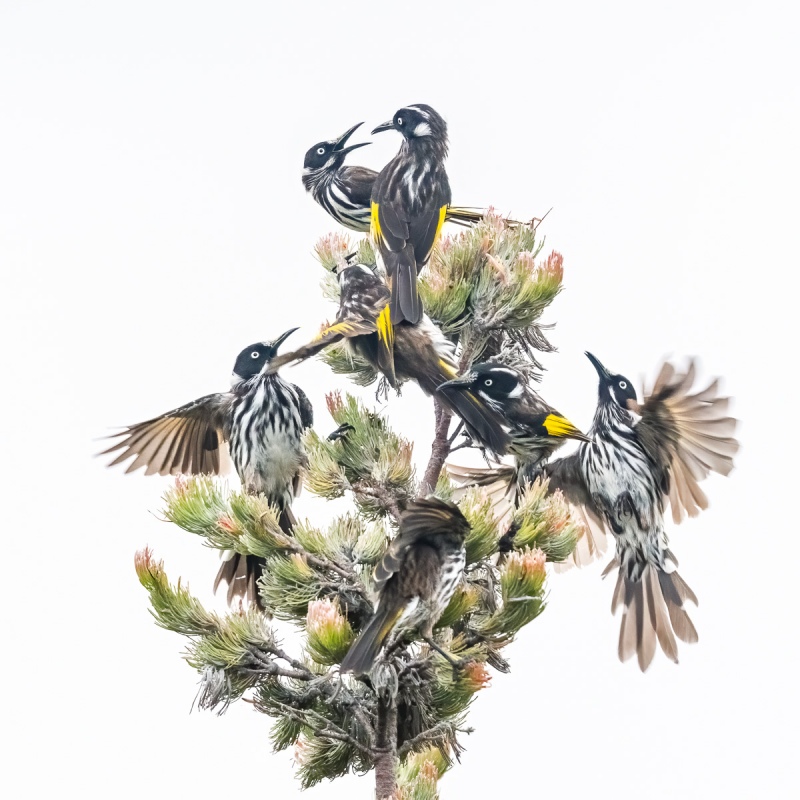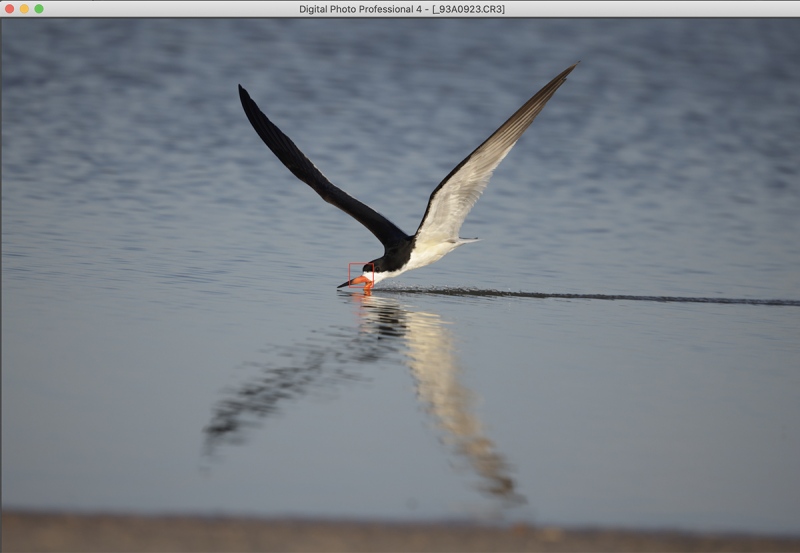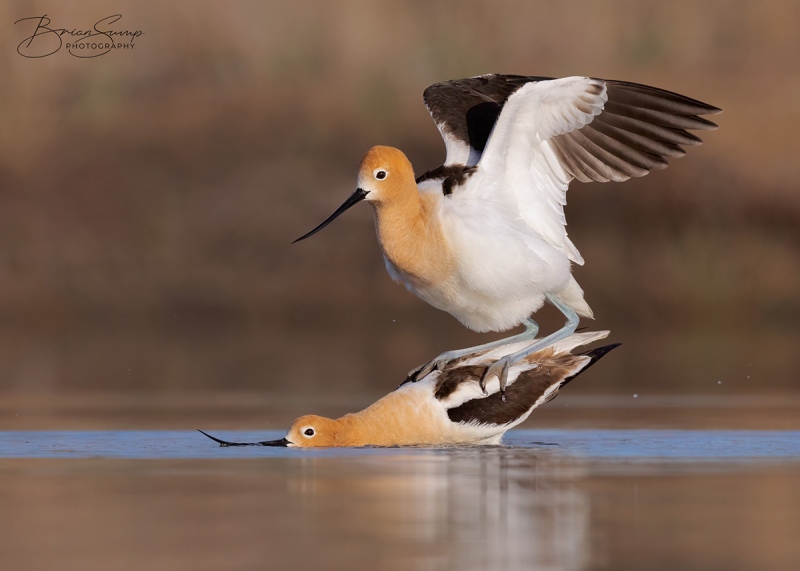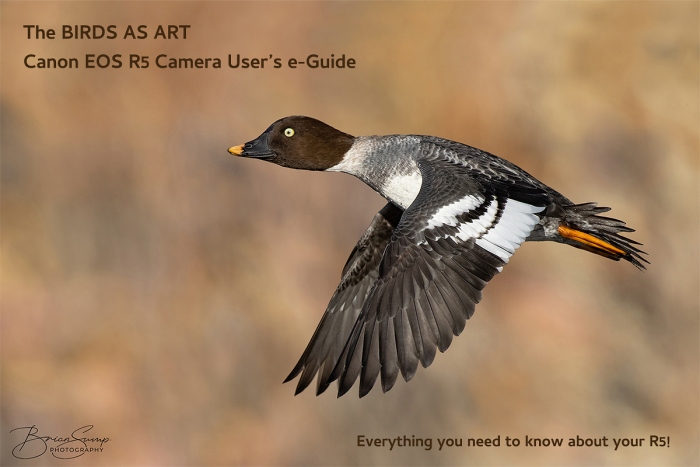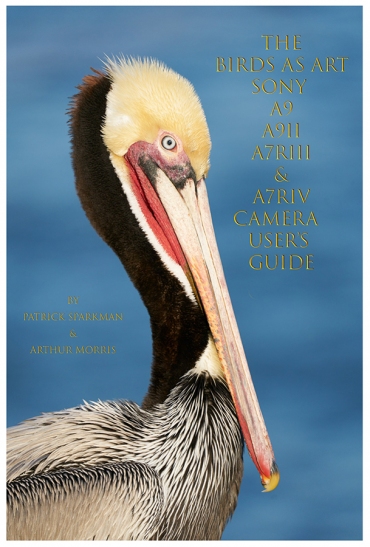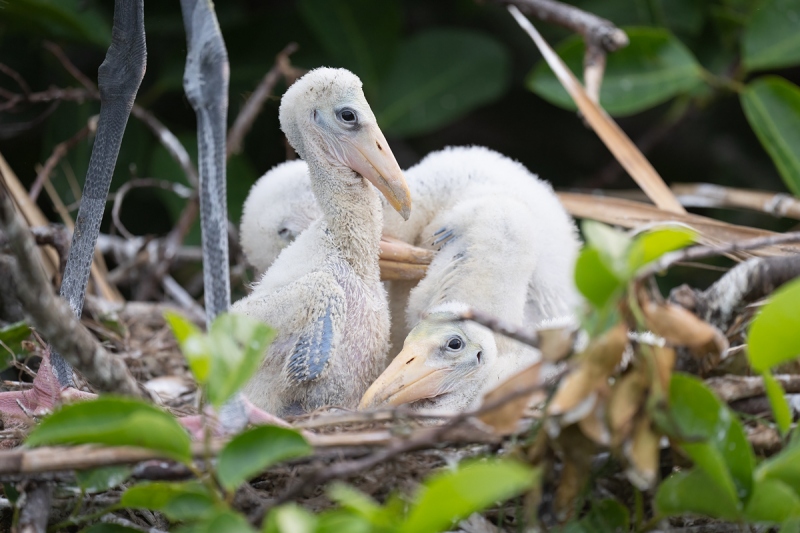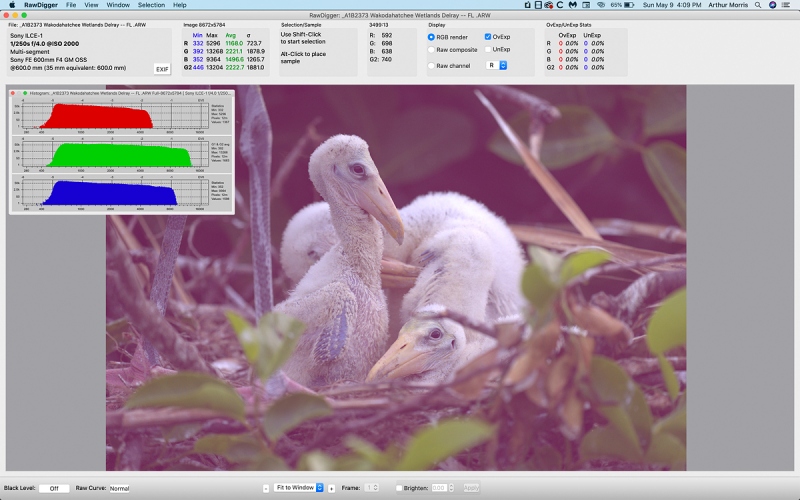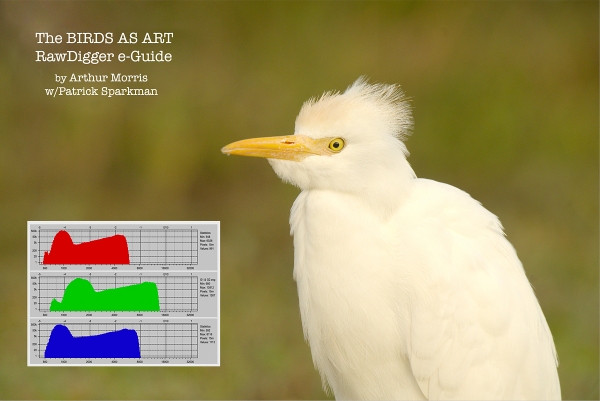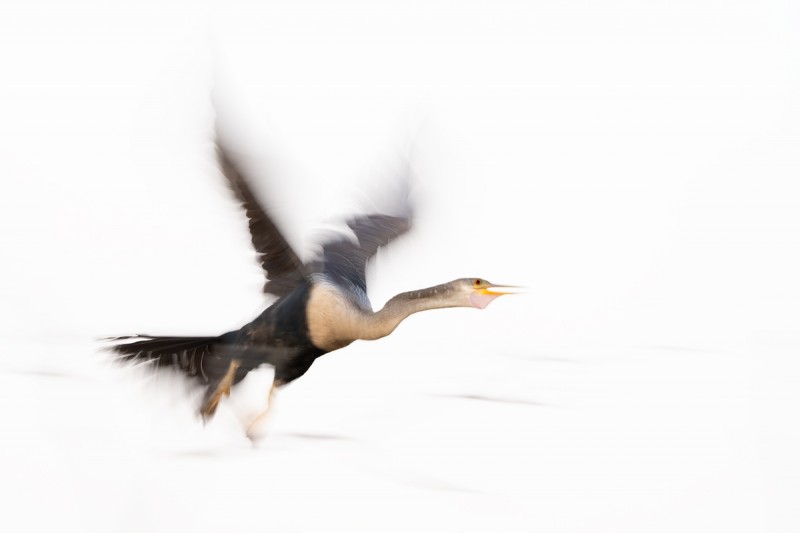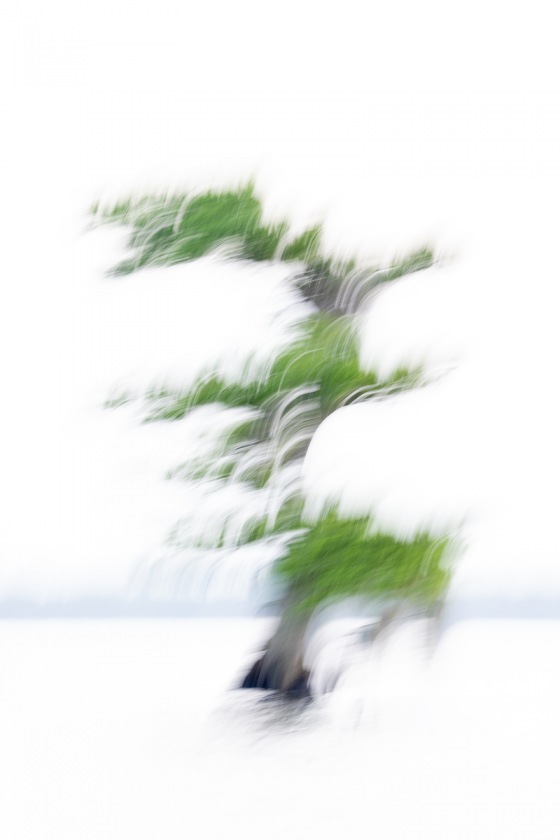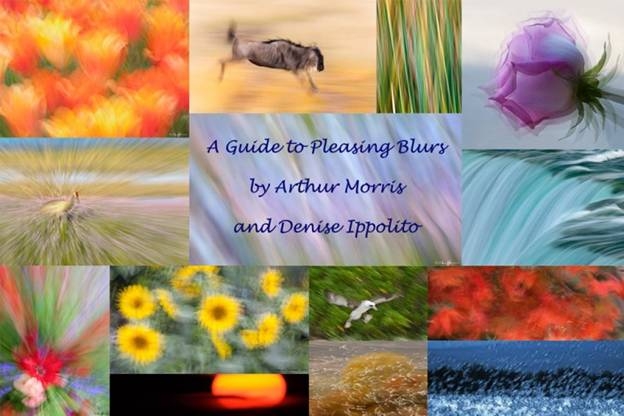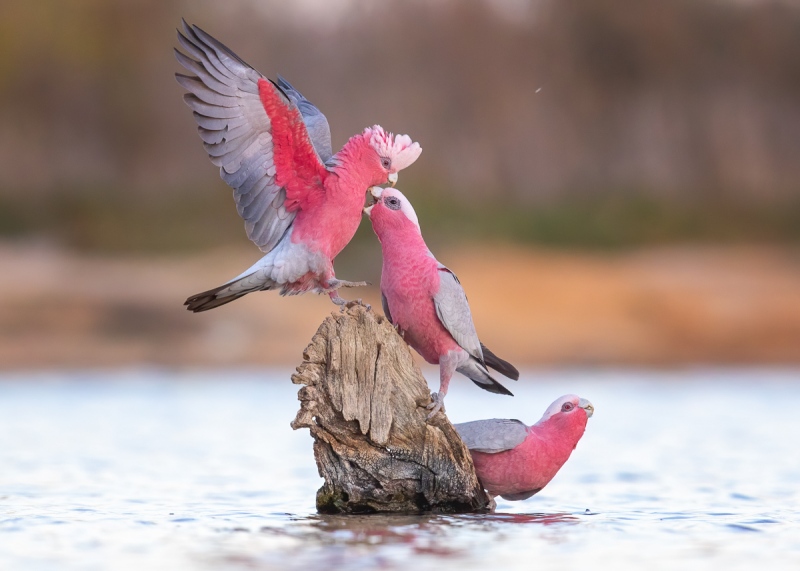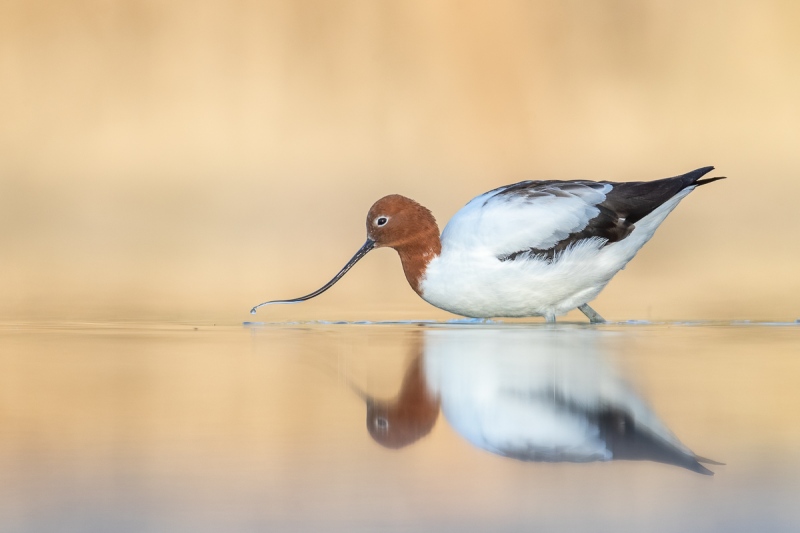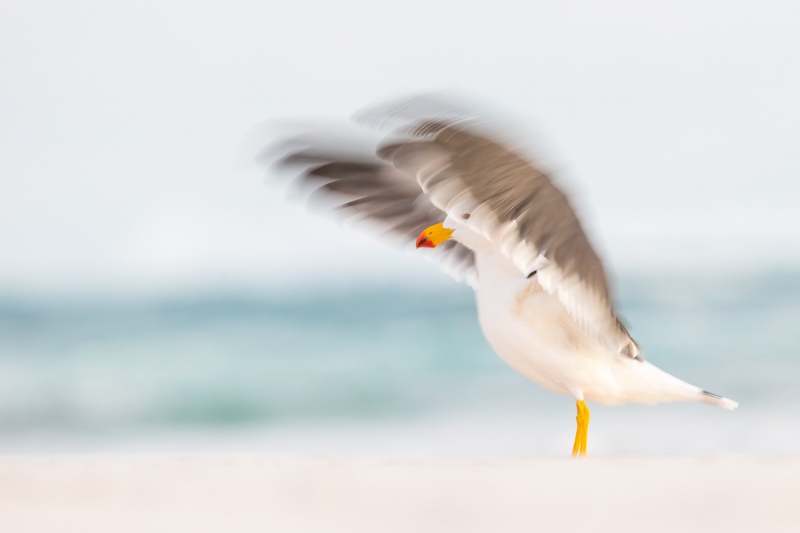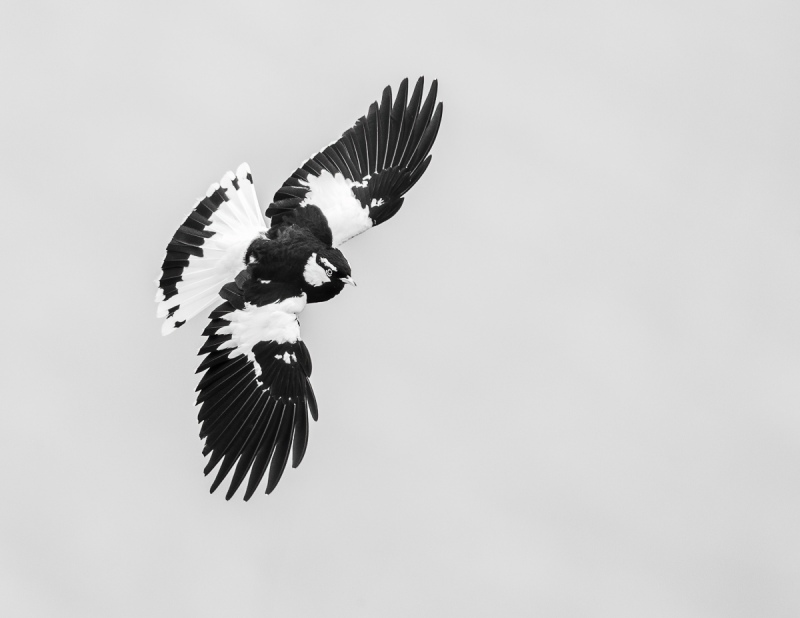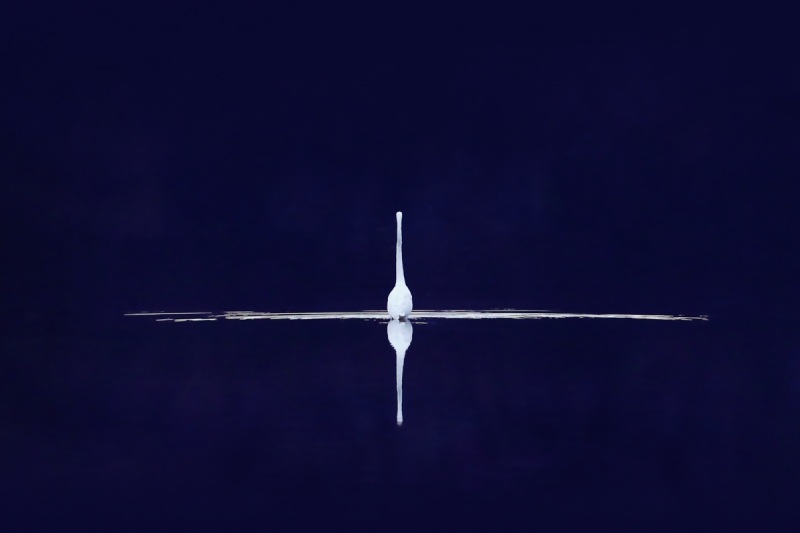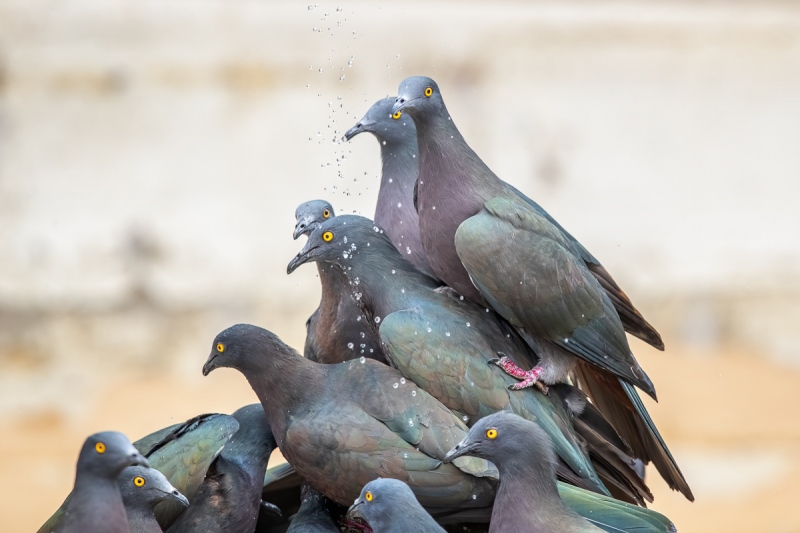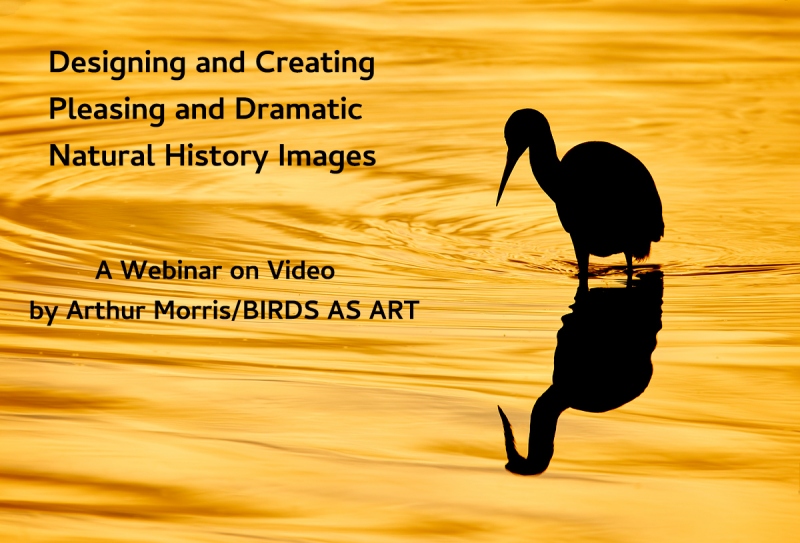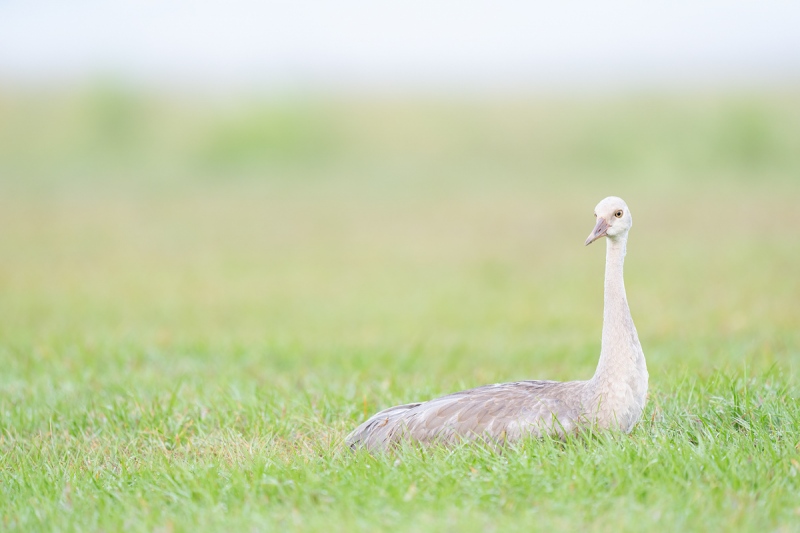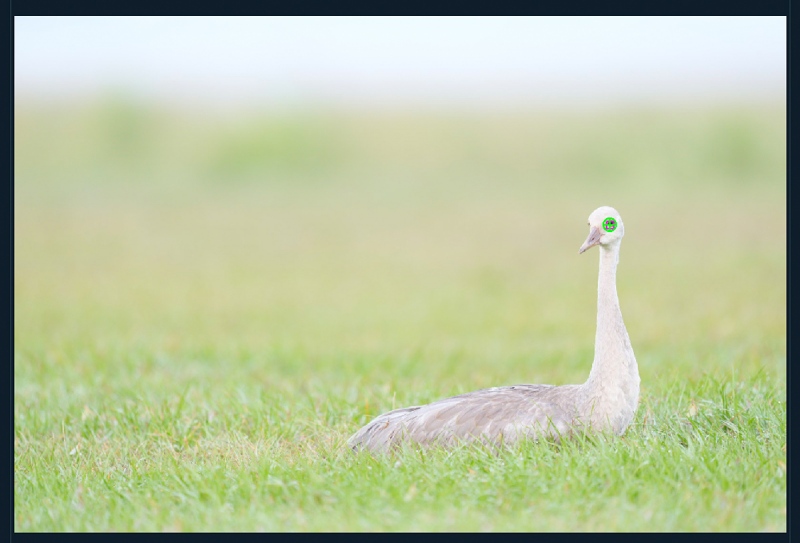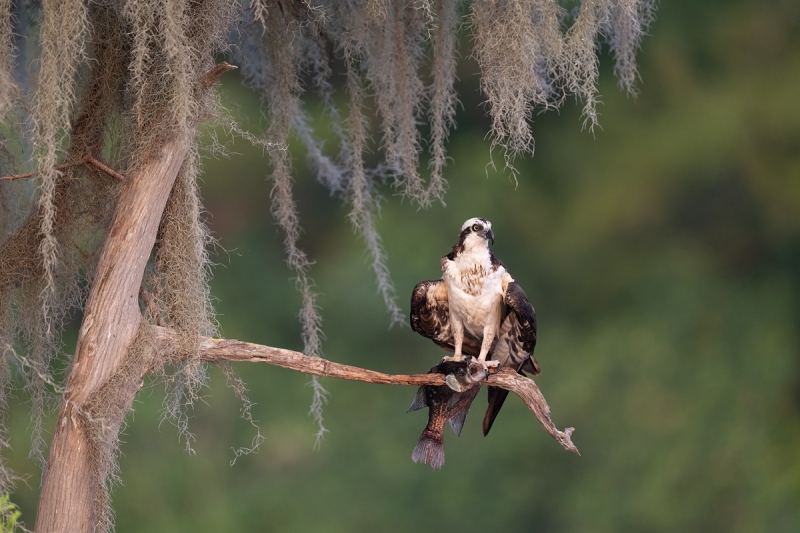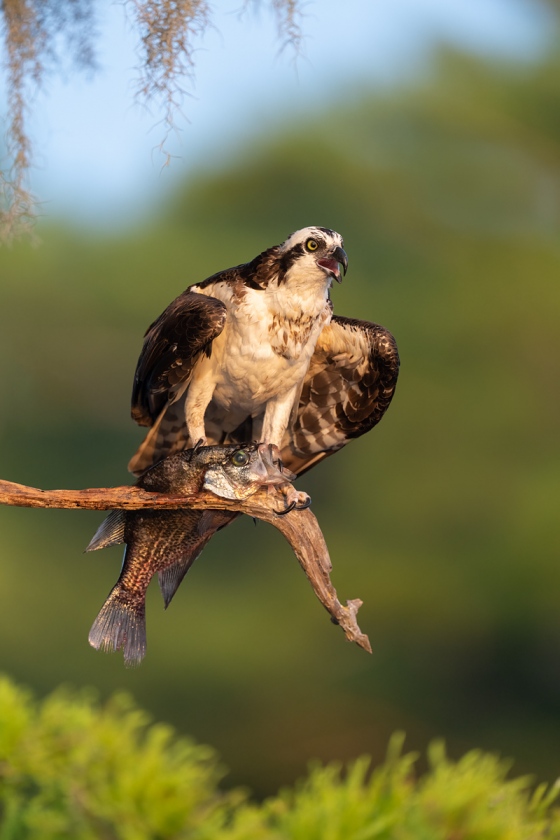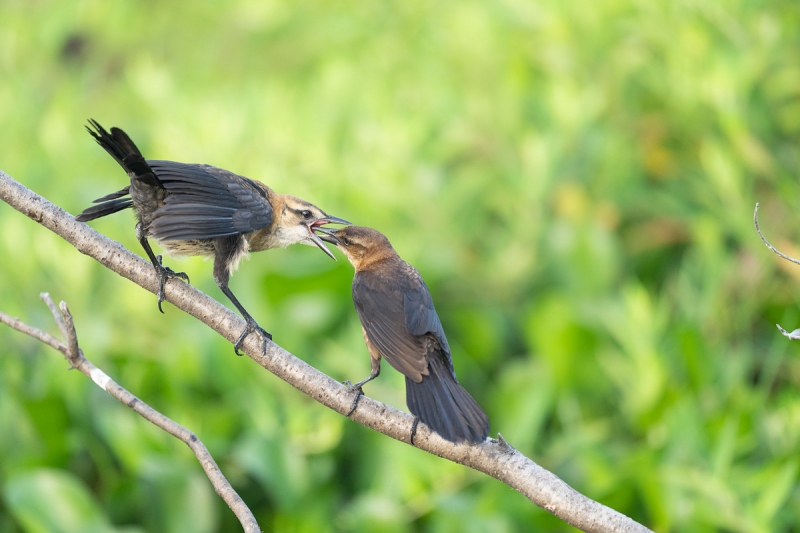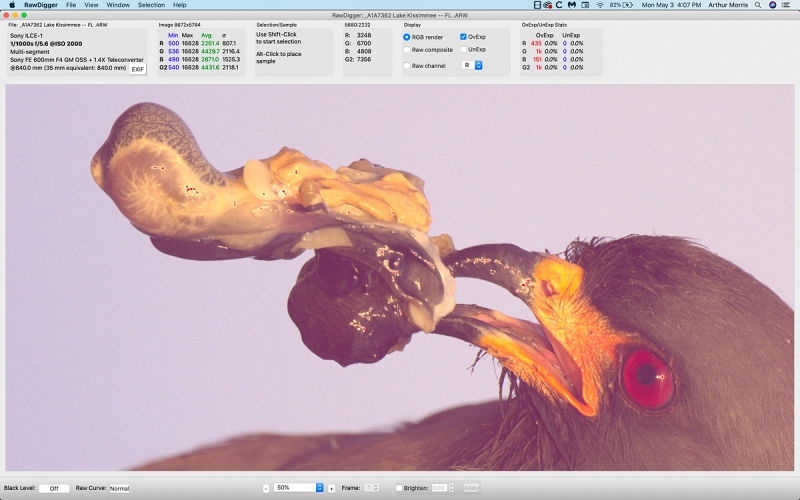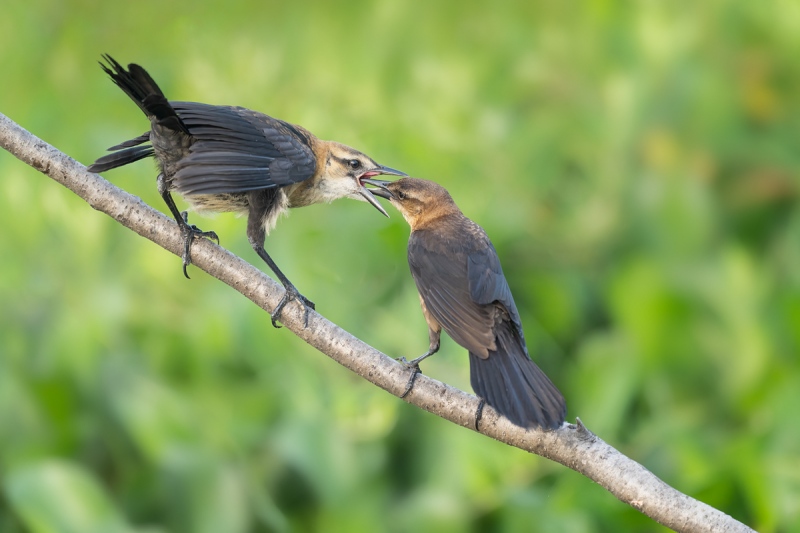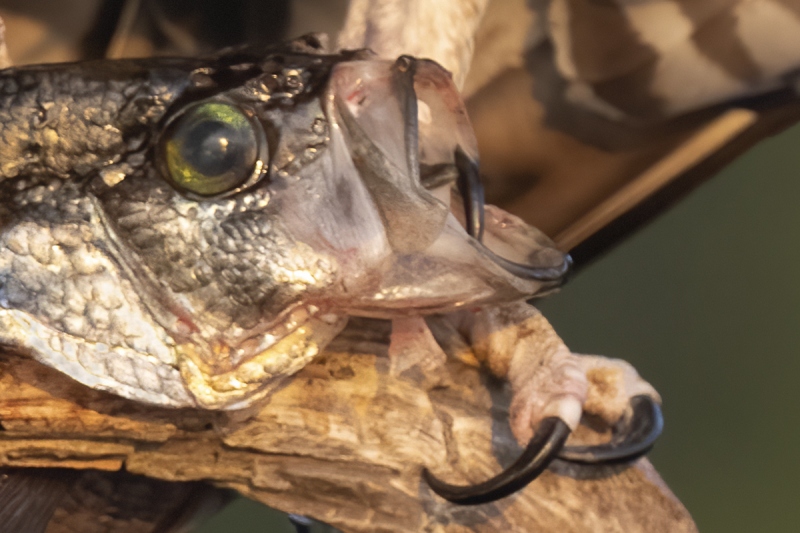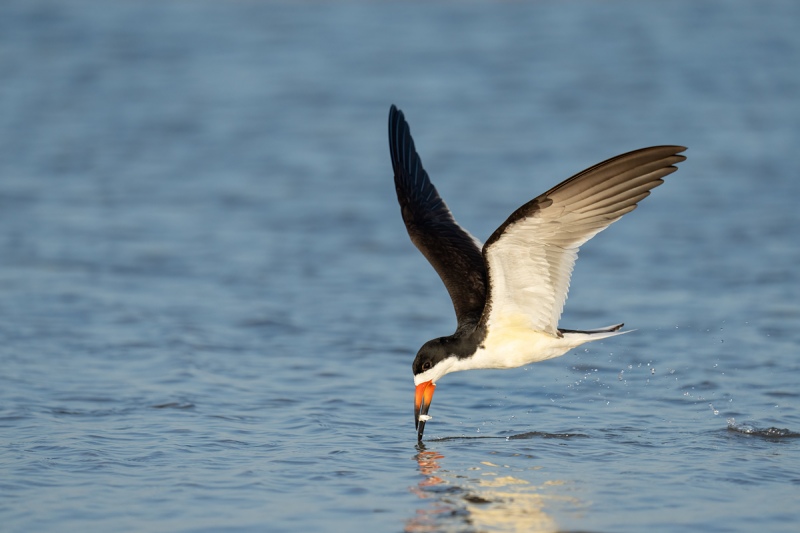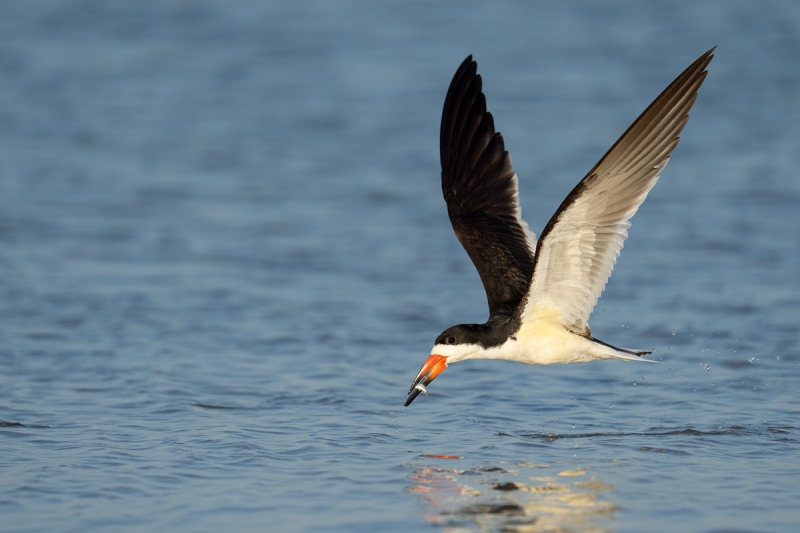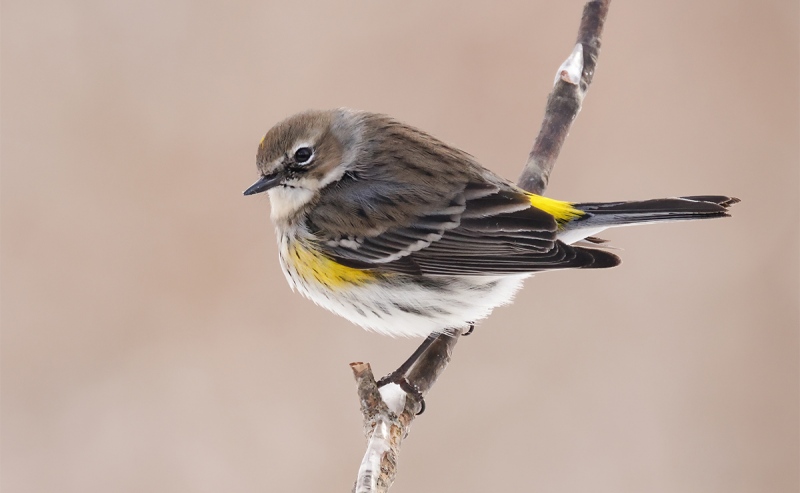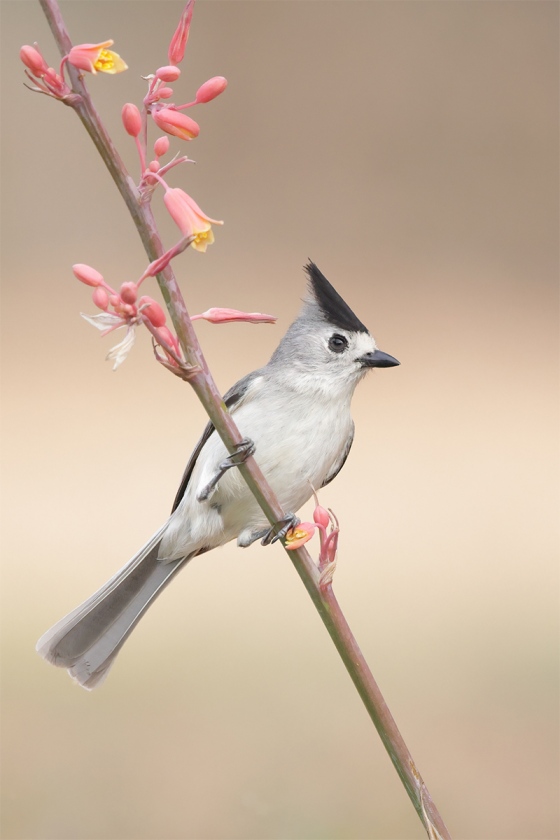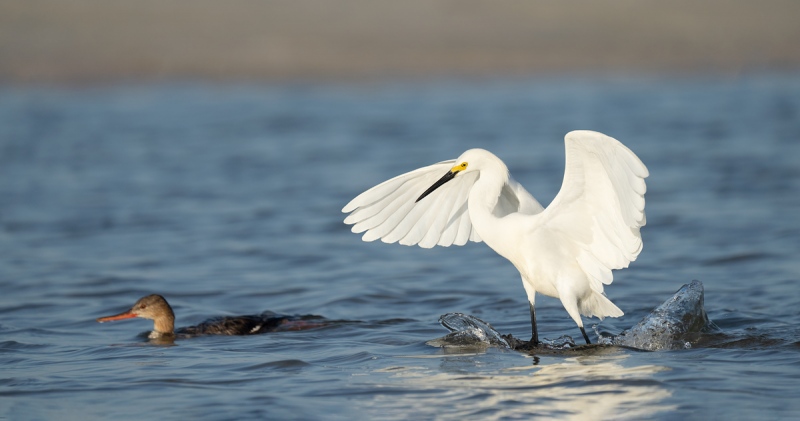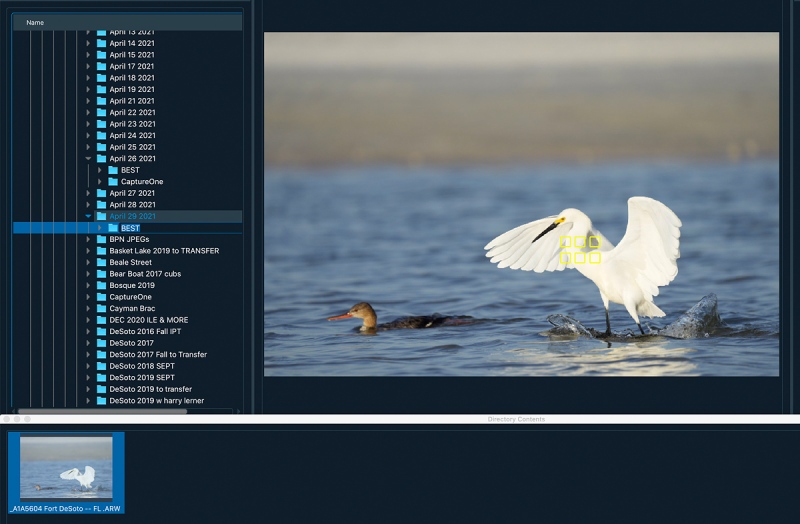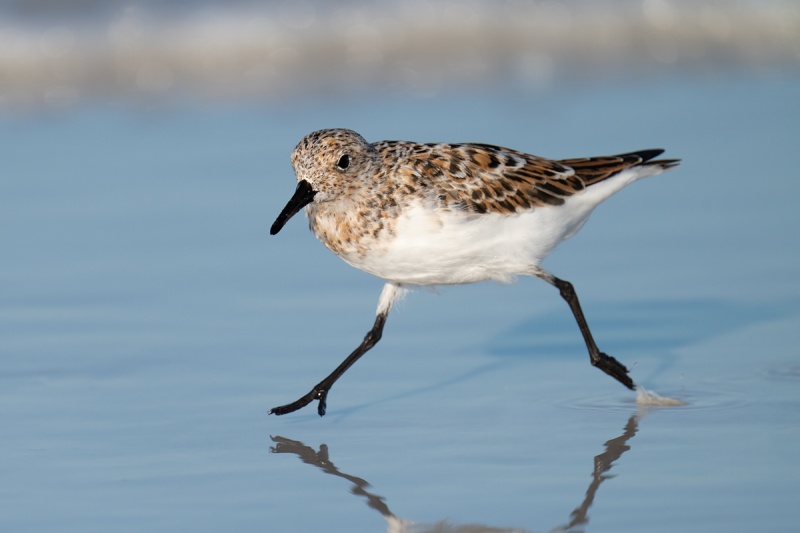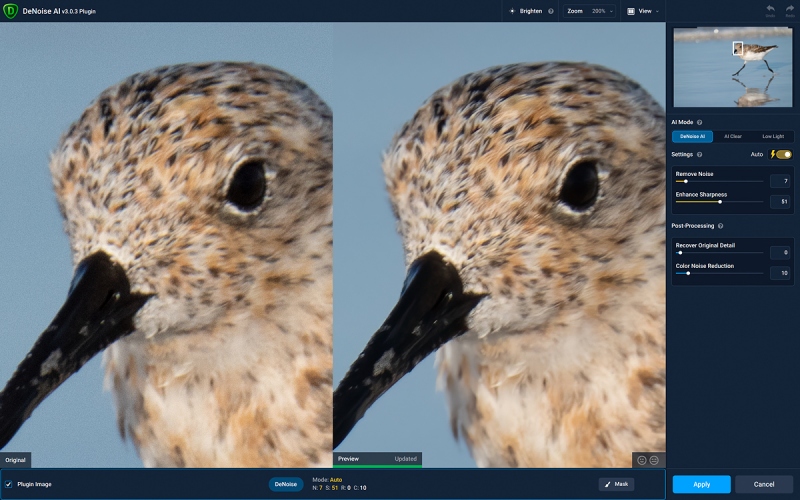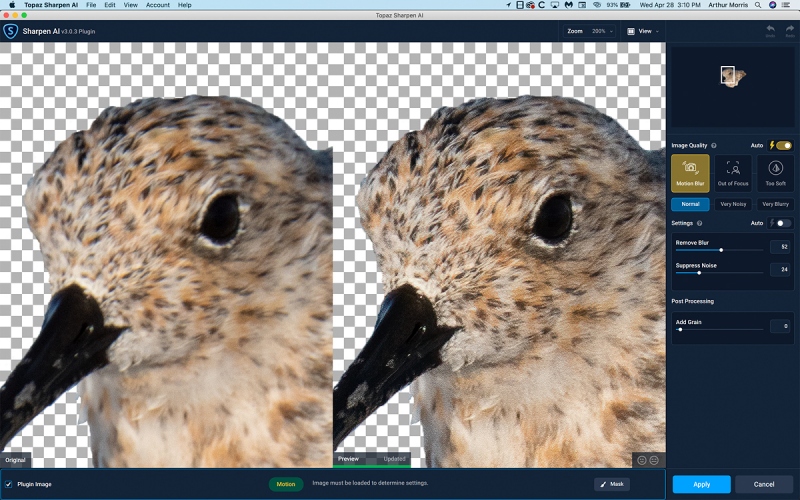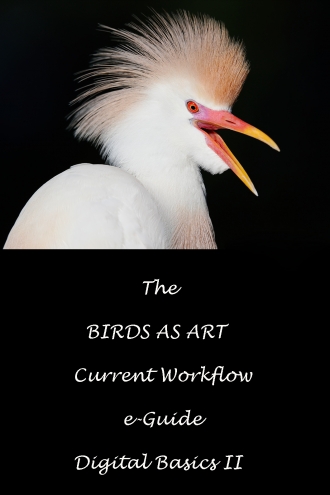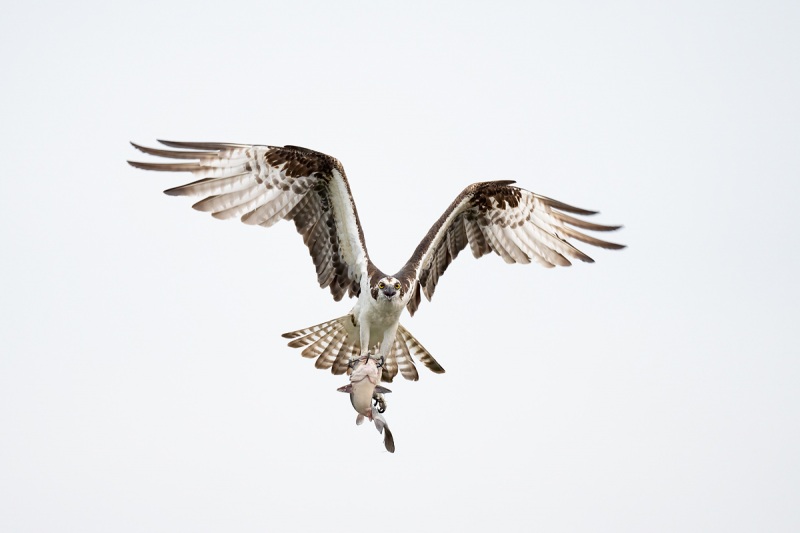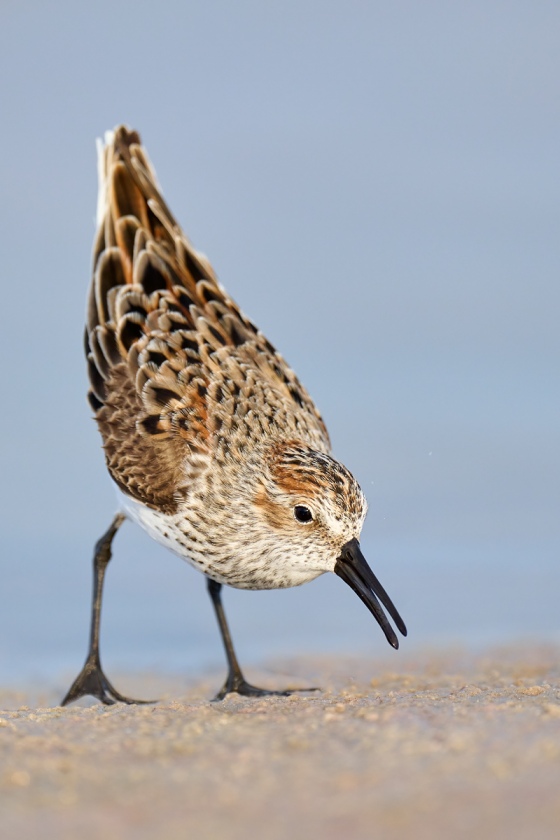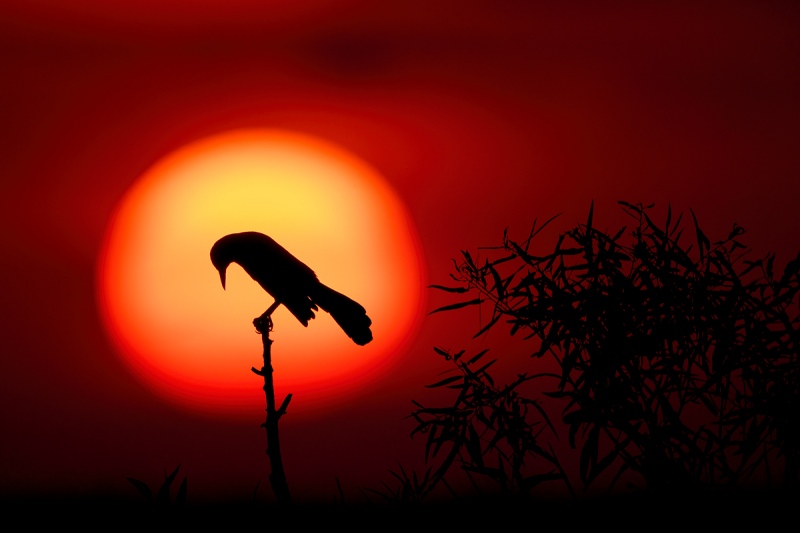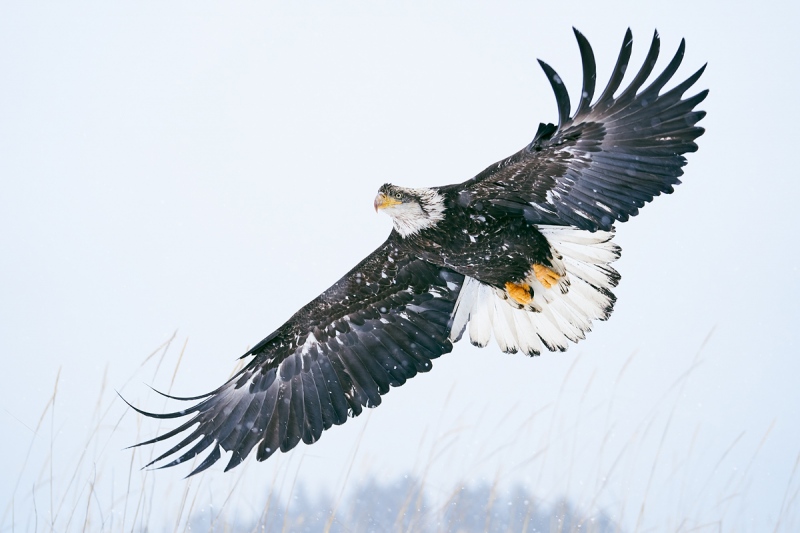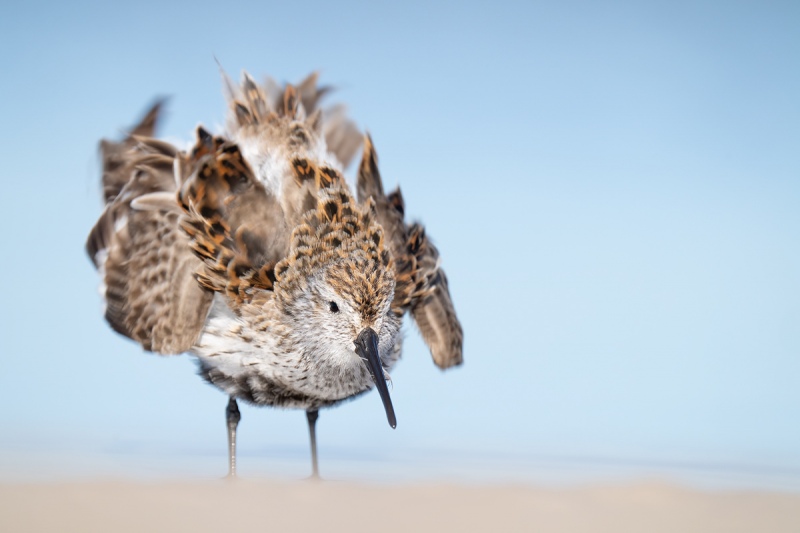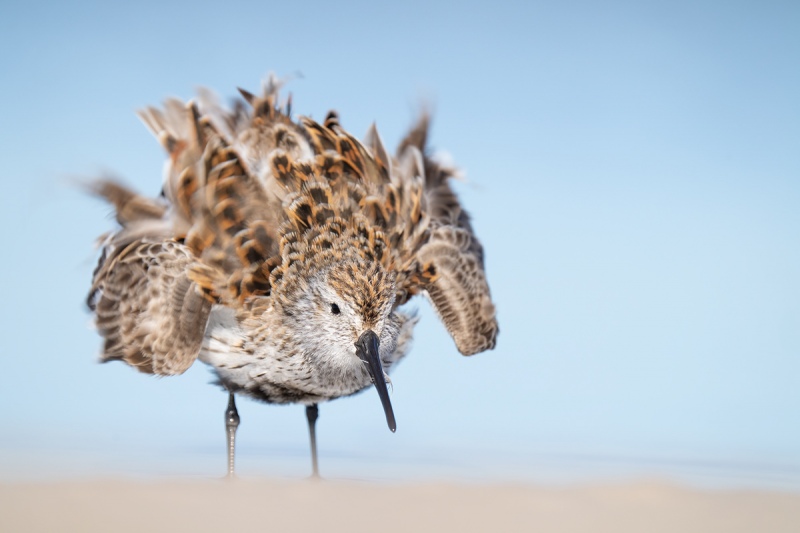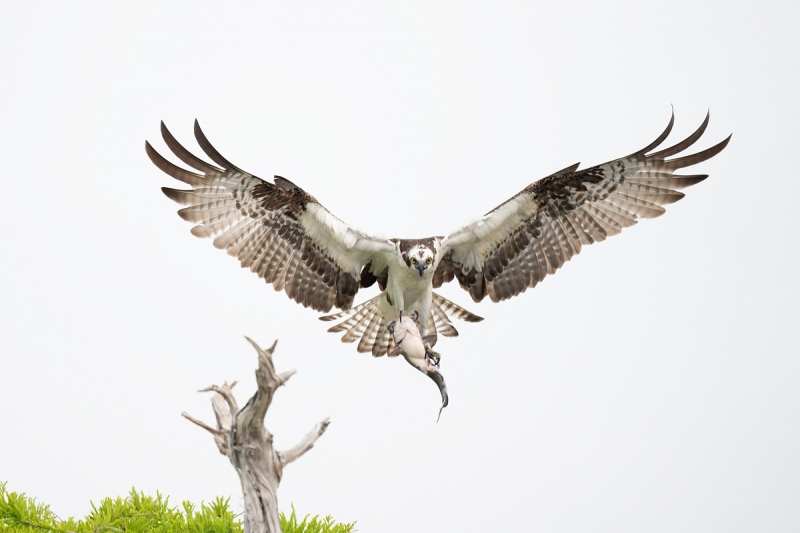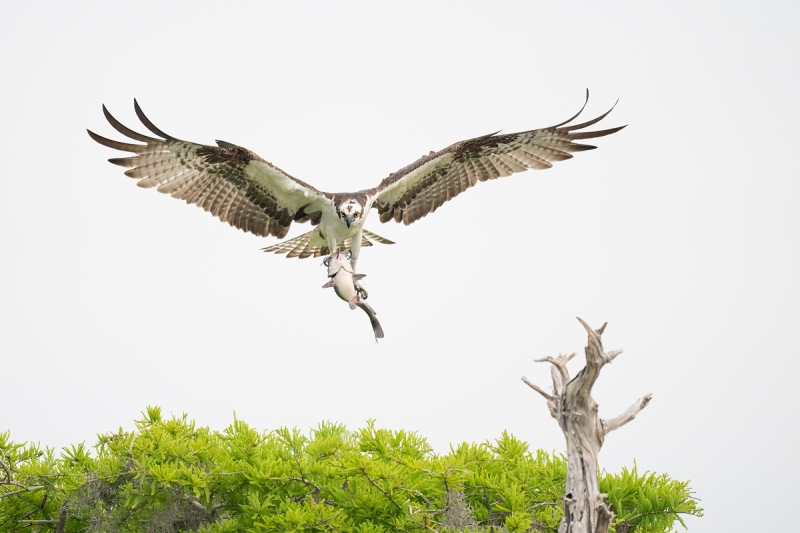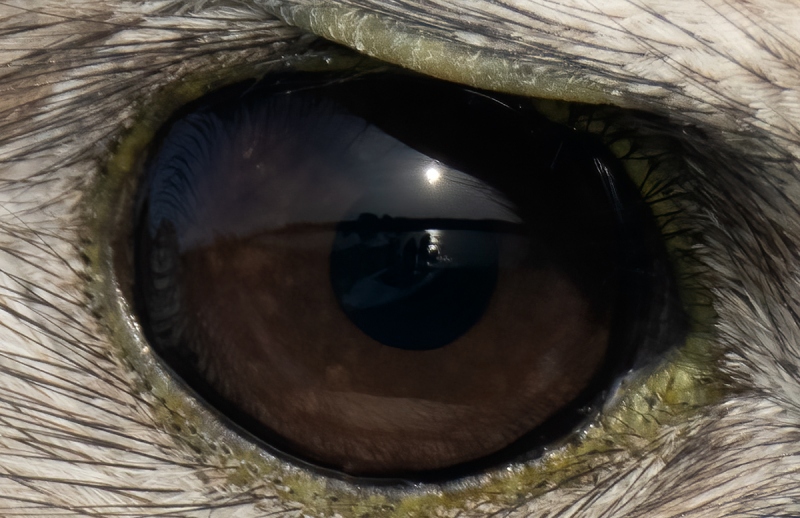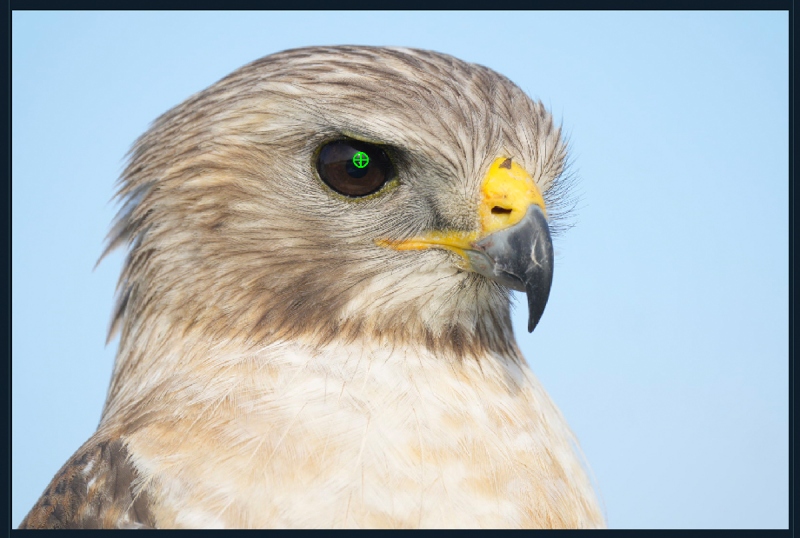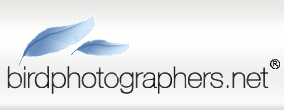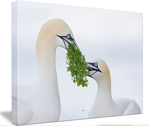May 14th, 2021 Which?
Which of today’s two featured images (made only minutes apart), is the strongest? Why?
What’s Up?
I wound up staying in on Thursday morning and worked on an e-mail for the Sony Alpha a1 Info and Updates group. New member Mike Liddick asked about the Custom Set. Memory menu item. In that highly detailed e-mail, I mentioned that one of my three huge gripes with the a1 (and with previous high-end SONY bodies as well), is that you cannot save Custom Key settings when saving a Camera Set. Memory. That makes saving a Camera Set Memory pretty much worthless to me.
I am not sure where the rest of the morning went, but I did catch up on a week’s worth of Jeopardy. An afternoon visit to the dermatologist resulted in lots of icy lesion-removals — darn, that thing burns. Dr. Hart also removed two other larger ones surgically. Those did not hurt at all.
Today is Friday 14 May 2021. The forecast for ILE this morning is calling for partly to mostly cloudy skies with light winds from the north. I will head down to the lake for a bit to see what’s up. Wherever you are, and whatever you are doing, I hope that you have a great day.
Thanks to all who shared scanning advice yesterday by leaving a comment. I did have Silver Fast with my Nikon Cool Scan; I just could not get the device to work well on a consistent basis …
This blog post took more than an hour to prepare and makes 141 consecutive days with a new one. Please remember that if an item — a Delkin flash card, or a tripod head, for example, that is available from B&H and/or Bedfords and is also available in the BAA Online Store, it would be great if you opt to purchase from us. We will match any price. Please remember also to use my B&H affiliate links or to save 3% at Bedfords by using the BIRDSASART discount code at checkout. Doing either often earns you free guides and/or discounts. And doing so always earns my great appreciation.
|
|
Designing and Creating Pleasing and Dramatic Natural History Images
A Video Webinar: $30 by electronic download
Order your copy by clicking here.
|
Designing and Creating Pleasing and Dramatic Natural History Images
A Video Webinar
In this 1 hour 28 minute plus video you will learn and be inspired. We cover everything from the very basics to the fine points. After a brief bio, the topics include Behavior, Action, Diagonal Lines, and the Cuteness Factor; Birds in Flight — The Holy Grail of Bird Photography; Mis-Framing!; Basic Image Design/HORIZONTALS: Get the subject out of the center of the frame. Basic Image Design/VERTICALS: The center of the frame is generally fine; The Importance of BACKGROUND; Isolating the Subject; Other Elements of Composition; On Getting Low; Going Wide for Bird-scapes; Super-tight!; Working in Sunny Conditions; Working in Cloudy Conditions; Working in Foggy Conditions; Working in the Shade; Working in Bad Weather; Creating Back-lit Images; Creating Silhouettes; and Creating Pleasing Blurs.
Each segment of the program consists of an average of about 15 images that will drive home the points being made, educate you, and inspire. The instructions and advice, given clearly and concisely, are based on my near-38 years of experience photographing birds with telephoto and super-telephoto lenses. And on several decades of creating educational blog posts.
This presentation is based on the webinar that I did for the South Shore Camera Club in April. You can find some of the comments below along with comments from two of the folks who viewed the webinar the night before the DeSoto IPT began.
You can order your copy of Designing and Creating Pleasing and Dramatic Natural History Images/A Video Webinar by clicking here or by calling Jim with your credit card in hand at 863-692-0906.
Please Remember
With income from IPTs now at zero, please, if you enjoy and learn from the blog, remember to use one of my two affiliate programs when purchasing new gear. Doing so just might make it possible for me to avoid having to try to get a job as a Walmart greeter and will not cost you a single penny more. And if you use Bedfords and remember to enter the BIRDSASART code at checkout, you will save 3% on every order and enjoy free second-day air shipping. In these crazy times — I am out at least forty to sixty thousand dollars so far due to COVID 19 (with lots more to come) — remembering to use my B&H link or to shop at Bedfords will help me out a ton and be greatly appreciated. Overseas folks who cannot order from the US because of import fees, duties, and taxes, are invited to help out by clicking here to leave a blog thank you gift if they see fit.
New and Better Bedfords Discount Policy!
You can now save 3% on all of your Bedfords photo gear purchases by entering the BIRDSASART coupon code at checkout. Your discount will be applied to your pre-tax total. In addition, by using the code you will get 2nd day air shipping via Fed Ex.
Grab a Nikon AF-S Teleconverter TC-14E III and save $14.99. Purchase a Canon EOS R5 and your discount will be $116.97. Purchase a Sony FE 600mm f/4 GM OSS lens and save a remarkable $389.94! Your Bedford’s purchase no longer needs to be greater than $1,000.00 for you to receive a discount. The more you spend, the more you save.
Money Saving Reminder
Many have learned that if you need a hot photo item that is out of stock at B&H and would enjoy free second-day air shipping, your best bet is to click here, place an order with Bedfords, and enter the coupon code BIRDSASART at checkout. If an item is out of stock, contact Steve Elkins via e-mail or on his cell phone at (479) 381-2592 (Central time). Be sure to mention the BIRDSASART coupon code and use it for your online order to save 3% and enjoy free 2nd-day air shipping. Steve has been great at getting folks the hot items that are out of stock at B&H and everywhere else. The wait lists at the big stores can be a year or longer for the hard to get items. Steve will surely get you your gear long before that. For the past year, he has been helping BAA Blog folks get their hands on items like the SONY a9 ii, the SONY 200-600 G OSS lens, the Canon EOS R5, the Canon RF 100-500mm lens, and the Nikon 500mm PF. Steve is personable, helpful, and eager to please.


Gear Questions and Advice
Too many folks attending BAA IPTs (remember those?) and dozens of photographers whom I see in the field and on BPN, are–out of ignorance–using the wrong gear especially when it comes to tripods and more especially, tripod heads… Please know that I am always glad to answer your gear questions via e-mail
|
|
|
This image was created on 11 May 2021 on my recent busman’s holiday at Fort DeSoto. While seated, I used the the hand held Sony FE 600mm f/4 GM OSS lens and The One, the Sony Alpha 1 Mirrorless digital camera. ISO 2000. Exposure determined via Zebras with ISO on the rear dial: 1/2500 sec. at f/4 (wide open) in Manual mode. AWB at 7:19am with clouds in the eastern sky.
Wide/AF-C was active at the moment of exposure and performed perfectly. Click on the image to see a larger version.
Image #1: Snowy Egret fishing in flight at a washover pool
|
Soft Light Flight
It’s funny. On the 2nd DeSoto IPT, I used only the hand held 200-600 G lens on our morning sessions. On my recent busman’s holiday visit I used the 600 f/4 GM lens every morning. One day I carried the 200-600 in the big pack on the rear of my X-traHand Vest (now out of production). I never even thought about using it. Understand that on clear sunny mornings the 2-6 is always my choice. Even though it is four clicks slower than the 600 (f/6.3 as compared to f/4), it is much easier to hand hold and framing the birds in flight and in action is much easier as well.
With clouds on the eastern horizon for all three of our morning visits, I grabbed the 600, an Induro tripod topped by a FlexShooter Pro, and the Panning Ground Pod. By the third day I left the tripod in the car! For both of today’s two featured images, I shot flight using a quasi-knee pod technique: I rested my left forearm on the top of my bent left leg and raised the rig with my left arm when I saw a bird take flight. This put some strain on my left shoulder.
Easy ISO Quiz
If I had been using the slower 200-600mm lens (f/6.3) instead of the faster, heavier 600mm f/4, what ISO would I have needed to keep the same exposure?
Alpha a1 AF
I kept several frames of this bird from one fishing sequence. The bird must have spotted some fish as its eyes were so large and so, so sharp, that it looked as if they were bugging out of its head. I continued to be amazed by the AF performance of the Alpha a1. If you own one and are not getting the results that you want and expect, consider joining the SONY a1 Info and Updates group. Scroll down for details.
|
|
|
This image was also created on 11 May 2021 on my recent busman’s holiday at Fort DeSoto. Again, while seated, I used the the hand held Sony FE 600mm f/4 GM OSS lens and The One, the Sony Alpha 1 Mirrorless digital camera. ISO 2000. Exposure determined via Zebras with ISO on the rear dial: 1/2000 sec. at f/4 (wide open) in Manual mode. AWB at 7:23am with clouds in the eastern sky.
Wide/AF-C was active at the moment of exposure and performed perfectly. Click on the image to see a larger version.
Image #2: Tricolored Heron Egret fishing in flight at a washover pool
|
Changing the Exposure Based on the Tonality of the Subject, and Then Getting Lucky
I knew that I had the right exposure for the Snowy Egrets tooling around the pool in the very low light. When I saw the Tricolored Heron standing on the far shore of the washover pool, I lowered my shutter speed from 1/2500 sec. to 1/2000 sec. Why? Because the whites on the tricolored are not as bright as the whites on the snowies. Darker tones need more light to be properly exposed than lighter tones.
My good thinking was rewarded when the bird took flight in search of a fish. I kept the bird in the center of the frame — always a challenge for me, and made eight out of eight sharp frames. Based on wing position, I kept only this one.
ISO versus Shoulder Pain and Dysfunction …
As noted above, with the overcast weather each day, I opted to work with the 600m f/4 to save four clicks of ISO. This is especially helpful when shooting flight and action in low light. But when shooting flight and action, it is almost always best to hand hold rather than to work on a tripod; it is easier to follow and frame the birds. But all that is true only if you are easily able to handle the weight of the faster lens … Over the last two mornings I did a lot of work with the 600 using the Panning Ground Pod. With that, there is no stress on my left shoulder. But when I work on the ground, whether sitting or lying down flat, I tend to use my right arm to get up and down. That places lots of stress on my right shoulder.
On our last morning, I handheld the big lens quite a bit while standing for both static subjects and birds fishing in the surf. Attempting to hold the big lens up for ten or twenty or more seconds, places a tremendous amount of stress on my left shoulder. By Wednesday afternoon, it was really hurting. I need to quit trying to be a hand holding hero and work with the 600 on a tripod especially when photographing static subjects …
Sony Alpha a1 AF
Barring operator error, the performance of the Sony Alpha a1 AF system at any focal length (when the a1 is set up properly as detailed in the in e-mails to the Sony Alpha a1 Info & Updates group), continues to astound me. Early on, there was lots of discussion within the group with many preferring multiple back button approaches. For me a simple shutter button approach with the right AF settings that yield 99% sharp-on-the-eye images is best. By far. It is super-simple and mega-effective. In the next SONY Alpha a1 Set-up and Info Group e-mail, I will be sharing what I have learned as to when and it what situations it is best to abandon Wide. We have already learned to limit the AF Area choices and to switch AF Areas quickly and conveniently. The default method of switching AF points with the C2 button is both slow and cumbersome.
SONY Alpha a1 Set-up and Info Group
The SONY Alpha a1 Set-up and Info Group is going great guns as folks chime in with thoughtful questions and experience-based advice. We are now up to an astounding 41 folks. Early on, we discussed the myriad AF options. I gave my opinion as to the best one for flight and general bird photography. More recently, we have been in contact with folks at SONY sharing our thoughts, experiences, and frustrations with the EVF blackout problem.
All who purchased their Alpha a1 bodies via a BAA affiliate link will receive a free subscription to the Sony Alpha a1 Set-Up and Info Updates after shooting me their receipts via e-mail. (Note: it may take me several days to confirm B&H orders.) This same service may be purchased by anyone with an a1 body via a $150.00 PayPal sent to birdsasart@verizon.net indicating payment for Alpha a1 Info Updates. Alternatively, folks can call Jim weekdays at 1-863-692-0906 to pay via credit card. New members will receive composite e-mails that summarize all previous discussions.
Typos
With all blog posts, feel free to e-mail or to leave a comment regarding any typos or errors.
May 13th, 2021 What’s Up
On our last morning at DeSoto there were some egrets in the washover pond, but with few baitfish, there was very little action. Working on the Panning Ground Pod with the 600 f/4GM lens, I went after some more eye-level Marbled Godwit images using the rear monitor. After a bit, I added the 1.4X TC. Several really sweet Dunlins made their way into the shallow pool I was working. I did well. My problem the previous day was that the Dunlin never stopped their rapid, sewing-machine-like feeding. After about ten minutes, four Dunlin, lit by soft early sunlight, decided to stop and stand right in front of me and right down sun angle to rest and preen. I made a lot of images. Really fine images.
At times I sat with the lens at ground level and worked off the monitor. At times I got down flat on the muck and worked through the viewfinder. And at times I lay on the sandy mud and worked off the monitor. The advantage of the latter is that it is much easier for me to see what is going on without my glasses as I am only a few inches from the monitor. When I am sitting and using the rear monitor my left eye is about 20 inches from the monitor; without my glasses, I am often guessing as to the AF performance and the orientation and head angle of the subject.
Next I decided to try to get close to the Red Knot flock on a different flat that abutted the lagoon. They were much tamer than they had been the day before. I got on the ground easily at about fifty yards and advanced slowly mostly by rolling. Yes, rolling. No matter how I advanced, both shoulders were hurting. After about an hour, I had moved about 40 yards and gotten within about ten yards of the birds — easy pickings at 1200mm on a then-cloudy/very bright morning. But the flock was tightly packed; isolating a single bird was close to impossible. I did get one pretty nice bird sleeping and was able to isolate a single preening Dublin, but that was about it.
Today is Thursday 13 May. The forecast for this morning at ILE is for partly cloudy turning cloudy with a northeast wind … I have not decided whether or not to head down to the lake as I need to get some work done for the Sony Alpha a1 Info and Updates group. Wherever you are, and whatever you are doing, I hope that you have a great day.
This blog post took more than 2 hours to prepare and makes 140 straight days with a new one. Please remember that if an item — a Delkin flash card, or a tripod head, for example, that is available from B&H and/or Bedfords and is also available in the BAA Online Store, it would be great if you opt to purchase from us. We will match any price. Please remember also to use my B&H affiliate links or to save 3% at Bedfords by using the BIRDSASART discount code at checkout. Doing either often earns you free guides and/or discounts. And always earns my great appreciation.
|
|
|
Notice the under-side of the right sleeve of my sun protective blouse. You can tell that I had been doing lots of crawling on my belly in the muck.
artie after Gulf bath. Image courtesy of and copyright 2021: Anita North
|
Cleaning Up at the Beach
It seemed as if I had been photographing for many hours; I thought that it was after eleven. So I headed back to the car, wet and covered in sand from head to toe. I was shocked to see that it was only 9:30am. Anita had headed off early to the far north end of Outback Key. I thought that she might already be back to the car. She was not. I called her cell and got her. She was headed back, but was still about 15 minutes away. I asked her to meet me at the Gulf beach in front of the parking lot and she did. Then, with all of my clothes on, I went for a delightful swim to get cleaned up a bit, albeit in saltwater. At my request, she created a few before snaps of me (dirty and sandy), and a few after snaps (cleaner and wetter), with her 200-600.
Now I was ready for a grand shower in the men’s room bathhouse at North Beach. Several years back, they redid the showers, but removed the bench and the clothes hooks. I was puzzled as to why. So anyhoo, I walk in, go around the new partition, and much to my surprise, I see a lovely, wide wooden bench. Could it get any better? So I put my complete change of clothes on the bench along with a brand new can of Johnson’s baby powder, my sandals, my robe, and a clean towel. I get out of my wet, sandy clothes and turn around. There I see eight very clean shower stalls. With all of the plumbing removed. As Anita would say, “Rotter!”
So I put my wet, sandy clothes back on and headed to the multi-level outdoor sprinkler/shower nearby. I took a nice shower, eventually stripping down to just my green Jockey shorts. Yikes! (No pictures of that, thank the lord.) I quickly put on my robe, made my way back to the bench, powdered my feet, and got dressed.
On the way back to ILE we stopped at Bass Pro Shops in Brandon for a bit of shopping, at Starbucks in Bartow (so Anita could get another fix), and at Publix in Lake Wales to pick up something for dinner. We got back to ILE at about 3:30pm. It was just another exciting day in the life of a professional bird photographer.
Scanning Help Needed
If you know anything about scanning slides, please leave a comment below or contact Jeff Walters via e-mail.
Jeff Walters/May 12, 2021 at 4:42 pm
Great skimmer shots and mating avocets images show truly why I love bird photography. Thanks to your friends for sharing their images and thank-you for bringing them to us in your blog.
If you had a mess of old slides, how would you go about digitizing them today, sir? And could it be done for a reasonable cost? I ask, because seeing the skimmer image reminds me of shots I have on slide film from years past. I have many terrific skimmers shots, and image of many other species from wetlands on slide film. I would love to find an affordable way to get them converted to digital. Anyone’s comments or assistance would be most appreciated and especially any guidance from you Artie! Thanks to all.
Arthur Morris/BIRDS AS ART/May 12, 2021 at 7:27 pm
Hi Jeff,
Scanning slides is not my area of expertise … Lots of folks (including me), used something like a Nikon Cool Scan. Or tried to. Most of the time, it did not work at all. When it did, the results were not very good. Getting a drum scan is best but they are expensive. I will run this in the blog and see if anyone can help. Don’t forget that compared to digital, film sucks. Period. So it stands to reason that by scanning something that sucks to being with, you will wind up with something that sucks … If you follow my drift.
with love, artie
ps: if you do want to have some slides scanned, I would limit that to your very strongest images …
Bedfords
The very affable Steve Elkins asked me to let you know that Bedfords has many Canon R5 bodies in stock right now. He is expecting some Control Ring Adapters, more than a few Canon RF 70-200s, and several RF 800mm lens in a day or two. Don’t forget to save 3% at Bedfords (and enjoy free 2nd-Day Air fed-Ex) by using the BIRDSASART discount code at checkout.
Please Remember
With income from IPTs greatly reduced, please — if you learn from and enjoy the blog, remember to use one of my two affiliate programs when purchasing new gear. Doing so just might make it possible for me to avoid having to try to get a job as a Walmart greeter and will not cost you a single penny more. And if you use Bedfords and remember to enter the BIRDSASART code at checkout, you will save 3% on every order and enjoy free second-day air shipping. In these crazy times — I am out at least forty to sixty thousand dollars so far due to COVID 19 (with lots more to come) — remembering to use my B&H link or to shop at Bedfords will help me out a ton and be greatly appreciated. Overseas folks who cannot order from the US because of import fees, duties, and taxes, are invited to help out by clicking here to leave a blog thank you gift if they see fit.
New and Better Bedfords Discount Policy!
You can now save 3% on all of your Bedfords photo gear purchases by entering the BIRDSASART coupon code at checkout. Your discount will be applied to your pre-tax total. In addition, by using the code you will get 2nd day air shipping via Fed Ex.
Grab a Nikon AF-S Teleconverter TC-14E III and save $14.99. Purchase a Canon EOS R5 and your discount will be $116.97. Purchase a Sony FE 600mm f/4 GM OSS lens and save a remarkable $389.94! Your Bedford’s purchase no longer needs to be greater than $1,000.00 for you to receive a discount. The more you spend, the more you save.
Money Saving Reminder
Many have learned that if you need a hot photo item that is out of stock at B&H and would enjoy free second-day air shipping, your best bet is to click here, place an order with Bedfords, and enter the coupon code BIRDSASART at checkout. If an item is out of stock, contact Steve Elkins via e-mail or on his cell phone at (479) 381-2592 (Central time). Be sure to mention the BIRDSASART coupon code and use it for your online order to save 3% and enjoy free 2nd-day air shipping. Steve has been great at getting folks the hot items that are out of stock at B&H and everywhere else. The wait lists at the big stores can be a year or longer for the hard to get items. Steve will surely get you your gear long before that. For the past year, he has been helping BAA Blog folks get their hands on items like the SONY a9 ii, the SONY 200-600 G OSS lens, the Canon EOS R5, the Canon RF 100-500mm lens, and the Nikon 500mm PF. Steve is personable, helpful, and eager to please.


Gear Questions and Advice
Too many folks attending BAA IPTs (remember those?) and dozens of photographers whom I see in the field and on BPN, are–out of ignorance–using the wrong gear especially when it comes to tripods and more especially, tripod heads… Please know that I am always glad to answer your gear questions via e-mail.
Georgina Steytler
In the Australian Lady Bird Photographer Georgina Steytler Creates High-Key, Soft Light, and Dramatic Stunners … blog post here, all were invited to leave a comment listing no more than three of their favorite images created by the quite amazing Georgina Steytler and to let us know why they made their choice or choices.
Lots of folks commented on the superb artistry of the collection, but only a few were specific. Including my favorites, Image #7: New Holland Honeyeaters, was the leader with three mentions. The Red-capped Parrot on Bottlebrush, #3, the Pacific Black Duck, #5, and the Great Egret abstract, #9, all garnered three mentions. The Pacific-Gull flapping, #4, and Red-capped Plover on the run, each were mentioned once.
Though there is — of course — no rights or wrongs when judging the artistic merits of photographs, Phill Bird echoed my feelings when he wrote:
Thanks for introducing us to Georgina’s work, Artie. Lots of fantastic images and the standout for me is the Red-capped Parrot. The parrot’s beautiful coloring standing out in the misty lighting and the inclusion of the quintessentially Australian Bottlebrush in the composition appeals greatly to me.
As always, remember that looking at (and evaluating) great imagery is one of the very best ways to improve your own photography … You can see my three favorites by scrolling down.
|
|
Image #3: Red-capped Parrot on Bottlebrush. Image courtesy of and copyright 2018: Georgina Steytler
|
My Very Favorite Georgina Steytler Image
I fell in love with this one the moment I saw it as I am a sucker for a good watercolor. The bird is sharp and perfectly positioned in the frame. And the pastel colors are incredible. The erect pose is perfect as is the selective focus on the subject. Your eye is led around the frame from the REDs on the bird to the REDs in the flower and also by the sharp to soft transitions.
|
|
Image #5: Pacific Black Duck preening. Image courtesy of and copyright 2018: Georgina Steytler
|
My First Tied-for-Second Favorite Georgina Steytler Image
With the vibrant colors of the duck’s speculum and the striking black background, this is another spectacular image. I am, however, betting that Georgina wished she had pointed her lens down just a bit so as to include more of (if not the complete) reflection … Do notice that this one works very well despite the fact that we see neither the bird’s eyes nor its face. You are the artist; you get to break the rules with purpose.
|
|
Image #7: New Holland Honeyeaters. Image courtesy of and copyright 2018: Georgina Steytler
|
My Second Tied-for-Second Favorite Georgina Steytler Image
Note: this section of the blog was inadvertently deleted but I am not sure when that happened. I am restoring it just after noon on 14 May.
Here we have another watercolor-like photo with tons of action and interaction. That five of the seven honeyeaters are not only facing the camera but have excellent head angles is quite amazing. And the squabbling pair at the top is the proverbial icing on the cake.
Typos
With all blog posts, feel free to e-mail or to leave a comment regarding any typos or errors.
May 12th, 2021 What’s Up?
We had a second great morning at DeSoto with a big wading bird feeding spree. Before the sun came over the one big cloud in the east, I got a few killers on Snowy Egret and Tricolored Heron hand holding the 600 f/4 GM lens. Once again, the Red Knots proved to be elusive. I did get some nice ground level images of Marbled Godwit at 840mm and Dunlin and Semipalmated Plover at 1200mm with the Panning Ground Pod. There will be lots more on that technique here soon. I just missed on a female frigatebird diving very close to shore … The tally for the morning was 1568 images made, 1428 deleted, and 140 keepers after the first edit.
Tired of slogging around in the sand and mud and walking too far in the heat on the beach, Anita and I opted to explore a rookery north of Tampa that she learned about from Dr. Tom, a very nice man she met on the beach at DeSoto. It was pretty productive. There were lots of Wood Storks and Great Egrets. The highlight of the session for me was a just-out-of-the-nest Black-crowned Night Heron. It played hide and seek with me for two hours before landing atop a bush and posing for vertical head and neck portraits right before we left.
Today is Wednesday 12 May. We will be heading to DeSoto early for the third straight morning and then driving back to ILE. The forecast for St. Pete is for mostly cloudy with a gentle southeast breeze, in other words, hazy, hot and humid. Wherever you are, and whatever you are doing, I hope that you have a great day.
This blog post took almost two hours to prepare and makes 139 straight days with a new one. Please remember that if an item — a Delkin flash card, or a tripod head, for example, that is available from B&H and/or Bedfords and is also available in the BAA Online Store, it would be great if you opt to purchase from us. We will match any price. Please remember also to use my B&H affiliate links or to save 3% at Bedfords by using the BIRDSASART discount code at checkout. Doing either often earns you free guides and/or discounts. And always earns my great appreciation.
Bedfords
The very affable Steve Elkins asked me to let you know that Bedfords has many Canon R5 bodies in stock right now. He is expecting some Control Ring Adapters, more than a few Canon RF 70-200s, and several RF 800mm lens in a day or two. Don’t forget to save 3% at Bedfords (and enjoy free 2nd-Day Air fed-Ex) by using the BIRDSASART discount code at checkout.
Please Remember
With income from IPTs greatly reduced, please — if you learn from and enjoy the blog, remember to use one of my two affiliate programs when purchasing new gear. Doing so just might make it possible for me to avoid having to try to get a job as a Walmart greeter and will not cost you a single penny more. And if you use Bedfords and remember to enter the BIRDSASART code at checkout, you will save 3% on every order and enjoy free second-day air shipping. In these crazy times — I am out at least forty to sixty thousand dollars so far due to COVID 19 (with lots more to come) — remembering to use my B&H link or to shop at Bedfords will help me out a ton and be greatly appreciated. Overseas folks who cannot order from the US because of import fees, duties, and taxes, are invited to help out by clicking here to leave a blog thank you gift if they see fit.
New and Better Bedfords Discount Policy!
You can now save 3% on all of your Bedfords photo gear purchases by entering the BIRDSASART coupon code at checkout. Your discount will be applied to your pre-tax total. In addition, by using the code you will get 2nd day air shipping via Fed Ex.
Grab a Nikon AF-S Teleconverter TC-14E III and save $14.99. Purchase a Canon EOS R5 and your discount will be $116.97. Purchase a Sony FE 600mm f/4 GM OSS lens and save a remarkable $389.94! Your Bedford’s purchase no longer needs to be greater than $1,000.00 for you to receive a discount. The more you spend, the more you save.
Money Saving Reminder
Many have learned that if you need a hot photo item that is out of stock at B&H and would enjoy free second-day air shipping, your best bet is to click here, place an order with Bedfords, and enter the coupon code BIRDSASART at checkout. If an item is out of stock, contact Steve Elkins via e-mail or on his cell phone at (479) 381-2592 (Central time). Be sure to mention the BIRDSASART coupon code and use it for your online order to save 3% and enjoy free 2nd-day air shipping. Steve has been great at getting folks the hot items that are out of stock at B&H and everywhere else. The wait lists at the big stores can be a year or longer for the hard to get items. Steve will surely get you your gear long before that. For the past year, he has been helping BAA Blog folks get their hands on items like the SONY a9 ii, the SONY 200-600 G OSS lens, the Canon EOS R5, the Canon RF 100-500mm lens, and the Nikon 500mm PF. Steve is personable, helpful, and eager to please.


Gear Questions and Advice
Too many folks attending BAA IPTs (remember those?) and dozens of photographers whom I see in the field and on BPN, are–out of ignorance–using the wrong gear especially when it comes to tripods and more especially, tripod heads… Please know that I am always glad to answer your gear questions via e-mail
|
|
|
This image was created on 28 April 2021 by Donna Bourdon on the second Fort DeSoto IPT. She used the handheld Canon RF 100-500mm f/4.5-7.1L IS USM lens (at 500mm) and the highly touted 45MP Canon EOS R5 Mirrorless Digital camera body. ISO 500. Exposure determined by test exposure & histogram and blinkies evaluation: 1/2000 second at f/7.1 (wide open) in Manual mode. AWB at 6:56am on a clear morning.
Face Detection plus Tracking worked beyond perfectly. Click on the image to enjoy a larger version.
Image #1 courtesy of and Copyright 2021: Donna Bourdon
Black Skimmer skimming
|
Targets Acquired and Destroyed
One of Donna’s goals on the second DeSoto IPT was to create a decent image of a skimmer skimming. She was thrilled when she came up with Image #1. When she processed it, she cropped to put the bird on the right side of the frame. “No, no, Nanette” I said. “Use the wake as part of the image design and put the bird on our left heading out of frame.” So I did. She loved it even more. She met another goal with some fine dancing Reddish Egret images.
|
|
|
Face Detection plus Tracking worked beyond perfectly. Click on the screen capture to better see the active AF point.
Image #1A: DP 4 Screen Capture for the Black Skimmer skimming image
Image courtesy of and Copyright 2021: Donna Bourdon
|
Face Detection plus Tracking AF
Take a look at the placement of the AF point; it would be hard to imagine anything better. Learn how to set up your R5 for flight and general bird photography in the BIRDS AS ART Canon EOS R5 Camera User’s e-Guide. You spent almost $4,000.00 on a camera body; why not spend a measly $75.00 to learn, how to use it?
Sump Scores and BPN
I met Brian Sump about than a year ago in the Avian Forum at BirdPhotographers.Net. Like Kevin Hice before him, Brian is a shining example of young bird photographers who have worked hard and vastly improved their skills and the quality of their images by participating full out in the Avian Forum. You can learn more about Brian’s progress in the blog post here.
Brian is quite clever with words when he chooses titles for his BPN posts. For this image he came up with Circle of Life. You can read the discussion on frame proportions and space in the frame and learn what the boys and girls on BPN had to say about the image here in Avian.
|
|
|
Cover Image courtesy of and Copyright 2021 Brian Sump (Sump scores!)
|
The BIRDS AS ART Canon EOS R5 Camera User’s e-Guide: $75.00
The guide is 82 pages long: 21,458 words. More than 50 DPP 4 Autofocus-depicting screen captures. And a 31 minute 44 second educational video. This guide took three and a half months of hard work and a ton of help from at least seventeen very helpful and generous folks.
The guide covers — in great detail — all Menu Items that are relevant to bird, nature, and wildlife photography. It does not cover video. The section on AF methods and the AF Gallery has been expanded from the R5/R6 AF e-guide. It remains the one of the great strengths of this guide. I share my thoughts on what I am sure is the single best AF Method for photographing birds in flight. As most of you know, the guide includes a simple and easy way to change AF Methods that was introduced to me by Geoff Newhouse. In the AF Gallery you will see exactly how Face Detection plus Tracking AF works. In the Educational R5 Gallery video, I share my favorite R5 images along with dozens of bird photography tips and techniques.
In addition, I teach you how to get the best exposures with your R5. Detailed instructions on using the great In-camera HDR and Multiple Exposure features will be appreciated by creative folks who like to have fun. The three shutter modes are explained in detail as well. Bruce Dudek solved the can’t-get-to-Auto ISO problem that had stumped everyone at Canon. This information is of course shared in the guide. You will learn how to set up your EVF (Electronic Viewfinder) and Screen toggle options. Not to mention that the mysterious performance of the Q Button is revealed and simplified. Brian Sump’s images reveal how well you can do when using the R5 with EF lenses using one of the three Canon EF-EOS R Mount Adapters (as Donna did with Image #1 below). You will learn how I use Customize Dials to put either ISO or EC on the Thumb Dial and how to set up and save Custom Shooting Modes (C1-C3) that can remember both your Customize Dial and Customize Button settings! That is something that none of the SONY bodies do. 🙁 Near the end of the guide I share my all-important MY MENU items with you.
Like all BAA educational materials, the R5 guide is written in my informal, easy-to-follow style. I am quite proud of this guide and look forward to hearing your thoughts on our hard work.
You can purchase your copy of the BIRDS AS ART Canon EOS R5 Camera User’s e-Guide for $75.00 here in the BAA Online Store or by calling Jim in the office weekday afternoons at 863-692-0906 with your credit card in hand.
From the late Luis Grunauer via e-mail
I’ve watched the R5 gallery video. I LOVE THE PHOTOS and the stories behind them, not to mention that the EXIF data is displayed in Photo Mechanic. Your explanations of the settings and the processes are very helpful. Your comments on framing and composition (both the great ones and the ones you refer to as “created by operator error”) were enlightening. It gives folks a chance to learn from someone with lots of in-the-field hands on experience with the R5! Well done and thanks so much for sharing it with me. There is some awesome teaching in the video to say the least!
From Ron Santini via e-mail
I have an R5 and purchased your “The BAA R5/R6 AF Guide” about a month ago. It has been a game-changer for me. I previously used back button focus (BBF), but after following your guide, that is a thing of the past. You truly simplified the process and I just want to thank you.
Typos
With all blog posts, feel free to e-mail or to leave a comment regarding any typos or errors.
May 11th, 2021 What’s Up?
Monday morning at DeSoto was epic. It started with still blue water and five pink and carmine birds with spatulate bills. Woohoo! Throw in 3 dozen Snowy Egrets, six Great Egrets, a few skimmers, and a tidal pool full of fish, and you have a full-fledged feeding spree with tons of activity, I concentrated on the spoonbills. Next I had some good chances on breeding plumage Red Knots and made a few Royal Tern head portraits. After the fact, we heard from several folks that Sunday — with zero birds – had been the worst day of the year in that same spot. Next we headed to our morning back-up location. I worked the small shorebirds — a single breeding plumage Short-billed Dowitcher, a Dunlin (that I fanned on), and a slew of running Sanderlings. While I as working along the beach, Anita was her usual self, wading out almost neck-deep to photograph floating and flying Brown Pelicans.
We had a nice dinner at Pia’s Trattoria and then headed to my favorite afternoon beach. It was hot and things started off very slowly. There were a few groups of small sandpipers when we arrived, but they all departed with the dropping tide. We stuck it out and wound up getting some good stuff on Willet, a juvie Little Blue Heron, some Laughing Gulls, and several breeding plumage Black-bellied Plovers. Working at 1200mm off the Panning Ground Pod, I was hammering the shutter all afternoon as the Willets grabbed fiddler crabs and the little blue struck in hopes of a small baitfish. When a young gull began bathing, I filled a fresh card for the first time ever in my 20-year digital career. It just happened to be a Sony 160GB CFexpress Type A TOUGH Memory Card.
Photography was so good at DeSoto that we extended our stay an additional day. We’ll be headed home on Wednesday. Today Tuesday 11 May 2021. The forecast for this morning is for still and partly cloudy with no-see-ums in the parking lot followed by a gentle east/southeast breeze. Wherever you are, and whatever you are doing, I hope that you have a great day.
This blog post took more than an hour to prepare and makes 138 straight days with a new one. Please remember that if an item — a Delkin flash card, or a tripod head, for example, that is available from B&H and/or Bedfords and is also available in the BAA Online Store, it would be great if you opt to purchase from us. We will match any price. Please remember also to use my B&H affiliate links or to save 3% at Bedfords by using the BIRDSASART discount code at checkout. Doing either often earns you free guides and/or discounts. And always earns my great appreciation.
Bedfords
The very affable Steve Elkins asked me to let you know that Bedfords has many Canon R5 bodies in stock right now. He is expecting some Control Ring Adapters, more than a few Canon RF 70-200s, and several RF 800mm lens in a day or two. Don’t forget to save 3% at Bedfords (and enjoy free 2nd-Day Air fed-Ex) by using the BIRDSASART discount code at checkout.
Sony CFexpress Type A TOUGH Memory Cards
Folks using the Alpha a1 can use either UHS II cards or one of the two Sony CFexpress Type A TOUGH Memory Cards you . The latter are made only by SONY and are thus ridiculously over-priced. With the UHS II cards, you cannot get to 30 frames per second and the buffer fills much too quickly. The CFexpress Type A TOUGH Memory Cards provide fast read speeds up to 800 MB/s, write speeds up to 700 MB/s, and are ideal for high-resolution continuous raw shooting.
You can purchase the CFexpress Type A TOUGH Memory Cards from B&H or save 3% by getting them from Bedfords and using the BIRDSASART code at checkout.
Please Remember
With income from IPTs greatly reduced, please, if you enjoy and learn from the blog, remember to use one of my two affiliate programs when purchasing new gear. Doing so just might make it possible for me to avoid having to try to get a job as a Walmart greeter and will not cost you a single penny more. And if you use Bedfords and remember to enter the BIRDSASART code at checkout, you will save 3% on every order and enjoy free second-day air shipping. In these crazy times — I am out at least forty to sixty thousand dollars so far due to COVID 19 (with lots more to come) — remembering to use my B&H link or to shop at Bedfords will help me out a ton and be greatly appreciated. Overseas folks who cannot order from the US because of import fees, duties, and taxes, are invited to help out by clicking here to leave a blog thank you gift if they see fit.
New and Better Bedfords Discount Policy!
You can now save 3% on all of your Bedfords photo gear purchases by entering the BIRDSASART coupon code at checkout. Your discount will be applied to your pre-tax total. In addition, by using the code you will get 2nd day air shipping via Fed Ex.
Grab a Nikon AF-S Teleconverter TC-14E III and save $14.99. Purchase a Canon EOS R5 and your discount will be $116.97. Purchase a Sony FE 600mm f/4 GM OSS lens and save a remarkable $389.94! Your Bedford’s purchase no longer needs to be greater than $1,000.00 for you to receive a discount. The more you spend, the more you save.
Money Saving Reminder
Many have learned that if you need a hot photo item that is out of stock at B&H and would enjoy free second-day air shipping, your best bet is to click here, place an order with Bedfords, and enter the coupon code BIRDSASART at checkout. If an item is out of stock, contact Steve Elkins via e-mail or on his cell phone at (479) 381-2592 (Central time). Be sure to mention the BIRDSASART coupon code and use it for your online order to save 3% and enjoy free 2nd-day air shipping. Steve has been great at getting folks the hot items that are out of stock at B&H and everywhere else. The wait lists at the big stores can be a year or longer for the hard to get items. Steve will surely get you your gear long before that. For the past year, he has been helping BAA Blog folks get their hands on items like the SONY a9 ii, the SONY 200-600 G OSS lens, the Canon EOS R5, the Canon RF 100-500mm lens, and the Nikon 500mm PF. Steve is personable, helpful, and eager to please.


Gear Questions and Advice
Too many folks attending BAA IPTs (remember those?) and dozens of photographers whom I see in the field and on BPN, are–out of ignorance–using the wrong gear especially when it comes to tripods and more especially, tripod heads… Please know that I am always glad to answer your gear questions via e-mail
|
|
|
This image was created on 9 May 2021 down by the lake at ILE on a great morning. I used the Induro GIT 304L/Levered-clamp FlexShooter Pro-mounted Sony FE 600mm f/4 GM OSS lens, the Sony FE 2.0x Teleconverter, and the blazingly fast AF King, the Sony Alpha a9 II Mirrorless Digital camera body). ISO 500. The exposure was determined by Zebras with ISO on the rear wheel: 1/1000 sec. at f/8 (wide open) in Manual mode. RawDigger showed this image to be one stop to dark (due to operator error). AWB at 7:27am on a clear morning.
Tracking: Expand Spot/AF-C was active at the moment of exposure and performed perfectly. But the operator did not; see Operator Errors below.
Image #1: Black-bellied Whistling Duck
|
Operator Errors
This image was from my great Sunday-morning-past session. I had photographed this species before at ILE, but never well. On the same morning in the same spot, just left of the pier, I also had good chances with a drake Wood Duck, several Black-necked Stilts, and a landing Great Egret.
#1: I blew the exposure on this one when I added the 2X TC. I reduced the shutter speed from 1/2000 sec. to only 1/1000 sec. I forgot that I was losing two stops of light (not one had I used the1.4X). IAC, Topaz DeNoise completely eliminated the noise.
#2: I used this image in ten-minute Camtasia video that I did recently for the SONY Alpha a1 Set-up and Info group to further illustrate the point that no matter how amazing a camera’s AF system or method is — in this case Tracking: Expand Spot, it is the photographer who determines the image design by pointing the lens in the right direction. Here I failed to do that by placing the bird too low in the frame. (This image is a decent crop from above and from our left.) The trick with Tracking: Expand Spot is understanding exactly how it works and when to use it.
Note: Getting low in this situation would have been a very wet and mucky proposition …
Sony Alpha a1 AF
Barring operator error, the performance of the Sony Alpha a1 AF system at any focal length (when the a1 is set up properly as detailed in the in e-mails to the Sony Alpha a1 Info & Updates group), continues to astound me. Early on, there was lots of discussion within the group with many preferring multiple back button approaches. For me a simple shutter button approach with the right AF settings that yield 99% sharp-on-the-eye images is best. By far. It is super-simple and mega-effective. In the next SONY Alpha a1 Set-up and Info Group e-mail, I will be sharing what I have learned as to when and it what situations it is best to abandon Wide. We have already learned to limit the AF Area choices and to switch AF Areas quickly and conveniently. The default method of switching AF points with the C2 button is both slow and cumbersome.
SONY Alpha a1 Set-up and Info Group
The SONY Alpha a1 Set-up and Info Group is going great guns as folks chime in with thoughtful questions and experience-based advice. We are now up to an astounding 41 folks. Early on, we discussed the myriad AF options. I gave my opinion as to the best one for flight and general bird photography. More recently, we have been in contact with folks at SONY sharing our thoughts, experiences, and frustrations with the EVF blackout problem.
All who purchased their Alpha a1 bodies via a BAA affiliate link will receive a free subscription to the Sony Alpha a1 Set-Up and Info Updates after shooting me their receipts via e-mail. (Note: it may take me several days to confirm B&H orders.) This same service may be purchased by anyone with an a1 body via a $150.00 PayPal sent to birdsasart@verizon.net indicating payment for Alpha a1 Info Updates. Alternatively, folks can call Jim weekdays at 1-863-692-0906 to pay via credit card. New members will receive composite e-mails that summarize all previous discussions.
Typos
With all blog posts, feel free to e-mail or to leave a comment regarding any typos or errors.
May 10th, 2021 What’s Up?
I had a great morning session photographing birds at ILE on Sunday, with lots of variety. In addition to the baby crane family, I got some nice stuff on Black-necked Stilt, Black-bellied Whistling Duck, and, my first-ever ILE images of a drake Wood Duck. I did get my feet wet.
Yesterday afternoon I created a Camtasia video for the SONY Alpha a1 Set-up and Info group. The ten-minute video details the use of the beyond amazing AF Method, Tracking: Expand Spot. While I still use Wide for birds in flight and in action with the a1, but Tracking: Expand Spot has become my go-to AF Method for birds perched or on the ground, still or in motion. The trick us understanding exactly what it does and how to use it. For information on joining the group, scroll down in the blog post here.
I guess that blurs are like fine wine in that you need to develop a taste for them. Thanks to all who commented, even those who picked A- I hate blurs. I would delete both of today’s featured images. That said, the Cypress tree blur is one of my very favorite images of all time, surely in the top 100. But then again, I hate all red wines …
Today is Monday 10 May 2021. Anita North and I are headed to Fort DeSoto for an overnight stay with three photo sessions. The forecast if pretty good: partly cloudy with a breeze from the south southeast. Wherever you are, and whatever you are doing, I hope that you have a great day.
This blog post took more than two hours to prepare, and makes 137 straight days with a new one. Please remember that if an item — a Delkin flash card, or a tripod head, for example, that is available from B&H and/or Bedfords and is also available in the BAA Online Store, it would be great if you opt to purchase from us. We will match any price. Please remember also to use my B&H affiliate links or to save 3% at Bedfords by using the BIRDSASART discount code at checkout. Doing either often earns you free guides and/or discounts. And always earns my great appreciation.
Coincidentally, via e-mail from Alpha a1 Group member Craig Elson this morning:
Artie – looking/reading through the Pleasing Blurs e-book that you did w/ Denise, I had to just stop and write to tell you how stunning Cypress Tree in Swamp, Lake Martin 2005 is!! Can’t recall a better vertical pan-blur ever; it is just gorgeous.
Please Remember
With income from IPTs greatly reduced, please, if you enjoy and learn from the blog, remember to use one of my two affiliate programs when purchasing new gear. Doing so just might make it possible for me to avoid having to try to get a job as a Walmart greeter and will not cost you a single penny more. And if you use Bedfords and remember to enter the BIRDSASART code at checkout, you will save 3% on every order and enjoy free second-day air shipping. In these crazy times — I am out at least forty to sixty thousand dollars so far due to COVID 19 (with lots more to come) — remembering to use my B&H link or to shop at Bedfords will help me out a ton and be greatly appreciated. Overseas folks who cannot order from the US because of import fees, duties, and taxes, are invited to help out by clicking here to leave a blog thank you gift if they see fit.
|
|
|
145 sold to rave reviews.
The SONY e-Guide by Patrick Sparkman and Arthur Morris
|
The Sony Camera User’s e-Guide (and Videos)
Folks new to SONY receive who are in the A1 group receive a free copy of this guide as many of the a1 settings mimic the settings in previous SONY bodies.
Click here to purchase the guide with one Camera Set-up Video. Be sure to e-mail us by clicking here to specify your camera body so that we can send you a link for the correct video.
Click here to purchase the guide with two Camera Set-up Videos. Be sure to e-mail us by clicking here to specify your two camera bodies so that we can send you links for the correct videos.
Click here to learn more about the SONY e-Guide.
Folks who have used my B&H affiliate links or purchased their SONY gear are invited to e-mail for discount information.
New and Better Bedfords Discount Policy!
You can now save 3% on all of your Bedfords photo gear purchases by entering the BIRDSASART coupon code at checkout. Your discount will be applied to your pre-tax total. In addition, by using the code you will get 2nd day air shipping via Fed Ex.
Grab a Nikon AF-S Teleconverter TC-14E III and save $14.99. Purchase a Canon EOS R5 and your discount will be $116.97. Purchase a Sony FE 600mm f/4 GM OSS lens and save a remarkable $389.94! Your Bedford’s purchase no longer needs to be greater than $1,000.00 for you to receive a discount. The more you spend, the more you save.
Money Saving Reminder
Many have learned that if you need a hot photo item that is out of stock at B&H and would enjoy free second-day air shipping, your best bet is to click here, place an order with Bedfords, and enter the coupon code BIRDSASART at checkout. If an item is out of stock, contact Steve Elkins via e-mail or on his cell phone at (479) 381-2592 (Central time). Be sure to mention the BIRDSASART coupon code and use it for your online order to save 3% and enjoy free 2nd-day air shipping. Steve has been great at getting folks the hot items that are out of stock at B&H and everywhere else. The wait lists at the big stores can be a year or longer for the hard to get items. Steve will surely get you your gear long before that. For the past year, he has been helping BAA Blog folks get their hands on items like the SONY a9 ii, the SONY 200-600 G OSS lens, the Canon EOS R5, the Canon RF 100-500mm lens, and the Nikon 500mm PF. Steve is personable, helpful, and eager to please.


Gear Questions and Advice
Too many folks attending BAA IPTs (remember those?) and dozens of photographers whom I see in the field and on BPN, are–out of ignorance–using the wrong gear especially when it comes to tripods and more especially, tripod heads… Please know that I am always glad to answer your gear questions via e-mail
|
|
|
This image was created on 8 May 2021 at Wakodahatchee Wetlands, Delray, FL. I used the Induro GIT 304L/Levered-clamp FlexShooter Pro-mounted Sony FE 600mm f/4 GM OSS lens and The One, the Sony Alpha 1 Mirrorless digital camera. ISO 2000. Exposure determined via Zebras with ISO on the rear dial: 1/250 sec. at f/4 (wide open) in Manual mode. AWB at 6:59am in the shade on a then-cloudy morning.
Tracking: Expand Spot/AF-C was active at the moment of exposure and performed perfectly. Click on the image to see a larger version.
Image #1: Wood Stork chicks in nest
|
The Insane (?) Tripod Set-up
The two lowest nests were just above eye level while standing on the boardwalk. Needing to get higher for any chance of success, and needing to be at f/4 because of the low light, I placed the two back legs of my tripod on the bench that I was standing on and placed the shortened front leg of the tripod on the railing of the boardwalk. All that was done before mounting the big lens. After that as done, all of my movements were made very slowly and very carefully.
If …
If you like today’s featured image, please take a moment to let us know your favorite part of the photo. I have two that I will share with you here soon.
Rookeries are Cluttered, Messy Places … And So are Wood Stork Nests!
Yes, rookeries are cluttered, messy places and so are Wood Stork nests. So what are you gonna do about it?
1- Isolate your subject or subjects using long lenses to reduce the effects of the clutter. Once things brightened up a bit, I added first the 1.4XTC, and then went to the 2X.
2- Choose your perspectives very carefully while trying to use the jumbled of sticks and twigs in the nests as frames.
3- Working with direct sun on the nests makes your job many times harder — pre-dawn, shade, and cloudy bright help to reduce the contrast.
4- Work to get the right exposure to reduce the noise in the dark areas as much as possible. Using SONY Zebras when setting the exposure parameters is like cheating. It is child’s play to create perfect or near-perfect exposures every frame in all lighting conditions. When the light is changing I actually feel sorry for folks using systems that do not offer Zebras. Learn how to use them properly in the SONY e-Guide by Patrick Sparkman and Arthur Morris. (Scroll down for details.)
5- As always, pay attention to head angle, image design, and sharpness.
6- Attempting to remove the sticks and whitewash on images like this is a fruitless endeavor, and if you were successful, the result would look totally unrealistic. With this image I removed four small obtrusive specks and resisted the urge to proceed. I opted to go with 7 below …
7- Embrace the mess by concentrating on the cuteness, strangeness, (or the ugliness) of the chicks.
|
|
Image #1A: RawDigger Screen Capture for the Wood Stork chicks in nest image
|
RawDigger
Clicking on the screen capture to enlarge it and better see the histogram. Note that the G channel is 2/3 of the way between the 8000 line and the 16000 line, in short, another perfect exposure.
RawDigger — not for the faint of heart …
Nothing has helped me learn to create perfect exposures to the degree that RawDigger has. I think that many folks are reluctant to learn that most of their images are underexposed by one or more full stops and that highlight warnings in Photoshop, Lightroom, Capture One, and your in-camera histogram are bogus as they are based on the embedded JPEGs. Only your raw files tell the truth all the time. Heck, I resisted RawDigger for several years … Once you get over that feeling, RawDigger can become your very best exposure friend no matter what system you are using. On the recent IPTs and In-the-Field sessions, we have demonstrated that fact. Convincingly.
The RawDigger (pink) Adapted Histogram
In the RawDigger e-Guide, you will learn exactly how to set up the Adapted “pink” RawDigger Histogram and how to use it to quickly and easily evaluate the exposure or raw file brightness of images from all digital cameras currently in use. RawDigger was especially helpful to me as I struggled with R5 exposures and learned my new camera body, the Sony Alpha a1.
|
|
RawDigger e-Guide with Two Videos
|
The RawDigger e-Guide with Two Videos
by Arthur Morris with Patrick Sparkman
The RawDigger e-Guide was created only for serious photographers who wish to get the absolute most out of their raw files.
Patrick and I began work on the guide in July 2020. At first we struggled. We asked questions. We learned about Max-G values. We puzzled as to why the Max G values for different cameras were different. IPT veteran Bart Deamer asked lots of questions that we could not answer. We got help from RawDigger creator Iliah Borg. We learned. In December, Patrick came up with an Adapted Histogram that allows us to evaluate the exposures and raw file brightness for all images created with all digital camera bodies from the last two decades. What we learned each time prompted three complete beginning to end re-writes.
The point of the guide is to teach you to truly expose to the mega-Expose-to-the-Right so that you will minimize noise, maximize image quality, best utilize your camera’s dynamic range, and attain the highest possible level of shadow detail in your RAW files in every situation. In addition, your properly exposed RAW files will contain more tonal information and feature the smoothest possible transitions between tones. And your optimized images will feature rich, accurate color.
We teach you why the GREEN channel is almost always the first to over-expose. We save you money by advising you which version of RawDigger you need. We teach you how to interpret the Max G values for your Canon, Nikon, and SONY camera bodies. It is very likely that the Shock-your-World section will shock you. And lastly — thanks to the technical and practical brilliance of Patrick Sparkman — we teach you a simple way to quickly and easily evaluate your exposures and raw file brightness using an Adapted RawDigger histogram.
The flower video takes you through a session where artie edits a folder of images in Capture One while checking the exposures and Max-G values in RawDigger. The Adapted Histogram video examines a series of recent images with the pink histograms and covers lots of fine points including and especially how to deal with specular highlights. The directions for setting up the Adapted Histogram are in the text.
If we priced this guide based on how much effort we put into it, it would sell it for $999.00. But as this guide will be purchased only by a limited number of serious photographers, we have priced it at $51.00. You can order yours here in the BAA Online Store.
Typos
With all blog posts, feel free to e-mail or to leave a comment regarding any typos or errors.
May 9th, 2021 What’s Up?
It has probably well more than a decade since I had been to Wakodahatchee Wetlands in Delray. Heck, probably two decades. I began with digital in 2001, and do not think that I have a single digital image from Wako … During my absence, the Wood Storks have taken over the joint. In force. There are dozens and dozens of nests with chicks ranging from just-hatched tiny ones to almost-fledged. The species is doing quite well. Some of the nests are within 20 feet of the boardwalk. Shooting at rookeries is, however, always a big challenge and that was the case during our morning visit. Rookeries are always super-cluttered, many nests are quite close together, and light angle is often a problem. None-the-less, I think that I got a few good ones.
Today is Sunday 9 May 2021. The forecast for ILE for this morning is for sunny with an east southeast wind. I will surely be heading down to the lake early. Wherever you are, and whatever you are doing, I hope that you have a great day.
This blog post took about an hour to prepare, and makes 136 straight days with a new one. Please remember that if an item — a Delkin flash card, or a tripod head, for example, that is available from B&H and/or Bedfords and is also available in the BAA Online Store, it would be great if you opt to purchase from us. We will match any price. Please remember also to use my B&H affiliate links or to save 3% at Bedfords by using the BIRDSASART discount code at checkout. Doing either often earns you free guides and/or discounts. And always earns my great appreciation.
If the two images in today’s post tickle your fancy, note that there is an educational 14-frame section on creating pleasing blurs in the video webinar, Designing and Creating Pleasing and Dramatic Natural History Images.
|
|
Designing and Creating Pleasing and Dramatic Natural History Images
A Video Webinar: $30 by electronic download
Order your copy by clicking here.
|
Designing and Creating Pleasing and Dramatic Natural History Images
A Video Webinar
In this 1 hour 28 minute plus video you will learn and be inspired. We cover everything from the very basics to the fine points. After a brief bio, the topics include Behavior, Action, Diagonal Lines, and the Cuteness Factor; Birds in Flight — The Holy Grail of Bird Photography; Mis-Framing!; Basic Image Design/HORIZONTALS: Get the subject out of the center of the frame. Basic Image Design/VERTICALS: The center of the frame is generally fine; The Importance of BACKGROUND; Isolating the Subject; Other Elements of Composition; On Getting Low; Going Wide for Bird-scapes; Super-tight!; Working in Sunny Conditions; Working in Cloudy Conditions; Working in Foggy Conditions; Working in the Shade; Working in Bad Weather; Creating Back-lit Images; Creating Silhouettes; and Creating Pleasing Blurs.
Each segment of the program consists of an average of about 15 images that will drive home the points being made, educate you, and inspire. The instructions and advice, given clearly and concisely, are based on my near-38 years of experience photographing birds with telephoto and super-telephoto lenses. And on several decades of creating educational blog posts.
This presentation is based on the webinar that I did for the South Shore Camera Club in April. You can find some of the comments below along with comments from two of the folks who viewed the webinar the night before the DeSoto IPT began.
You can order your copy of Designing and Creating Pleasing and Dramatic Natural History Images/A Video Webinar by clicking here or by calling Jim with your credit card in hand at 863-692-0906.
Please Remember
With income from IPTs greatly reduced, please, if you enjoy and learn from the blog, remember to use one of my two affiliate programs when purchasing new gear. Doing so just might make it possible for me to avoid having to try to get a job as a Walmart greeter and will not cost you a single penny more. And if you use Bedfords and remember to enter the BIRDSASART code at checkout, you will save 3% on every order and enjoy free second-day air shipping. In these crazy times — I am out at least forty to sixty thousand dollars so far due to COVID 19 (with lots more to come) — remembering to use my B&H link or to shop at Bedfords will help me out a ton and be greatly appreciated. Overseas folks who cannot order from the US because of import fees, duties, and taxes, are invited to help out by clicking here to leave a blog thank you gift if they see fit.
New and Better Bedfords Discount Policy!
You can now save 3% on all of your Bedfords photo gear purchases by entering the BIRDSASART coupon code at checkout. Your discount will be applied to your pre-tax total. In addition, by using the code you will get 2nd day air shipping via Fed Ex.
Grab a Nikon AF-S Teleconverter TC-14E III and save $14.99. Purchase a Canon EOS R5 and your discount will be $116.97. Purchase a Sony FE 600mm f/4 GM OSS lens and save a remarkable $389.94! Your Bedford’s purchase no longer needs to be greater than $1,000.00 for you to receive a discount. The more you spend, the more you save.
Money Saving Reminder
Many have learned that if you need a hot photo item that is out of stock at B&H and would enjoy free second-day air shipping, your best bet is to click here, place an order with Bedfords, and enter the coupon code BIRDSASART at checkout. If an item is out of stock, contact Steve Elkins via e-mail or on his cell phone at (479) 381-2592 (Central time). Be sure to mention the BIRDSASART coupon code and use it for your online order to save 3% and enjoy free 2nd-day air shipping. Steve has been great at getting folks the hot items that are out of stock at B&H and everywhere else. The wait lists at the big stores can be a year or longer for the hard to get items. Steve will surely get you your gear long before that. For the past year, he has been helping BAA Blog folks get their hands on items like the SONY a9 ii, the SONY 200-600 G OSS lens, the Canon EOS R5, the Canon RF 100-500mm lens, and the Nikon 500mm PF. Steve is personable, helpful, and eager to please.


Gear Questions and Advice
Too many folks attending BAA IPTs (remember those?) and dozens of photographers whom I see in the field and on BPN, are–out of ignorance–using the wrong gear especially when it comes to tripods and more especially, tripod heads… Please know that I am always glad to answer your gear questions via e-mail
|
|
|
This image was created on 23 April 2021 on Lake Kissimmee aboard Clemens Van der Werf’s flats boat. I used the hand held Sony FE 200-600mm f/5.6-6.3 G OSS lens (at 376mm) and The One, the Sony Alpha 1 Mirrorless digital camera. AUTO set ISO 800. Exposure determined by Zebras with EC on the Thumb Dial. Multi metering +2.7 stops: 1/30 sec. at f/6.3 (wide open) in Shutter Priority mode. AWB at 6:49am on a very overcast morning.
Wide/AF-C was active at the moment of exposure and performed perfectly. Click on the image to see a larger version.
Image #1: Anhinga taking flight
|
Why (Pleasing) Blurs?
You are out early. It is overcast. There is little light to work with. Even with Topaz DeNoise and cameras that have fabulous sensors that handle high ISOs better than ever, nobody wants to be working at ISOs in the range of 6400 to 12800 or even higher in order to get a shutter speed high enough to create sharp image. IMHO, the best way to go in such situations is to get creative and work with low shutter speeds (and correspondingly lower ISO). Creating a good pleasing blur is like winning the lottery — you’ve got to buy lots of tickets (i.e., makes lots of images), and throw in a bit of luck …
Note: the bird’s eye is the original eye after some Eye Doctor work; I brightened the pupil and increased the Vibrance. All as detailed along with dozens of great workflow and Photoshop tips and techniques in Digital Basics II.
|
|
|
This image was created on 4 May 2021 on Lake Blue Cypress aboard Clemens Van der Werf’s flats boat. I used the hand held Sony FE 200-600mm f/5.6-6.3 G OSS lens (at 200mm) and The One, the Sony Alpha 1 Mirrorless digital camera. ISO 250. Exposure determined by Zebras and experience with ISO on the Thumb Dial: 1/5 sec. at f/5.6 (wide open) in Manual mode. AWB at 6:49am on a very overcast morning.
Wide/AF-C was active at the moment of exposure and performed perfectly. Click on the image to see a larger version.
Image #2: Cypress Tree jiggle blur
|
Jiggle Blurs
The trees on Lake Blue Cypress are gorgeous and I have photographed them often in lots of different lighting conditions. Aside from perhaps a silhouette or two, I have never created anything memorable. At least until the morning of 4 May. Or not, depending on your taste. I went down to 1/5 second, adjusted the ISO to show 3 stops off the white (actually dreary grey) sky, and began creating vertical pan/jiggle blurs. Working rapidly, I created about 50 images checking ever few to see how I was doing. Some of the images showed hope, but most were mis-framed too high or too low. So I kept trying. I did not see this one in the field but when I saw it on the computer I was impressed. After setting the black point and adding some Vibrance it literally jumped off the screen. At least for me.
Note: Denise Ippolito came up with the term “jiggle blur” and taught me the technique. Here I combined that with a vertical pan blur.
Why Manual?
For well more than a decade –heck, probably for more than two decades, I have been teaching folks to create pleasing blurs in low light in Shutter Priority mode using Auto ISO with Exposure Compensation (EC) on this or that dial or wheel. That approach works very well during the pre-dawn at the beach where pretty much everything — the sand, the sky, and even the water, is relatively light-toned. The single negative to this approach is that if the birds fly in front of a dark background — mangroves, for example, the subject will be grossly over-exposed as you will generally be between +2 or +3 EC. So I have recently begun going back to basics when shooting blurs: work in Manual mode, set the shutter speed and aperture, and then adjust the ISO (again on this or that dial or wheel) as needed to get the right exposure on the subject. Just as I did for Image #2.
Multiple Choice Quiz
A- I hate blurs. I would delete both of today’s featured images.
B- I like both equally.
C- I like both but Image #1 is stronger.
D- I like both but Image #2 is stronger.
E- Fill in the blank if you wish.
A Guide to Pleasing Blurs
Learn everything there is to know about creating pleasingly blurred images in A Guide to Pleasing Blurs by Denise Ippolito and yours truly. This 20,585 word, 271 page PDF is illustrated with 144 different, exciting, and artistic images. The guide covers the basics of creating pleasingly blurred images, the factors that influence the degree of blurring, the use of filters in creating pleasing blurs, and a great variety of both in-the-field and Photoshop techniques that can be used to create pleasingly blurred images.
Artie and Denise teach you many different ways to move your lens during the exposure to create a variety of pleasingly blurred images of flowers and trees and water and landscapes. They will teach you to recognize situations where subject movement can be used to your advantage to create pan blurs, wind blurs, and moving water blurs. They will teach you to create zoom-blurs both in the field and during post-processing. Artie shares the techniques that he has used and developed for making blurred images of flocks of geese in flight at his beloved Bosque del Apache and Denise shares her flower blur magic as well as a variety of creative Photoshop techniques that she has developed.
With the advent of digital capture creating blurred images has become a great and inexpensive way to go out with your camera and have fun. And while many folks think that making successful blurred images is the result of being a sloppy photographer, nothing could be further from the truth. In “A Guide to Pleasing Blurs” Artie and Denise will help you to unleash your creative self.
Typos
With all blog posts, feel free to e-mail or to leave a comment regarding any typos or errors.
May 8th, 2021 A Very Difficult Chore
All are invited to leave a comment listing no more than three of their favorite images created by the quite amazing Georgina Steytler. Be sure to let us know why you made your choice or choices. I will share my three favorites here in a day or three.
Remember that looking at (and evaluating) great imagery is one of the very best ways to improve your own photography …
What’s Up?
After two days off, I made it down to the lake on Friday morning. The two growing-more-every-day crane chicks foraged cooperatively in stands of yellow tickseed before the sun came over the one very tall cloud on the eastern horizon. I spent a lot of time doing critiques in the Avian Forum on BPN where the work of the boys and girls keeps getting better and better. I will be featuring some of those images here soon.
Today is Saturday 8 May 2021. It is 4am and Anita North and I are in the car and headed down to Wakodahatchee Wetlands in Delray, FL. The forecast is perfect: clear skies with a wind from the east. Wherever you are, and whatever you are doing, I hope that you have a great day.
This blog post took about eight months and 1 1/2 hours to prepare, and makes 135 consecutive days with a new one. Please remember that if an item — a Delkin flash card, or a tripod head, for example, that is available from B&H and/or Bedfords and is also available in the BAA Online Store, it would be great if you opt to purchase from us. We will match any price. Please remember also to use my B&H affiliate links or to save 3% at Bedfords by using the BIRDSASART discount code at checkout. Doing either often earns you free guides and/or discounts. And always earns my great appreciation.
|
|
Image #1: Three Galahs. Image courtesy of and copyright 2018: Georgina Steytler
|
Learning About Georgina
BPN-friend, retired Arena Football League star Brian Sump alerted me to Georgina’s fine work with this e-mail on 9/8/20:
She won the portfolio award for BPOTY in the last contest. She is extremely creative. I love her work. You can see some of her work here.
Note: If you are half as impressed with Georgina’s images as I am, you can learn a ton and smile a lot by checking out her galleries. And to learn a ton about Georgina the person, read this very honest and interesting interview article entitled “The Life and Laughs of Georgina Steytler” by Wayne Harrington here. It details her life-saving transition from corporate lawyer to photographer/conservationist.
|
|
Image #2: Red-necked Avocet. Image courtesy of and copyright 2018: Georgina Steytler
|
Making Contact
On 14 Sep 2020 I e-mailed Georgina as below.
Hi Georgina, Hope that you are well and safe. My friend Brian Sump from BirdPhotographer’s.Net sent me a link to your site. You work is fabulous. Congrats on the recent portfolio honors. I have looked at your galleries several times and shared them with friends. I am not sure whether to call you the “Queen of High Key” or the Queen of Light.” I think that your high key stuff is amazing. I would love to feature some of your images in a blog post if that works for you.
with love, artie
|
|
Image #3: Red-capped Parrot on Bottlebrush. Image courtesy of and copyright 2018: Georgina Steytler
|
Georgina Replies
Hi Artie!
OMG yes! I would absolutely be honoured to be featured in your blog. I think I have all of your books! I am a bit embarrassed as I haven’t updated my website for a while. Please let me know what you would like from me. I am very excited!
Hugs, Georgina
ps: sorry for short reply but on the move in outback Australia! Hoping to photograph budgies tomorrow 🙂
|
|
Image #4: Pacific-Gull flapping. Image courtesy of and copyright 2018: Georgina Steytler
|
The Request
On 9/16/20 I wrote back:
I grabbed some screen caps from your website. It would be great if you could send me sharpened 1200 pixels on the long side jpegs for each of the images below (less than 395KBs) and a few more if you like.
|
|
Image #5: Pacific Black Duck preening. Image courtesy of and copyright 2018: Georgina Steytler
|
Dropping the Ball …
Not sure why, but life got in the way and I never got around to publishing Georgina’s fine work. Until today. It was well worth the wait and you guys are the lucky ones.
|
|
Image #6: Red-capped Plover on the run. Image courtesy of and copyright 2018: Georgina Steytler
|
Why Lucky?
I love Georgina’s style, her creative vision, the simplicity of her images, and her use of soft, high key, and often dramatic light. Many of her images look like watercolors. Over the years, many have scoffed at me when I say that I prefer photographing in cloudy bright rather than sunny conditions. It looks as if not one a single one of the images that I chose for today’s post was created in full sun. Well done, young lady.
|
|
Image #7: New Holland Honeyeaters. Image courtesy of and copyright 2018: Georgina Steytler
|
About Georgina by Georgina
I am a nature photographer with a passion for birds, ethics and conservation. I grew up on an orchard in Donnybrook, a small country town in Western Australia, where I developed a love of nature.
My interest in photography became a passion over ten years ago when I quit my corporate job and began volunteer work with BirdLife WA. Since then, I have been working to produce images for use by conservation organisations across Australia (for free), as well as teaching the art and ethics of bird photography through workshops, talks and articles.
The highlight of my photographic career was in 2018 when I became the first Australian woman to win a category (Invertebrates: Behaviour) in the Wildlife Photographer of the Year, the world’s foremost nature photography competition. My other major achievements include Bird Photographer of the Year (Best Portfolio and Creative Prize), Grand Prix Winner of EAAFP Waterbirds Photo Contest, Australian Photography Awards (Wildlife) and Australian Geographic Nature Photographer of the Year (Portfolio Prize).
I currently live in Albany with my husband and a beautiful — if a little demanding, Belgian Shepherd.
|
|
Image #8: Magpie Lark banking in flight. Image courtesy of and copyright 2018: Georgina Steytler
|
Georgina’s Blog
Georgina does not post quite as often as I do (who does?), but you will find some very interesting stuff here along with a slew of great images.
|
|
Image #9: Great Egret abstract. Image courtesy of and copyright 2018: Georgina Steytler
|
Georgina’s Gear
Georgina used Canon gear — primarily a 600mm f/4 lens with a variety of bodies, for the majority of her bird photography. More recently, she has been playing around with some Olympus stuff, the E-M1 III and Olympus M.Zuiko Digital ED 300mm f/4 IS PRO Super Telephoto Lens (and the MC14 Teleconverter). And loving it.
|
|
Image #10: Christmas Island Pigeons. Image courtesy of and copyright 2018: Georgina Steytler
|
Facebook
Most folks use their FB pages to show off. Kudos to Georgina for using it as a teaching platform. You can visit (and learn) here.
Thanks, Georgina!
Thanks, Georgina for allowing me to share your work with the boys and girls here on the BAA Blog.
Typos
With all blog posts, feel free to e-mail or to leave a comment regarding any typos or errors.
May 7th, 2021 What’s Up?
On Thursday morning I stayed in to finish yesterday’s blog post while Anita went down to the lake. Again, she came back with some fine images. I ran some errands in town, had a great swim, and answered lots of e-mails. Thanks to the many who purchased the video webinar on day one.
Today is Friday 7 May 2021. The forecast is for clear with a gentle breeze from the north/northwest. We will probably head down to the lake early to see what’s up. Wherever you are, and whatever you are doing, I hope that you have a great day.
This blog post took less than an hour to prepare, and makes 134 consecutive days with a new one. Please remember that if an item — a Delkin flash card, or a tripod head, for example, that is available from B&H and/or Bedfords and is also available in the BAA Online Store, it would be great if you opt to purchase from us. We will match any price. Please remember also to use my B&H affiliate links or to save 3% at Bedfords by using the BIRDSASART discount code at checkout. Doing either often earns you free guides and/or discounts. And always earns my great appreciation.
Please Remember
With income from IPTs greatly reduced, please, if you enjoy and learn from the blog, remember to use one of my two affiliate programs when purchasing new gear. Doing so just might make it possible for me to avoid having to try to get a job as a Walmart greeter and will not cost you a single penny more. And if you use Bedfords and remember to enter the BIRDSASART code at checkout, you will save 3% on every order and enjoy free second-day air shipping. In these crazy times — I am out at least forty to sixty thousand dollars so far due to COVID 19 (with lots more to come) — remembering to use my B&H link or to shop at Bedfords will help me out a ton and be greatly appreciated. Overseas folks who cannot order from the US because of import fees, duties, and taxes, are invited to help out by clicking here to leave a blog thank you gift if they see fit.
New and Better Bedfords Discount Policy!
You can now save 3% on all of your Bedfords photo gear purchases by entering the BIRDSASART coupon code at checkout. Your discount will be applied to your pre-tax total. In addition, by using the code you will get 2nd day air shipping via Fed Ex.
Grab a Nikon AF-S Teleconverter TC-14E III and save $14.99. Purchase a Canon EOS R5 and your discount will be $116.97. Purchase a Sony FE 600mm f/4 GM OSS lens and save a remarkable $389.94! Your Bedford’s purchase no longer needs to be greater than $1,000.00 for you to receive a discount. The more you spend, the more you save.
Money Saving Reminder
Many have learned that if you need a hot photo item that is out of stock at B&H and would enjoy free second-day air shipping, your best bet is to click here, place an order with Bedfords, and enter the coupon code BIRDSASART at checkout. If an item is out of stock, contact Steve Elkins via e-mail or on his cell phone at (479) 381-2592 (Central time). Be sure to mention the BIRDSASART coupon code and use it for your online order to save 3% and enjoy free 2nd-day air shipping. Steve has been great at getting folks the hot items that are out of stock at B&H and everywhere else. The wait lists at the big stores can be a year or longer for the hard to get items. Steve will surely get you your gear long before that. For the past year, he has been helping BAA Blog folks get their hands on items like the SONY a9 ii, the SONY 200-600 G OSS lens, the Canon EOS R5, the Canon RF 100-500mm lens, and the Nikon 500mm PF. Steve is personable, helpful, and eager to please.


Gear Questions and Advice
Too many folks attending BAA IPTs (remember those?) and dozens of photographers whom I see in the field and on BPN, are–out of ignorance–using the wrong gear especially when it comes to tripods and more especially, tripod heads… Please know that I am always glad to answer your gear questions via e-mail
|
|
Designing and Creating Pleasing and Dramatic Natural History Images
A Video Webinar: $30 by electronic download
Order your copy by clicking here.
|
Designing and Creating Pleasing and Dramatic Natural History Images
A Video Webinar
In this 1 hour 28 minute plus video you will learn and be inspired. We cover everything from the very basics to the fine points. After a brief bio, the topics include Behavior, Action, Diagonal Lines, and the Cuteness Factor; Birds in Flight — The Holy Grail of Bird Photography; Mis-Framing!; Basic Image Design/HORIZONTALS: Get the subject out of the center of the frame. Basic Image Design/VERTICALS: The center of the frame is generally fine; The Importance of BACKGROUND; Isolating the Subject; Other Elements of Composition; On Getting Low; Going Wide for Bird-scapes; Super-tight!; Working in Sunny Conditions; Working in Cloudy Conditions; Working in Foggy Conditions; Working in the Shade; Working in Bad Weather; Creating Back-lit Images; Creating Silhouettes; and Creating Pleasing Blurs.
Each segment of the program consists of an average of about 15 images that will drive home the points being made, educate you, and inspire. The instructions and advice, given clearly and concisely, are based on my near-38 years of experience photographing birds with telephoto and super-telephoto lenses. And on several decades of creating educational blog posts.
This presentation is based on the webinar that I did for the South Shore Camera Club in April. Below are comments from two of the folks who viewed the webinar the night before the DeSoto IPT began.
You can order your copy of Designing and Creating Pleasing and Dramatic Natural History Images/A Video Webinar by clicking here or by calling Jim with your credit card in hand at 863-692-0906.
Anita North
Though I have been inspired by and learned from you for several years, doing the webinar the night before the IPT began was particularly noteworthy. I should watch it or create and study a cheat-sheet based on it before every shoot. In the video you cover all the bases: assessing the location, the weather, the light, the wind direction, and the sun angle. You talked about finding good opportunities, isolating the subject, composing the image, getting low or high, seeing the background, leaving an unproductive location trying somewhere else, and lots more. Photographing birds at the beach is a big challenge on all accounts and doing the session the night before was terrific and helpful. I was attentive and focused on what I needed to do. The webinar reminded me of the walk-around check-list that pilots are trained to do before they fly.
Donna Bourdon
Doing the webinar as the introductory program for the DeSoto IPT was a stroke of brilliance. When we headed out each of the next four days, I was inspired and felt completely prepared. Your instructional style is always easy to relate to, especially as you describe the attention to detail in each of the photographs that you shared in the webinar. You reminded us of the importance of getting low, of paying attention to the image design, particularly at the bottom of the frame, and to trust the focus tracking. These instructions improved my images a thousand-fold. I always avoided getting low because I don’t like sand all over me and my camera. But because of the inspiring images and your comments during the webinar, I decided to challenge myself. As is usual, you were right. What a difference it made to be at or near eye level with our subjects rather than be shooting down on a beautiful bird. I also started trusting the focus tracking on the Canon R5 and wasn’t disappointed; thanks again for helping me set it up correctly. It tracked perfectly and I was able to set up pleasing compositions in camera instead of during post-processing. Thank you Artie for always encouraging me to be my best.
|
|
|
This image was created on 1 May 2021 down by the lake at ILE. I used the Induro GIT 304L/Levered-clamp FlexShooter Pro-mounted Sony FE 600mm f/4 GM OSS lens and The One, the Sony Alpha 1 Mirrorless digital camera. ISO 1000. Exposure determined via Zebras with ISO on the rear dial: 1/200 sec. at f/4 (wide open) in Manual mode. AWB at 7:05:16am on a heavily overcast morning.
Wide/AF-C was active at the moment of exposure and performed perfectly. Click on the image to see a larger version.
Image #1: Sandhill Crane colt lying down
|
Lying Down on the Job
Cranes do not spend a lot of time lying down in the grass. So when I see one lying down, I strive to make a few good images before they stand back up. For Image #1 I set up the tripod very close to the canal, the lowest spot available, just a few inches above the point where I would have been right on the bird’s level. But …
|
|
|
This image was created on 1 May 2021, 34 seconds after Image #1, both down by the lake at ILE. I used the Induro GIT 304L/Levered-clamp FlexShooter Pro-mounted Sony FE 600mm f/4 GM OSS lens and The One, the Sony Alpha 1 Mirrorless digital camera. ISO 1000. Exposure determined via Zebras with ISO on the rear dial: 1/160 sec. at f/4 (wide open) in Manual mode. AWB at 7:05:50am on a heavily overcast morning.
Wide/AF-C was active at the moment of exposure and performed perfectly. Click on the image to see a larger version.
Image #2: Sandhill Crane colt lying down
|
Think and Work Fast!
Wanting to try a different perspective before the young crane stood up, I moved up the slope a bit and re-leveled the rig via the Levered-clamp FlexShooter Pro. Thirty-four seconds after I made the first image I made this one. In bird and nature photography, being totally familiar with your gear allows you to move and make changes quickly. Even a second or two can mean the difference between getting the shot and missing it. Note also that I added 1/3 stop to the exposure, and because I had moved a bit closer to the subject, the bird in Image #2 was larger in the frame.
Your Call
Compare the two images. Which is the stronger one? Why? Is lower always better?
|
|
Image #2A: AF Point for the Sandhill Crane colt lying down image
|
When I Said “Worked Perfectly …”
When I said worked perfectly, I was not kidding. A new a1 costs $6498.00 plus the cost of two very expensive Sony CFexpress Type A TOUGH Memory Cards. Folks who used a link to purchase their A1s receive free membership in the SONY Alpha a1 Set-up and Info Group. The cost is $150.00 for those who did not. It baffles me that folks who have spent almost $7,000 on their camera body, are unwilling to spend 2% of the purchase price to learn how to best use their cameras …
Sony Alpha a1 AF
The performance of the Sony Alpha a1 AF system at any focal length (when the a1 is set up properly as detailed in the in e-mails to the Sony Alpha a1 Info & Updates group), continues to amaze me. Early on, there was lots of discussion within the group with many preferring multiple back button approaches. For me a simple shutter button approach with the right AF settings that yield 99% sharp-on-the-eye images is best. By far. It is super-simple and mega-effective. In the next SONY Alpha a1 Set-up and Info Group e-mail, I will be sharing what I have learned as to when and it what situations it is best to abandon Zone. We have already learned to limit the AF Area choices and to switch AF Areas quickly and conveniently. The default method of switching AF points with the C2 button is both slow and cumbersome.
SONY Alpha a1 Set-up and Info Group
The SONY Alpha a1 Set-up and Info Group is going great guns as folks chime in with thoughtful questions and experience-based advice. We are now up to an astounding 41 folks. Early on, we discussed the myriad AF options. I gave my opinion as to the best one for flight and general bird photography. More recently, we have been in contact with folks at SONY sharing our thoughts, experiences, and frustrations with the EVF blackout problem.
All who purchased their Alpha a1 bodies via a BAA affiliate link will receive a free subscription to the Sony Alpha a1 Set-Up and Info Updates after shooting me their receipts via e-mail. (Note: it may take me several days to confirm B&H orders.) This same service may be purchased by anyone with an a1 body via a $150.00 PayPal sent to birdsasart@verizon.net indicating payment for Alpha a1 Info Updates. Alternatively, they can call Jim weekday afternoons at 1-863-692-0906 to pay via credit card. New members will receive composite e-mails that summarize all previous discussions.
Typos
With all blog posts, feel free to e-mail or to leave a comment regarding any typos or errors.
May 6th, 2021 What’s Up?
After many, many consecutive days of photography, I opted to take a day off on Wednesday. Anita went down to the lake and came back with some beautiful wing-stretch images of the large surviving colt.
I spent several hours working on this blog post and getting the webinar into the BAA Online Store. Those who are confident that they will learn from the video and anxious to watch and learn from it, can skip all the fanfare below and order their copy of Designing and Creating Pleasing and Dramatic Natural History Images/A Video Webinar by clicking here.
Today is Thursday 6 May 2021. It is cloudy-dark and still at 7:00am so I am taking another day off to get some work done. Wherever you are, and whatever you are doing, I hope that you have a great day.
This blog post took about four hours to prepare, and makes 133 consecutive days with a new one. Please remember that if an item — a Delkin flash card, or a tripod head, for example, that is available from B&H and/or Bedfords and is also available in the BAA Online Store, it would be great if you opt to purchase from us. We will match any price. Please remember also to use my B&H affiliate links or to save 3% at Bedfords by using the BIRDSASART discount code at checkout. Doing either often earns you free guides and/or discounts. And doing so always earns my great appreciation.
The Bluer Sky
Thanks to the many who posted thoughtful comments yesterday. Yes, Clemens shot and processed darker than I did. But as he was photographing from about two feet higher than I was, he was seeing a different portion of sky. As things were, I was pointing my lens up at the subject into a part of the sky with lots of clouds, while Clemens had set his image against a lower, darker, and bluer section of the sky.
The point that I thought that I was making (and failed miserably to do), is that on a clear day, the sky darkens by about two stops as you raise your lens from just above the horizon to directly overhead.
Low Carb Seafood Curry
I never work from a recipe but often create my own. I tried this last night with spectacularly delicious results.
Cut up ten ounces of Brussels sprouts, place in a foil wrap, pour on two ounces of avocado oil, season with salt and pepper, loosely seal the foil wrap, and place on a hot barbecue while you prepare the seafood curry as below.
1- Sautée 1/2 large yellow onion and two stalks of celery in Avocado oil for five minutes.
2- Slowly pour in two ounces of no sugar added almond milk.
3- Add curry powder to taste.
4- Salt to taste
5- Stir and simmer until the sauce begins to thicken.
6- Slowly pour in two more ounces of no sugar added almond milk.
7- Add six ounces of jumbo shrimp and six ounces of scallops (or 12 ounces of chicken or lamb).
8- Simmer and continue to stir gently for about five minutes until the protein is done.
Once the sprouts are well done — I love mine crispy on the grill, add them to the curry and serve two. Enjoy.
|
|
Designing and Creating Pleasing and Dramatic Natural History Images
A Video Webinar: $30 by electronic download
Order your copy by clicking here.
|
Designing and Creating Pleasing and Dramatic Natural History Images
A Video Webinar
In this 1 hour 28 minute plus video you will learn and be inspired. We cover everything from the very basics to the fine points. After a brief bio, the topics include Behavior, Action, Diagonal Lines, and the Cuteness Factor; Birds in Flight — The Holy Grail of Bird Photography; Mis-Framing!; Basic Image Design/HORIZONTALS: Get the subject out of the center of the frame. Basic Image Design/VERTICALS: The center of the frame is generally fine; The Importance of BACKGROUND; Isolating the Subject; Other Elements of Composition; On Getting Low; Going Wide for Bird-scapes; Super-tight!; Working in Sunny Conditions; Working in Cloudy Conditions; Working in Foggy Conditions; Working in the Shade; Working in Bad Weather; Creating Back-lit Images; Creating Silhouettes; and Creating Pleasing Blurs.
Each segment of the program consists of an average of about 15 images that will drive home the points being made, educate you, and inspire. The instructions and advice, given clearly and concisely, are based on my near-38 years of experience photographing birds with telephoto and super-telephoto lenses. And on several decades of creating educational blog posts.
This presentation is based on the webinar that I did for the South Shore Camera Club in April. You can find some of the comments below along with comments from two of the folks who viewed the webinar the night before the DeSoto IPT began.
You can order your copy of Designing and Creating Pleasing and Dramatic Natural History Images/A Video Webinar by clicking here or by calling Jim with your credit card in hand at 863-692-0906.
Anita North
Though I have been inspired by and learned from you for several years, doing the webinar the night before the IPT began was particularly noteworthy. I should watch it or create and study a cheat-sheet based on it before every shoot. In the video you cover all the bases: assessing the location, the weather, the light, the wind direction, and the sun angle. You talked about finding good opportunities, isolating the subject, composing the image, getting low or high, seeing the background, leaving an unproductive location trying somewhere else, and lots more. Photographing birds at the beach is a big challenge on all accounts and doing the session the night before was terrific and helpful. I was attentive and focused on what I needed to do. The webinar reminded me of the walk-around check-list that pilots are trained to do before they fly.
Donna Bourdon
Doing the webinar as the introductory program for the DeSoto IPT was a stroke of brilliance. When we headed out each of the next four days, I was inspired and felt completely prepared. Your instructional style is always easy to relate to, especially as you describe the attention to detail in each of the photographs that you shared in the webinar. You reminded us of the importance of getting low, of paying attention to the image design, particularly at the bottom of the frame, and to trust the focus tracking. These instructions improved my images a thousand-fold. I always avoided getting low because I don’t like sand all over me and my camera. But because of the inspiring images and your comments during the webinar, I decided to challenge myself. As is usual, you were right. What a difference it made to be at or near eye level with our subjects rather than be shooting down on a beautiful bird. I also started trusting the focus tracking on the Canon R5 and wasn’t disappointed; thanks again for helping me set it up correctly. It tracked perfectly and I was able to set up pleasing compositions in camera instead of during post-processing. Thank you Artie for always encouraging me to be my best.
Joe Usewicz
Excellent program last night. Zoom is not easy. Stopping for questions, as well as the quality of questions, really worked out well.
Phill Bird
Great program last night, Artie. Thanks very much for inviting your followers to attend. Your photos and instruction are inspiring.
Elinor Osborn
Thanks for the invitation to last night’s program. It was very informative and beautiful as usual.
Bruce Boswell
Absolutely wonderful program last night. Thanks so much for inviting us to the zoom presentation. At the end I wanted to see more!
Michael Pollak
Thanks for last night’s excellent and informative presentation. The examples of your photography you shared were very inspiring.
Walt Foreman
Thank you for setting up last night’s webinar so blog readers could join in. It was enjoyable and educational! The webinar was a great success from my audience point of view. And I’m sure there were plenty of other people “out there,” like me, who wanted to jump in with “cosmos” and “lenticular”! The energy was there in both directions, even if you mainly felt your own generous expenditure.
|
|
|
This image was created on 2 May 2021 on Lake Blue Cypress working from Clemens Van der Werf’s flats boat. I used the hand held Sony FE 600mm f/4 GM OSS lens and The One, the Sony Alpha 1 Mirrorless digital camera. ISO 2500. Exposure determined via Zebras with ISO on the rear dial: 1/640 sec. at f/4 (wide open) in Manual mode. AWB at 6:55am with a cloud in front of the rising sun.
Wide/AF-C was active at the moment of exposure and performed perfectly. Click on the image to see a larger version.
Image #1: Osprey with whole Black Crappie in low light
|
My Favorite?
From the start, I liked the tighter image, #2 below, best. But after a while, I came to appreciate the wider view and the softer light in Image #1 (immediately above). I still love them both, but might actually give a slight edge to the wider, cooler version that better shows the habitat. Go figure.
|
|
|
This image was also created on 2 May 2021 on Lake Blue Cypress working from Clemens Van der Werf’s flats boat. Again, I used the hand held Sony FE 600mm f/4 GM OSS lens and The One, the Sony Alpha 1 Mirrorless digital camera. ISO 1600. Exposure determined via Zebras with ISO on the rear dial: 1/1000 sec. at f/4 (wide open) in Manual mode. AWB at 7:04am in very soft golden light.
Wide/AF-C was active at the moment of exposure and performed perfectly.
Image #2: Osprey with whole Black Crappie in soft, sweet light
|
Why the Larger, Heavier, More Difficult to Hand Hold 600mm f/4?
In the Osprey with Black Crappie: Cool Light/Warm Light. And Hand Holding a 600mm f/4 Lens … blog post here, Why would I hand hold the much heavier 600mm f/4 GM when the 200-600 G with my second a1 body lay on the deck?
Many folks brought up depth-of-field issues. But depth-of-field had nothing to do with my decision (and little to no effect on either image). Scroll down to learn more about long lenses and depth-of-field. In low light, I went with (and will always go with) the 600f/4 because of its speed; working at f/4 saves you 1 1/3 stops of either shutter speed or ISO. With both featured images I went with a shutter speed that would likely yield a sharp image. Had I used the 200-600 for the Image #1, I would have had to raise the ISO from 2500 to 6400 to maintain the 1/640 sec. shutter speed. For Image #2, I would have had to raise it from 1600 to 4000 to stay at 1/1000 sec. Don’t forget that the boat was rocking a bit in the breeze.
Byron Prinzmetal and Chris Loffredo flirted with the correct answer while mentioning depth-of-field. Kudos to Adam, who hit the nail on the head when he wrote, The answer is in your settings, Tv 1/1000, f/4, ISO 1600. Had you used the 200-600 at f/6.3 you would have had to adjust by 1 1/3rd stops either dropping the Tv or increasing the ISO (or both).
Folks who read the fine print can try this on for size: in general — when hand holding in difficult situations, the closer you are to the subject at a given focal length, the more shutter speed you will need to make a sharp image. Here is an easy way to grasp this concept: if you are shooting a flock of distant geese at a shutter speed of 1/30 sec. while panning smoothly, many of the birds will look quite sharp. If you are photographing a single goose flying by you at close range at the same shutter speed, the best result would be an extreme angelic blur. As we had gotten a lot closer to the subject, I instinctively raised the shutter speed from 1/640 sec. for the first Osprey image to 1/1000 sec. for the second image.
|
|
|
This image was created on 3 May 2021 near Coleman Landing at Shady Oaks from Clemens Van der Werf’s flats boat. I used the hand held ??? lens and The One, the Sony Alpha 1 Mirrorless digital camera. ISO 1250. Exposure determined via Zebras with ISO on the rear dial: 1/800 sec. at f/???? in Manual mode. AWB at 7:53am with some heavy cloud cover on the eastern horizon.
Wide/AF-C was active at the moment of exposure and performed perfectly. Click on the image to see a larger version.
Image #1: this is a representation of the raw file for the Boat-tailed Grackle feeding young image
|
Aperture/Depth-of-Field Multiple Choice Question
In the Aperture/Depth-of-Field Multiple Choice Question. And Turn-around is Fair Play: Viveza Revisited blog post here, the following appeared:
Aperture/Depth-of-Field Multiple Choice Question
There is a much too much background detail in the original image above. Scroll down to see the optimized image.
What aperture was used for the image above?
a:f/4
b: f/6.3
Subject to Background Distance: More Important Than Aperture!
Only a few folks proffered an opinion; those were split right down the middle. Adam flirted with the right answer without nailing it. What folks often miss (and Adam hinted at), the distance from the subject to the background plays a far more important role in the background than the aperture. If you photograph a warbler at f/2.8 with a wall of leaves behind it the leaves will be unpleasantly in focus and thus, distracting. If you photograph a perched Bald Eagle at f/16 with a garbage dump background that is a mile away, the dump will be rendered as a pleasing out-of-focus wall of color.
The focal length and the distance to the subject will also affect the look of the background. If the focal length and the distance from the subject to the background remain constant (as with the two Osprey images above), the background will appear softer as you move closer to the subject. That is why the background in the second Osprey image appears softer and more detail-less than the background in the first Osprey image.
Typos
With all blog posts, feel free to e-mail or to leave a comment regarding any typos or errors.
May 5th, 2021 What’s Up?
On Tuesday, Clemens, Anita, and I had another very good morning at Lake Blue Cypress. The highlight was a just-fledged Osprey on a relatively clean (but tall) perch. I got lots of practice hand holding at 1200mm. Clemens kindly dropped me back at the dock at 8:45am so that I could make my dental cleaning appointment. He and Anita stayed out for another two hours looking for and photographing Osprey chicks.
Today is Wednesday 5 May 2021. It is still and cloudy. Anita headed down to the lake to visit with the two crane families. I opted to take the morning off. Wherever you are, and whatever you are doing, I hope that you have a great day.
I will be addressing the points raised in the last two blog posts tomorrow. Promise.
This blog post took less than an hour to prepare and makes 132 consecutive days with a new one. Please remember that if an item — a Delkin flash card, or a tripod head, for example, that is available from B&H and/or Bedfords and is also available in the BAA Online Store, it would be great if you opt to purchase from us. We will match any price. Please remember also to use my B&H affiliate links or to save 3% at Bedfords by using the BIRDSASART discount code at checkout. Doing either often earns you free guides and/or discounts. And doing so always earns my great appreciation.
Please Remember
With income from IPTs greatly reduced, please, if you enjoy and learn from the blog, remember to use one of my two affiliate programs when purchasing new gear. Doing so just might make it possible for me to avoid having to try to get a job as a Walmart greeter and will not cost you a single penny more. And if you use Bedfords and remember to enter the BIRDSASART code at checkout, you will save 3% on every order and enjoy free second-day air shipping. In these crazy times — I am out at least forty to sixty thousand dollars so far due to COVID 19 (with lots more to come) — remembering to use my B&H link or to shop at Bedfords will help me out a ton and be greatly appreciated. Overseas folks who cannot order from the US because of import fees, duties, and taxes, are invited to help out by clicking here to leave a blog thank you gift if they see fit.
New and Better Bedfords Discount Policy!
You can now save 3% on all of your Bedfords photo gear purchases by entering the BIRDSASART coupon code at checkout. Your discount will be applied to your pre-tax total. In addition, by using the code you will get 2nd day air shipping via Fed Ex.
Grab a Nikon AF-S Teleconverter TC-14E III and save $14.99. Purchase a Canon EOS R5 and your discount will be $116.97. Purchase a Sony FE 600mm f/4 GM OSS lens and save a remarkable $389.94! Your Bedford’s purchase no longer needs to be greater than $1,000.00 for you to receive a discount. The more you spend, the more you save.
Money Saving Reminder
Many have learned that if you need a hot photo item that is out of stock at B&H and would enjoy free second-day air shipping, your best bet is to click here, place an order with Bedfords, and enter the coupon code BIRDSASART at checkout. If an item is out of stock, contact Steve Elkins via e-mail or on his cell phone at (479) 381-2592 (Central time). Be sure to mention the BIRDSASART coupon code and use it for your online order to save 3% and enjoy free 2nd-day air shipping. Steve has been great at getting folks the hot items that are out of stock at B&H and everywhere else. The wait lists at the big stores can be a year or longer for the hard to get items. Steve will surely get you your gear long before that. For the past year, he has been helping BAA Blog folks get their hands on items like the SONY a9 ii, the SONY 200-600 G OSS lens, the Canon EOS R5, the Canon RF 100-500mm lens, and the Nikon 500mm PF. Steve is personable, helpful, and eager to please.


Gear Questions and Advice
Too many folks attending BAA IPTs (remember those?) and dozens of photographers whom I see in the field and on BPN, are–out of ignorance–using the wrong gear especially when it comes to tripods and more especially, tripod heads… Please know that I am always glad to answer your gear questions via e-mail
|
|
|
This i-phone image was created on 4 May 2021 by Anita North.
Image #1: artie and Clemens
Image Courtesy of and copyright 2021: Anita North
|
artie and Clemens
I’ve got Clemens by about twenty years. And though it is hard to tell from this image — he’s pretty much sitting while I am pretty much standing, he’s got me by about eight inches. Clemens will often stand up on the platform we are leaning against and has been known to place his big Yeti cooler on the platform and stand on top of the cooler! All that while I have some trouble just standing up in the boat …
|
|
|
This image was created on 3 May 2021 by Clemens Van der Werf. He used the hand held Sony FE 200-600mm f/5.6-6.3 G OSS lens (at 397mm) and The One, the Sony Alpha 1 Mirrorless digital camera. ISO 1250: 1/1250 sec. at f/6.3 (wide open) in Manual mode. AWB at 7:17:17am on a clear, sunny morning.
Wide/AF-C was active at the moment of exposure and performed perfectly. Click on the image to see a larger version.
Image #2: Snail Kite extracting meat from snail
Image Courtesy of and copyright 2021: Clemens Van der Werf
|
Clemens and SONY
Clemens has used Canon gear for all of his nature photography for more than a decade. Anita kindly loaned him a 200-600/a1 rig. He created this image while standing atop the platform at the back of the boat. With just a very bit of instruction, Clemens — not unexpectedly, began making great images from the get-go. He was quite impressed with the AF system, and when I loaned him my 600 GM, he was amazed its light weight. He also loved the a1’s 30 fps frame rate as it enabled him to catch the shell of the snail in flight! He has the Canon 600mm f/4L IS II lens and his main camera body is the 1DX III. Together, those weigh a proverbial ton.
Note that I have removed the lens hood from the 600 GM to save a bit of weight.
A Different Vision
I was standing on the deck at the back of the boat hand holding the 600 when the kite landed quite close to us right down sun angle. After making a very few frames, I went for the gusto by adding the 1.4X TC to get me tighter at 840mm. I figured that it would take a minute or two for the bird to extract the meat from the shell. After the first edit I kept 23 images made at 840 and three made at 600.
On Processing Differences …
I’ve long said that if you process an image on Monday and then again on Tuesday while working in the same ambient light, that the results will vary. Often considerably. It would be expected then, that images of the same subject made in the same light just a minute or so apart would have a different look when processed by to different photographers. In the image that Clemens processed, the kite is much darker than the same bird in my image. Image processing is always done to one’s personal taste.
A Sky Question
This is a tough one, but there are lots of clues above. Apart from processing tastes, why is the sky in Clemens’ image so much bluer than the sky in my image? When I asked Clemens why his sky was bluer, he could not figure it out …
|
|
Image #2A: RawDigger screen capture for the Snail Kite with extracted meat from snail image
|
RawDigger
Clicking on the screen capture to enlarge it will enable you to see the the 2,586 OvExp pixels are all from the specular highlights (that were toned down during the post-processing). Note that out of 51,000,000 pixels, those worked out to zero percent OvExp. In other words, the raw file brightness was dead-solid-perfect.
RawDigger — not for the faint of heart …
Nothing has ever helped me learn to create perfect exposures to the degree that RawDigger has. I think that many folks are reluctant to learn that most of their images are underexposed by one or more full stops and that highlight warnings in Photoshop, Lightroom, Capture One, and your in-camera histogram are bogus as they are based on the embedded JPEGs. Only your raw files tell the truth all the time. Heck, I resisted RawDigger for several years … Once you get over that feeling, RawDigger can become your very best exposure friend no matter what system you are using. On the recent IPTs and In-the-Field sessions, we have demonstrated that fact. Convincingly.
The RawDigger (pink) Adapted Histogram
In the RawDigger e-Guide, you will learn exactly how to set up the Adapted “pink” RawDigger Histogram and how to use it to quickly and easily evaluate the exposure or raw file brightness of images from all digital cameras currently in use. RawDigger was especially helpful to me as I struggled with R5 exposures and learned my new camera body, the Sony Alpha a1.
|
|
RawDigger e-Guide with Two Videos
|
The RawDigger e-Guide with Two Videos
by Arthur Morris with Patrick Sparkman
The RawDigger e-Guide was created only for serious photographers who wish to get the absolute most out of their raw files.
Patrick and I began work on the guide in July 2020. At first we struggled. We asked questions. We learned about Max-G values. We puzzled as to why the Max G values for different cameras were different. IPT veteran Bart Deamer asked lots of questions that we could not answer. We got help from RawDigger creator Iliah Borg. We learned. In December, Patrick came up with an Adapted Histogram that allows us to evaluate the exposures and raw file brightness for all images created with all digital camera bodies from the last two decades. What we learned each time prompted three complete beginning to end re-writes.
The point of the guide is to teach you to truly expose to the mega-Expose-to-the-Right so that you will minimize noise, maximize image quality, best utilize your camera’s dynamic range, and attain the highest possible level of shadow detail in your RAW files in every situation. In addition, your properly exposed RAW files will contain more tonal information and feature the smoothest possible transitions between tones. And your optimized images will feature rich, accurate color.
We teach you why the GREEN channel is almost always the first to over-expose. We save you money by advising you which version of RawDigger you need. We teach you how to interpret the Max G values for your Canon, Nikon, and SONY camera bodies. It is very likely that the Shock-your-World section will shock you. And lastly — thanks to the technical and practical brilliance of Patrick Sparkman — we teach you a simple way to quickly and easily evaluate your exposures and raw file brightness using an Adapted RawDigger histogram.
The flower video takes you through a session where artie edits a folder of images in Capture One while checking the exposures and Max-G values in RawDigger. The Adapted Histogram video examines a series of recent images with the pink histograms and covers lots of fine points including and especially how to deal with specular highlights. The directions for setting up the Adapted Histogram are in the text.
If we priced this guide based on how much effort we put into it, it would sell it for $999.00. But as this guide will be purchased only by a limited number of serious photographers, we have priced it at $51.00. You can order yours here in the BAA Online Store.
Typos
With all blog posts, feel free to e-mail or to leave a comment regarding any typos or errors.
May 4th, 2021 What’s Up?
On Monday, we put Clemens Van der Werf’s flats boat in at Coleman Landing at Shady Oaks, just 20 minutes from my home. The highlight of the morning occurred early on when a male Snail Kite landed very close to us right down sun angle with a large snail and then extracted the meat. Photos soon. After brunch, we shared and worked on lots of images. After a rib-eye/salad pool-deck dinner I hit the sack early.
Lot of folks commented on yesterday’s Osprey with Black Crappie: Cool Light/Warm Light. And Hand Holding a 600mm f/4 Lens … blog post — I will be sharing my thoughts on that post here tomorrow.
Today is Tuesday 4 May 2021. We are headed to Lake Blue Cypress for more Osprey photography. The forecast is for partly cloudy with south winds, pretty good for bird photography. Wherever you are, and whatever you are doing, I hope that you have a great day.
This blog post took less than an hour to prepare and makes 131 consecutive days with a new one. Please remember that if an item — a Delkin flash card, or a tripod head, for example, that is available from B&H and/or Bedfords and is also available in the BAA Online Store, it would be great if you opt to purchase from us. We will match any price. Please remember also to use my B&H affiliate links or to save 3% at Bedfords by using the BIRDSASART discount code at checkout. Doing either often earns you free guides and/or discounts. And doing so always earns my great appreciation.
Please Remember
With income from IPTs greatly reduced, please, if you enjoy and learn from the blog, remember to use one of my two affiliate programs when purchasing new gear. Doing so just might make it possible for me to avoid having to try to get a job as a Walmart greeter and will not cost you a single penny more. And if you use Bedfords and remember to enter the BIRDSASART code at checkout, you will save 3% on every order and enjoy free second-day air shipping. In these crazy times — I am out at least forty to sixty thousand dollars so far due to COVID 19 (with lots more to come) — remembering to use my B&H link or to shop at Bedfords will help me out a ton and be greatly appreciated. Overseas folks who cannot order from the US because of import fees, duties, and taxes, are invited to help out by clicking here to leave a blog thank you gift if they see fit.
New and Better Bedfords Discount Policy!
You can now save 3% on all of your Bedfords photo gear purchases by entering the BIRDSASART coupon code at checkout. Your discount will be applied to your pre-tax total. In addition, by using the code you will get 2nd day air shipping via Fed Ex.
Grab a Nikon AF-S Teleconverter TC-14E III and save $14.99. Purchase a Canon EOS R5 and your discount will be $116.97. Purchase a Sony FE 600mm f/4 GM OSS lens and save a remarkable $389.94! Your Bedford’s purchase no longer needs to be greater than $1,000.00 for you to receive a discount. The more you spend, the more you save.
Money Saving Reminder
Many have learned that if you need a hot photo item that is out of stock at B&H and would enjoy free second-day air shipping, your best bet is to click here, place an order with Bedfords, and enter the coupon code BIRDSASART at checkout. If an item is out of stock, contact Steve Elkins via e-mail or on his cell phone at (479) 381-2592 (Central time). Be sure to mention the BIRDSASART coupon code and use it for your online order to save 3% and enjoy free 2nd-day air shipping. Steve has been great at getting folks the hot items that are out of stock at B&H and everywhere else. The wait lists at the big stores can be a year or longer for the hard to get items. Steve will surely get you your gear long before that. For the past year, he has been helping BAA Blog folks get their hands on items like the SONY a9 ii, the SONY 200-600 G OSS lens, the Canon EOS R5, the Canon RF 100-500mm lens, and the Nikon 500mm PF. Steve is personable, helpful, and eager to please.


Gear Questions and Advice
Too many folks attending BAA IPTs (remember those?) and dozens of photographers whom I see in the field and on BPN, are–out of ignorance–using the wrong gear especially when it comes to tripods and more especially, tripod heads… Please know that I am always glad to answer your gear questions via e-mail
|
|
|
This image was created on 3 May 2021 near Coleman Landing at Shady Oaks from Clemens Van der Werf’s flats boat. I used the hand held ??? lens and The One, the Sony Alpha 1 Mirrorless digital camera. ISO 1250. Exposure determined via Zebras with ISO on the rear dial: 1/800 sec. at f/???? in Manual mode. AWB at 7:53am with some heavy cloud cover on the eastern horizon.
Wide/AF-C was active at the moment of exposure and performed perfectly. Click on the image to see a larger version.
Image #1: this is a representation of the raw file for the Boat-tailed Grackle feeding young image
|
Aperture/Depth-of-Field Multiple Choice Question
There is a much too much background detail in the original image above. Scroll down to see the optimized image.
What aperture was used for the image above?
a:f/4
b: f/6.3
Please let us know why you made your choice.
|
|
|
This image was created on 3 May 2021 near Coleman Landing at Shady Oaks from Clemens Van der Werf’s flats boat. I used the hand held ??? lens and The One, the Sony Alpha 1 Mirrorless digital camera. ISO 1250. Exposure determined via Zebras with ISO on the rear dial: 1/800 sec. at f/???? in Manual mode. AWB at 7:53am with some heavy cloud cover on the eastern horizon.
Wide/AF-C was active at the moment of exposure and performed perfectly. Click on the image to see a larger version.
Image #1A: the optimized version of the Boat-tailed Grackle feeding young image
|
Turn-around is Fair Play
Probably a decade ago, I taught Clemens to use Viveza. Over the years, it disappeared from my workflow. On Tuesday afternoon, Clemens kindly gave me a refresher course on using Viveza II. I will not soon forget Viveza …
After converting the image in Camera Raw, I executed my crop and then ran Topaz Denoise on Auto. Then I used Viveza to magically soften up the background in today’s featured image and to reduce the brightness and saturation as well. Be sure to compare the optimized version (Image #1A) with the original (Image #1) to see what I was thinking and what I did in Photoshop.
Typos
With all blog posts, feel free to e-mail or to leave a comment regarding any typos or errors.
May 3rd, 2021 Oops!
I forgot to ask, which of the two favorite images is your favorite, the wider habitat shot, or the tighter vertical?
What’s Up?
Anita North, Clemens Van der Werf, and I had a great morning on Lake Blue Cypress. Again, we were blessed early by an Osprey with a fish with the head still on it! I created 1333 images, most with the hand held 600 f/4 GM, and kept 138. Six-eight of those were of the bird featured in today’s blog post, perched with a large Black Crappie in its talons.
Today is Monday 3 May 2021. We will be heading out for Snail Kites soon. Wherever you are, and whatever you are doing, I hope that you have a great day.
This blog post took about two hours to prepare and makes 130 consecutive days with a new one. Please remember that if an item — a Delkin flash card, or a tripod head, for example, that is available from B&H and/or Bedfords and is also available in the BAA Online Store, it would be great if you opt to purchase from us. We will match any price. Please remember also to use my B&H affiliate links or to save 3% at Bedfords by using the BIRDSASART discount code at checkout. Doing either often earns you free guides and/or discounts. And doing so always earns my great appreciation.
Please Remember
With income from IPTs now at zero, please, if you enjoy and learn from the blog, remember to use one of my two affiliate programs when purchasing new gear. Doing so just might make it possible for me to avoid having to try to get a job as a Walmart greeter and will not cost you a single penny more. And if you use Bedfords and remember to enter the BIRDSASART code at checkout, you will save 3% on every order and enjoy free second-day air shipping. In these crazy times — I am out at least forty to sixty thousand dollars so far due to COVID 19 (with lots more to come) — remembering to use my B&H link or to shop at Bedfords will help me out a ton and be greatly appreciated. Overseas folks who cannot order from the US because of import fees, duties, and taxes, are invited to help out by clicking here to leave a blog thank you gift if they see fit.
New and Better Bedfords Discount Policy!
You can now save 3% on all of your Bedfords photo gear purchases by entering the BIRDSASART coupon code at checkout. Your discount will be applied to your pre-tax total. In addition, by using the code you will get 2nd day air shipping via Fed Ex.
Grab a Nikon AF-S Teleconverter TC-14E III and save $14.99. Purchase a Canon EOS R5 and your discount will be $116.97. Purchase a Sony FE 600mm f/4 GM OSS lens and save a remarkable $389.94! Your Bedford’s purchase no longer needs to be greater than $1,000.00 for you to receive a discount. The more you spend, the more you save.
Money Saving Reminder
Many have learned that if you need a hot photo item that is out of stock at B&H and would enjoy free second-day air shipping, your best bet is to click here, place an order with Bedfords, and enter the coupon code BIRDSASART at checkout. If an item is out of stock, contact Steve Elkins via e-mail or on his cell phone at (479) 381-2592 (Central time). Be sure to mention the BIRDSASART coupon code and use it for your online order to save 3% and enjoy free 2nd-day air shipping. Steve has been great at getting folks the hot items that are out of stock at B&H and everywhere else. The wait lists at the big stores can be a year or longer for the hard to get items. Steve will surely get you your gear long before that. For the past year, he has been helping BAA Blog folks get their hands on items like the SONY a9 ii, the SONY 200-600 G OSS lens, the Canon EOS R5, the Canon RF 100-500mm lens, and the Nikon 500mm PF. Steve is personable, helpful, and eager to please.


Gear Questions and Advice
Too many folks attending BAA IPTs (remember those?) and dozens of photographers whom I see in the field and on BPN, are–out of ignorance–using the wrong gear especially when it comes to tripods and more especially, tripod heads… Please know that I am always glad to answer your gear questions via e-mail
|
|
|
This image was created on 2 May 2021 on Lake Blue Cypress working from Clemens Van der Werf’s flats boat. I used the hand held Sony FE 600mm f/4 GM OSS lens and The One, the Sony Alpha 1 Mirrorless digital camera. ISO 2500. Exposure determined via Zebras with ISO on the rear dial: 1/640 sec. at f/4 (wide open) in Manual mode. AWB at 6:55am with a cloud in front of the rising sun.
Wide/AF-C was active at the moment of exposure and performed perfectly. Click on the image to see a larger version.
Image #1: Osprey with whole whole Black Crappie in low light
|
In the Cool Light
A foggy cloud blocked the sun early. As always, such light has a blue cast. During the raw conversion I raised the Color Temperature from 3800 to 4300 to warm the image up a bit.
Hand Holding the 600 f/4 GM Lens
Hand holding the SONY 600 f/4 GM lens, the lightest 600mm f/4 lens ever manufactured at 6.7 pounds, is a struggle for me. It is much harder to hand hold it for static subjects like today’s perched Osprey than it is for flight photography. With flight, I keep the lens hood resting on something in the ready position and do not raise the lens until I see a bird flying into the optimal zone, that is toward me and toward the light.
With perched subjects, you want to stay on the bird as long as possible in case it flaps or takes flight; the muscles in both arms begin to burn quickly as lactic acid builds up. The only way to get relief is to lower the lens. I missed one spectacular take-off yesterday when I did just that. As usual, the victory goes to the stronger (and usually younger). Oh, and by the way, with a 10mph southeast wind had the boat was rocking yesterday; that makes framing the image properly a big challenge.
Note: for many skilled younger photographers like Patrick Sparkman, Clemens Van der Werf, and Arash Hazeghi, hand holding a 600 f/4 is child’s play. And that includes the older 600mm f/4 lenses that weighed eight, nine, and even twelve or more pounds not to mention a three-pound camera body …
|
|
Image #1A:Topaz AI Clear on the Osprey with whole Black Crappie in low light image
|
Topaz Denoise AI
As noted recently, I go by rote with DeNoise with images made in the sun, but with images made in low light I go to the Comparison View as Low Light and AI Clear often produce better results. With Image #1, AI Clear was the clear choice.
Great Topaz News!
Folks who use the BAA Topaz link to purchase Sharpen AI, DeNoise AI, or the Utility Bundle (or any other Topaz plug-ins), will receive a 15% discount by entering the ARTHUR15 code at checkout. If the stuff is on sale (as it usually is), you save 15% off of the sale price! To get the discount you must use my link and you must enter the discount code. Be sure to start with this link.
Those who purchase Sharpen AI, DeNoise AI, or any other Topaz plug-ins using my link and then entering the ARTHUR15 code at checkout can e-mail to request a short Getting Started with Topaz e-Guide. Please include a copy of your Topaz receipt that shows the discount. Aside from the basics, the guide explains how to install the plug-ins so that they appear in the Photoshop Filter Menu.
|
|
|
This image was also created on 2 May 2021 on Lake Blue Cypress working from Clemens Van der Werf’s flats boat. Again, I used the hand held Sony FE 600mm f/4 GM OSS lens and The One, the Sony Alpha 1 Mirrorless digital camera. ISO 1600. Exposure determined via Zebras with ISO on the rear dial: 1/1000 sec. at f/4 (wide open) in Manual mode. AWB at 7:04am in very soft golden light.
Wide/AF-C was active at the moment of exposure and performed perfectly.
Image #2: Osprey with whole whole Black Crappie in soft, sweet light
|
In the Warm Light
A few minutes after we spotted the bird with the crappie, s the sun broke through the foggy cloud bank. As always, such light has a strong yellow/red cast. During the raw conversion, I lowered the Color Temperature from 5050 to 4300 to cool the image down a bit. The fact that both images wound up at 4300 was coincidental. Image #1 looks as if it were created in the low, cool light of predawn, and Image #2 looks as if it were created in warm, early light. Some might have preferred Image #2 a bit warmer.
Why Hand Hold the 600mm f/4 GM?
Why would I hand hold the much heavier 600mm f/4 GM when the 200-600 G with my second a1 body lay on the deck?
|
|
Image #2A: Unsharpened 100% crop of the Osprey with whole whole Black Crappiein soft, sweet light image
|
An Unsharpened 100% Crop
The a1 produces the most detailed image files I have ever had the pleasure to work with. Don’t forget here that the sharpest focus was on the Osprey’s eye, not not the fish. In any case, you’ve got to be impressed by those talons!
I recently began converting my a1 raw files in Camera Raw (rather than in Capture One), as I get truer color right out of the box. By truer color, I mean that the converted TIF files better match the color space in my mind, that is the colors that I saw in the field and the color of the raw file.
Typos
With all blog posts, feel free to e-mail or to leave a comment regarding any typos or errors.
May 2nd, 2021 What’s Up?
As noted in yesterday’s (published-rather-late) blog post, Anita North and I enjoyed a fine session with the two crane families on Saturday morning. I took an early nap and an early swim. I edited several folders of images and did some image-sharing and Photoshop with Anita. Clemens Van der Werf came by for a pool-deck dinner. We will be joining him on his flats boat for some photography for the next few days.
Today is Sunday 2 May 2021. The Ospreys at Lake Blue Cypress are on the morning menu. Wherever you are, and whatever you are doing, I hope that you have a great day.
This blog post took about two hours to prepare and makes 129 consecutive days with a new one. Please remember that if an item — a Delkin flash card, or a tripod head, for example, that is available from B&H and/or Bedfords and is also available in the BAA Online Store, it would be great if you opt to purchase from us. We will match any price. Please remember also to use my B&H affiliate links or to save 3% at Bedfords by using the BIRDSASART discount code at checkout. Doing either often earns you free guides and/or discounts. And doing so always earns my great appreciation.
|
|
|
145 sold to rave reviews.
The SONY e-Guide by Patrick Sparkman and Arthur Morris
|
The Sony Camera User’s e-Guide (and Videos)
Folks new to SONY receive who are in the A1 group receive a free copy of this guide as many of the a1 settings mimic the settings in previous SONY bodies.
Click here to purchase the guide with one Camera Set-up Video. Be sure to e-mail us by clicking here to specify your camera body so that we can send you a link for the correct video.
Click here to purchase the guide with two Camera Set-up Videos. Be sure to e-mail us by clicking here to specify your two camera bodies so that we can send you links for the correct videos.
Click here to learn more about the SONY e-Guide.
Folks who have used my B&H affiliate links or purchased their SONY gear are invited to e-mail for discount information.
|
|
|
This image was created on 29 April 2021, the last morning of the second DeSoto IPT. While seated, I used the hand held Sony FE 200-600mm f/5.6-6.3 G OSS lens (at 452mm) and The One, the Sony Alpha 1 Mirrorless digital camera. ISO 640. Exposure determined via Zebras with ISO on the rear dial: 1/4000 sec. at f/6.3 (wide open) in Manual mode. The exposure was confirmed as about 1/3 too dark by RawDigger. AWB at 7:49:57am on a clear, sunny morning.
Wide/AF-C was active at the moment of exposure and performed perfectly. Click on the image to see a larger version.
Image #1: Black Skimmer milliseconds after striking the baitfish
|
Simply Deadly
Every image that I made during the four morning sessions of the second DeSoto IPT was created with the hand held SONY 200-600 and the Alpha a1. On rare occasion, I added the 1.4X TC to the mix. On the third morning, I lugged the 600 f/4 GM around. And never used it once. For those who can handle the weight — the lens weighs less than 4 1/2 lbs with the foot removed for hand holding, the 2-6 is immensely versatile when you are working with relatively tame birds in decent light.
And the 2-6/a1 combo absolutely kills for flight photography especially when the sun is shining. Heck, my quest to become a better flight photographer began more than five years ago when I switched from Canon to Nikon. And with the switch to SONY three years ago things got even better. I am still not very good, but the gear is now so good that by sheer determination I can create a few very good flight images now and then.
The rig’s relatively small size and light weight make it easy to follow feeding flocks to stay on sun angle. It is much easier to get up and down off the ground with the 2-6 than it is with the 600 GM either on a tripod or hand held. Had I been hand holding the 600 GM for today’s two featured images, I could not have fit the bird in the frame. Zooming out is done in advance and, when done successfully, is the result of making a good educated guess-timate. Today’s featured images were consecutive frames, frames five and six of at least an 8-frame sequence. The first and likely several previous frames were sharp. The next three were not sharp as the bird’s head struck the water. The last four were razor-sharp on the eye. Unusual for me was the fact that all the images in the series were properly framed.
The AF system of the a1 is unmatched by any current camera body. In my hands, the R5 is a close second. And with the light weight of the Alpha a1 I can easily handled the 2-6/a1 rig for long photo sessions, even as I approach my 75th birthday.
|
|
|
This image, the next frame in the series, was of course created on 29 April 2021, the last morning of the second DeSoto IPT. While seated, I used the hand held Sony FE 200-600mm f/5.6-6.3 G OSS lens (at 452mm) and The One, the Sony Alpha 1 Mirrorless digital camera. ISO 640. Exposure determined via Zebras with ISO on the rear dial: 1/4000 sec. at f/6.3 (wide open) in Manual mode. The exposure was confirmed as about 1/3 too dark by RawDigger. AWB at 7:49:57am on a clear, sunny morning.
Wide/AF-C was active at the moment of exposure and performed perfectly. Click on the image to see a larger version.
Image #2: Black Skimmer in full flight with baitfish
|
Comparing the Two Images
All are invited to leave a comment comparing the virtues of today’s two featured images. Yes, both are exceeding fine images. Both are un-cropped. Which is the stronger image? Which wing position is best. Which image is more dramatic? Which features the best underwing detail? The best head position? The best pose? Is one or the other sharper?
Sony Alpha a1 AF
The performance of the SONY AF system at any focal length (when the a1 is set up properly as detailed in the in e-mails to the Sony Alpha a1 Info & Updates group), continues to amaze me. Early on, there was lots of discussion within the group with many preferring multiple back button approaches. For me a simple shutter button approach with the right AF settings that yield 99% sharp-on-the-eye images is best. By far. It is super-simple and mega-effective. In the next SONY Alpha a1 Set-up and Info Group e-mail, I will be sharing what I have learned as to when and it what situations it is best to abandon Zone. We have already learned to limit the AF Area choices and to switch AF Areas quickly and conveniently. The default method of switching AF points with the C2 button is both slow and cumbersome.
SONY Alpha a1 Set-up and Info Group
The SONY Alpha a1 Set-up and Info Group is going great guns as folks chime in with thoughtful questions and experience-based advice. We are now up to an astounding 39 folks. Early on, we discussed the myriad AF options. I gave my opinion as to the best one for flight and general bird photography. More recently, we have been in contact with folks at SONY sharing our thoughts, experiences, and frustrations with the EVF blackout problem.
All who purchased their Alpha a1 bodies via a BAA affiliate link will receive a free subscription to the Sony Alpha a1 Set-Up and Info Updates after shooting me their receipts via e-mail. (Note: it may take me several days to confirm B&H orders.) This same service may be purchased by anyone with an a1 body via a $150.00 PayPal sent to birdsasart@verizon.net indicating payment for Alpha a1 Info Updates. Alternatively, they can call Jim weekday afternoons at 1-863-692-0906 to pay via credit card. New members will receive composite e-mails that summarize all previous discussions.
Typos
With all blog posts, feel free to e-mail or to leave a comment regarding any typos or errors.
May 1st, 2021 What’s Up?
Donna and I photographed down by the lake for a bit on Friday morning. We found and photographed the large colt, but could not find the two small colts. Jim and I got Donna to MCO in plenty of time for her flights to Chattanooga (via ATL). Then Jim drove me to the Apple Store in Brandon for my Genius Bar appointment. That went well. Then we headed to the TPA Rental Car Center to hook up with Anita North and grab all of her stuff so that she could return her rental. She was in a huge traffic jam on her way to Tampa. The plan was for us to meet in the cell phone lot but that never happened. We wound up getting permission to bring my SUV, a “private vehicle,” into the Rental Car Center so that we could execute the transfer.
We headed to the bar near the Brandon Rookery for dinner. It was my second visit there in a week, and again, everyone loved the food. I am hooked on their Black and Blue Burger (no bun). As always, I gave all of my French fries to Anita. The rookery was in sight. There was lots of action. The light was sweet and the wind perfect from the southwest. But we were all so, so tired that we opted to head back to ILE. (If you own a copy of the Middle of Florida Site Guide and would like the name of the bar, please shoot me an e-mail that includes proof of purchase.)
Today is Saturday 1 May 2021. I slept till a very-late-for-me 6:30am. Anita and I headed down to the lake and quickly found and photographed both crane families; what a difference a day makes. Today I will be creating and sending a new e-mail to the SONY a1 Info and Updates group and catching up on some much-needed file editing. Wherever you are, and whatever you are doing, I hope that you have a great day.
This blog post took about two hours to prepare and makes 128 consecutive days with a new one. Please remember that if an item — a Delkin flash card, or a tripod head, for example, that is available from B&H and/or Bedfords and is also available in the BAA Online Store, it would be great if you opt to purchase from us. We will match any price. Please remember also to use my B&H affiliate links or to save 3% at Bedfords by using the BIRDSASART discount code at checkout. Doing either often earns you free guides and/or discounts. And doing so always earns my great appreciation.
Wanted to Buy
If you have a Canon EF 100-400mm L IS II lens sitting on a shelf that you would like to sell, please LMK via e-mail.
There’s No Telling What You Might Learn on the BAA Blog
Steve left a wonderfully interesting comment at the Running With Both Feet Off the Ground blog post two days ago:
April 29, 2021 at 4:27pm
Artie, your image of the running sanderling reminded me of an important development in the history of photography. In 1878, Eadweard Muybridge photographed a horse in various stages of gallop, demonstrating for the first time that the animal does have all its hooves off the ground at one point in its gait (something that was unknown at the time).
Learn more about the photographs and about Muybridge in the Smithsonian article here.
From the article: After a bad injury, Muybridge was often described as erratic and emotionally volatile.
Muybridge found out his wife was having an affair because of a picture. One day, he came across a letter written by his wife that was addressed to Harry Larkyns, a “roguish” drama critic about town. Enclosed in the letter was a photo of Florado Helios Muybridge, and on the back of it were the words “Little Harry.” Muybridge got a gun and boarded a train that would take him to where Larkyns was.
“He finds a cabin in which Larkyns was playing cards,” says Braun. “He knocks on the door. He asks for Larkyns. And when Larkyns comes to the door, Muybridge says, ‘I have a message from my wife,’ and shoots him dead.” At a three-day trial for a murder that he committed in front of several witnesses, Muybridge pleaded insanity. His lawyer, who many believe was hired by Stanford, had people who had known Muybridge testify that his personality had changed drastically after the stagecoach accident.
Click on Steve’s link above to read the whole and very fascinating article.
R5 Guide Kudos
Unsolicited, via e-mail, from Fernando Ramos
The excellent Canon EOS R5 Camera User’s e-Guide is unlike anything I’ve encountered. Your detailed instruction supported by excellent reasoning is exactly what I needed to set-up my Canon EOS R5. Thank you for sharing your expertise with me; as a result, you saved me immeasurable time. Fernando
Unsolicited, via e-mail, from Joel Eade
Thank you so much for the R5 guide! It is a wonderfully written, extremely comprehensive document that would benefit any R5 user. It is evident that a tremendous amount of time and effort was required to create it. After reading through, I can say it that flows in a logical fashion and that each item is carefully described in a way that is not difficult to follow. I agree with 99% of your set up suggestions 🙂 Joel
|
|
|
Cover Image courtesy of and Copyright 2021 Brian Sump (Sump scores!)
|
The BIRDS AS ART Canon EOS R5 Camera User’s e-Guide: $75.00
The guide is 82 pages long: 21,458 words. More than 50 DPP 4 Autofocus-depicting screen captures. And a 31 minute 44 second educational video. This guide took three and a half months of hard work and a ton of help from at least seventeen very helpful and generous folks.
The guide covers — in great detail — all Menu Items that are relevant to bird, nature, and wildlife photography. It does not cover video. The section on AF methods and the AF Gallery has been expanded from the R5/R6 AF e-guide. It remains the one of the great strengths of this guide. I share my thoughts on what I am sure is the single best AF Method for photographing birds in flight. As most of you know, the guide includes a simple and easy way to change AF Methods that was introduced to me by Geoff Newhouse. In the AF Gallery you will see exactly how Face Detection plus Tracking AF works. In the Educational R5 Gallery video, I share my favorite R5 images along with dozens of bird photography tips and techniques.
In addition, I teach you how to get the best exposures with your R5. Detailed instructions on using the great In-camera HDR and Multiple Exposure features will be appreciated by creative folks who like to have fun. The three shutter modes are explained in detail as well. Bruce Dudek solved the can’t-get-to-Auto ISO problem that had stumped everyone at Canon. This information is of course shared in the guide. You will learn how to set up your EVF (Electronic Viewfinder) and Screen toggle options. Not to mention that the mysterious performance of the Q Button is revealed and simplified. Brian Sump’s images reveal how well you can do when using the R5 with EF lenses using one of the three Canon EF-EOS R Mount Adapters. You will learn how I use Customize Dials to put either ISO or EC on the Thumb Dial and how to set up and save Custom Shooting Modes (C1-C3) that can remember both your Customize Dial and Customize Button settings! That is something that none of the SONY bodies do. 🙁 Near the end of the guide I share my all-important MY MENU items with you.
Like all BAA educational materials, the R5 guide is written in my informal, easy-to-follow style. I am quite proud of this guide and look forward to hearing your thoughts on our hard work.
You can purchase your copy of the BIRDS AS ART Canon EOS R5 Camera User’s e-Guide for $75.00 here in the BAA Online Store or by calling Jim in the office weekday afternoons at 863-692-0906 with your credit card in hand.
Please Remember
With income from IPTs now at zero, please, if you enjoy and learn from the blog, remember to use one of my two affiliate programs when purchasing new gear. Doing so just might make it possible for me to avoid having to try to get a job as a Walmart greeter and will not cost you a single penny more. And if you use Bedfords and remember to enter the BIRDSASART code at checkout, you will save 3% on every order and enjoy free second-day air shipping. In these crazy times — I am out at least forty to sixty thousand dollars so far due to COVID 19 (with lots more to come) — remembering to use my B&H link or to shop at Bedfords will help me out a ton and be greatly appreciated. Overseas folks who cannot order from the US because of import fees, duties, and taxes, are invited to help out by clicking here to leave a blog thank you gift if they see fit.
New and Better Bedfords Discount Policy!
You can now save 3% on all of your Bedfords photo gear purchases by entering the BIRDSASART coupon code at checkout. Your discount will be applied to your pre-tax total. In addition, by using the code you will get 2nd day air shipping via Fed Ex.
Grab a Nikon AF-S Teleconverter TC-14E III and save $14.99. Purchase a Canon EOS R5 and your discount will be $116.97. Purchase a Sony FE 600mm f/4 GM OSS lens and save a remarkable $389.94! Your Bedford’s purchase no longer needs to be greater than $1,000.00 for you to receive a discount. The more you spend, the more you save.
Money Saving Reminder
Many have learned that if you need a hot photo item that is out of stock at B&H and would enjoy free second-day air shipping, your best bet is to click here, place an order with Bedfords, and enter the coupon code BIRDSASART at checkout. If an item is out of stock, contact Steve Elkins via e-mail or on his cell phone at (479) 381-2592 (Central time). Be sure to mention the BIRDSASART coupon code and use it for your online order to save 3% and enjoy free 2nd-day air shipping. Steve has been great at getting folks the hot items that are out of stock at B&H and everywhere else. The wait lists at the big stores can be a year or longer for the hard to get items. Steve will surely get you your gear long before that. For the past year, he has been helping BAA Blog folks get their hands on items like the SONY a9 ii, the SONY 200-600 G OSS lens, the Canon EOS R5, the Canon RF 100-500mm lens, and the Nikon 500mm PF. Steve is personable, helpful, and eager to please.


Gear Questions and Advice
Too many folks attending BAA IPTs (remember those?) and dozens of photographers whom I see in the field and on BPN, are–out of ignorance–using the wrong gear especially when it comes to tripods and more especially, tripod heads… Please know that I am always glad to answer your gear questions via e-mail
|
|
|
This image was created by In-the-Field session veteran Joel Eade. He used the hand held Canon RF 800mm f/11 IS STM lens and the highly touted 45MP Canon EOS R5 Mirrorless Digital camera body. ISO 3200. Exposure determined via test image and blinkies evaluation: 1/800 sec. at f/11 (wide open) in Manual (M) mode. AWB on a partly day.
Eye AF as detailed in the R5 e-Guide was active at the moment of exposure and performed perfectly. Click on the image to enjoy a larger version.
Image courtesy of and copyright 2021 Joel Eade
Image #1: Yellow-rumped Warbler, Kentucky
|
Yellow-rumps in Winter
Seeing Joel’s image of this species with snow in the frame brought me back to Great Kills Park on Staten Island in the late-1980s. There were times when I spished the yellow-rumps and they nearly flew through the open driver’s side window. I was trying to photograph them with my first telephoto lens, the Canon FD 400mm f/4.5 lens.
|
|
|
This image was created by In-the-Field session veteran Joel Eade. He used the hand held Canon RF 100-500mm f/4.5-7.1L IS USM lens (at 400mm) and the highly touted 45MP Canon EOS R5 Mirrorless Digital camera body. ISO 4000. Exposure determined via test image and blinkies evaluation: 1/2500 sec. at f/6.3 (wide open) in Manual (M) mode. AWB on a cloudy day.
Eye AF as detailed in the R5 e-Guide was active at the moment of exposure and performed perfectly.
Image courtesy of and copyright 2021 Joel Eade
Image #2: Black-crested Titmouse, Laguna Seca Ranch, Rio Grande Valley, TX
|
Laguna Seca Ranch
Joel visited Laguna Seca Ranch in the Rio Grande Valley on his own and was guided by the personable ranch owner, Gene Gwin. It was Gene who created the lovely wildflower set-up above. Gene was a top-gun fighter pilot who flew McDonnell Douglas F-4 Phantom IIs and McDonnell Douglas F-15 Eagles in the US Air Force for 21 years, and then worked as a commercial pilot first for America West and then for American Airlines for 15 years. He has owned and operated the ranch for the past 12 years.
Slow Canon RF Lenses and Topaz Denoise AI
When I first learned of the two very slow f/11 Canon RF super-telephoto lenses, the Canon RF 600mm f/11 IS STM and the Canon RF 800mm f/11 IS STM, I thought that they were a joke. And the Canon RF 100-500mm f/4.5-7.1L IS USM lnes is, at f/7.1 is the slowest in its class. But, as Joel’s two fine images here show, Topaz Denoise AI can do wonders for high ISO images created in relatively low light with the slow and relatively slow Canon RF lenses. Note that Joel needed high ISO to attain fast-enough shutter speeds in low light situations.
With Topaz, the Canon RF two f/11 super-telephotos have become viable options for budget-conscious bird photographers.
Great Topaz News!
Folks who use the BAA Topaz link to purchase Sharpen AI, DeNoise AI, or the Utility Bundle (or any other Topaz plug-ins), will receive a 15% discount by entering the ARTHUR15 code at checkout. If the stuff is on sale (as it usually is), you save 15% off of the sale price! To get the discount you must use my link and you must enter the discount code. Be sure to start with this link.
Those who purchase Sharpen AI, DeNoise AI, or any other Topaz plug-ins using my link and then entering the ARTHUR15 code at checkout can e-mail to request a short Getting Started with Topaz e-Guide. Please include a copy of your Topaz receipt that shows the discount. Aside from the basics, the guide explains how to install the plug-ins so that they appear in the Photoshop Filter Menu.
Typos
With all blog posts, feel free to e-mail or to leave a comment regarding any typos or errors.
April 30th, 2021 What’s Up?
On the final morning of the second Fort DeSoto IPT we enjoyed yet another great session. The tern/skimmer flock was nowhere to be seen so we quickly made our way to the large pool and set to work photographing yet another very active feeding aggregation.
With Jake Levin and Jim Miller having headed home, Anita North, Shelley Lake, Donna Bourdon and I met at Anita’s AirBnB to polish off the remaining smoked salmon and cold (previously grilled) tuna. Yummy. After we said our goodbyes, Donna and I headed back to ILE stopping in Lake Wales to do a few errands. I took a quick swim. After dinner, we worked on two of Donnas images from the IPT.
Today is Friday 30 April 2021. Donna and I will head down to the lake early to try for the crane chicks/now small colts. At about 10am, Jim and I will take Donna to MCO for her flight back to Chattanooga. Then Jim and I will be off to the Apple Store in Brandon where I have a Genius Bar appointment as my MacBook Pro is having some battery/power issues. Then we will meet Anita North who will be transferring a bunch of her stuff to my SUV and returning her rental vehicle to TPA. The the three of us will have an early dinner in Brandon and photograph at the rookery, probably getting back to ILE between 8 and 9pm. Wherever you are, and whatever you are doing, I hope that you have a great day.
This blog post took about two hours to prepare and makes 127 consecutive days with a new one. Please remember that if an item — a Delkin flash card, or a tripod head, for example, that is available from B&H and/or Bedfords and is also available in the BAA Online Store, it would be great if you opt to purchase from us. We will match any price. Please remember also to use my B&H affiliate links or to save 3% at Bedfords by using the BIRDSASART discount code at checkout. Doing either often earns you free guides and/or discounts. And doing so always earns my great appreciation.
Symbiotic Relationships
sym·bi·ot·ic (/simbīˈädik/) adjective: BIOLOGY
Involving interaction between two different organisms living in close physical association.
On the wintering grounds, the relationship between Snowy Egret and Red-breasted Merganser is a symbiotic one. In Florida, we often see feeding sprees consisting primarily of these two species. The snowies usual follow the mergansers as they rush through the shallows in pursuit of small baitfish, landing near them to pick up a baitfish scattered by their feeding partners. In the same manner, it is likely that a dip-feeding Snowy Egret will drive bait right into the serrated bills of the mergs.
For each of the past four IPT mornings, we enjoyed a feeding spree that was made up of two to five mergansers and as many as a dozen Snowy Egrets. Other wading bird species including Great and Reddish Egret and Great and Little Blue Blue Heron often joined in, with the latter two species usually hanging on the periphery while the snowies especially are right in the heaviest action with the mergansers.
|
|
|
This image was created on 29 April 2021, the last morning of the second DeSoto IPT. While seated, I used the hand held Sony FE 200-600mm f/5.6-6.3 G OSS lens (at 582mm) and The One, the Sony Alpha 1 Mirrorless digital camera. ISO 640. Exposure determined via Zebras with ISO on the rear dial: 1/3200 sec. at f/6.3 (wide open) in Manual mode. The exposure was confirmed as dead-solid perfect by RawDigger. AWB at 7:54am on a clear, sunny morning.
Wide/AF-C was active at the moment of exposure and performed perfectly. Click on the image to see a larger version.
Image #1: Snowy Egret landing near Red-breasted Merganser
|
The Serendipitous Image
On our last morning the wind was strong from the south/southeast. I constantly advised the group to move to the south, to our left, to stay ahead of the birds so that we would have them them flying toward us, into the wind, and into the light. We were constantly on the move as the feeding aggregation moved from north to south the length of the long pool.
By the end of the morning everyone in the group was exhausted as not only were we moving with the birds but every time that we got ahead of the feeding flock we would sit down to throw the choppy water and the far shoreline pleasingly out of focus. And then we had to get up. Down and up, move to the left, and down and up again. Repeat. And repeat some more. But as you can see with today’s featured image, the rewards can be quite pleasing.
I did my job by setting a perfect exposure for the white birds, getting ahead of the birds, getting low, acquiring focus while panning with the Snowy Egrets in flight, and firing away at 30 fps. Please don’t think that I saw either the merganser or the Snowy Egret’s amazing landing-splash in the viewfinder. The fortuitous juxtaposition of the two birds could not have been more perfect if I had painted the scene. The rest was pure luck. Thus, the serendipitous image.
|
|
Image #1A: RawDigger screen capture of the (pink) Adapted Histogram for the Snowy Egret landing near Red-breasted Merganser image image
|
RawDigger
It would be impossible to overstate how much I have learned by studying RawDigger and how much better my exposures have become since I started with the program almost a year ago. The raw file brightness for Image #1 is dead solid perfect with the great bulk of the G channel just inside the 16000 line. The 340 OvExp pixels (out of 51,000,000) are all in the specular highlights in the splash. You can see the RED OvExp warnings in the big splash in front of the snowies right leg.
RawDigger — not for the faint of heart …
Nothing has ever helped me learn to create perfect exposures to the degree that RawDigger has. I think that many folks are reluctant to learn that most of their images are underexposed by one or more full stops and that highlight warnings in Photoshop, Lightroom, Capture One, and your in-camera histogram are usually way off (as they are based on the embedded JPEGs). Only your raw files tell the truth all the time. Heck, I resisted RawDigger for several years … Once you get over this feeling, RawDigger can become your very best exposure friend no matter what system you are using. On the recent IPTs and In-the-Field sessions, we have demonstrated that fact. Convincingly.
The RawDigger (pink) Adapted Histogram
In the RawDigger e-Guide, you will learn exactly how to set up the Adapted “pink” RawDigger Histogram and how to use it to quickly and easily evaluate the exposure or raw file brightness of images from all digital cameras currently in use. RawDigger was especially helpful to me as I struggled with R5 exposures and learned my new camera body, the Sony Alpha a1.
|
|
RawDigger e-Guide with Two Videos
|
The RawDigger e-Guide with Two Videos
by Arthur Morris with Patrick Sparkman
The RawDigger e-Guide was created only for serious photographers who wish to get the absolute most out of their raw files.
Patrick and I began work on the guide in July 2020. At first we struggled. We asked questions. We learned about Max-G values. We puzzled as to why the Max G values for different cameras were different. IPT veteran Bart Deamer asked lots of questions that we could not answer. We got help from RawDigger creator Iliah Borg. We learned. In December, Patrick came up with an Adapted Histogram that allows us to evaluate the exposures and raw file brightness for all images created with all digital camera bodies from the last two decades. What we learned each time prompted three complete beginning to end re-writes.
The point of the guide is to teach you to truly expose to the mega-Expose-to-the-Right so that you will minimize noise, maximize image quality, best utilize your camera’s dynamic range, and attain the highest possible level of shadow detail in your RAW files in every situation. In addition, your properly exposed RAW files will contain more tonal information and feature the smoothest possible transitions between tones. And your optimized images will feature rich, accurate color.
We teach you why the GREEN channel is almost always the first to over-expose. We save you money by advising you which version of RawDigger you need. We teach you how to interpret the Max G values for your Canon, Nikon, and SONY camera bodies. It is very likely that the Shock-your-World section will shock you. And lastly — thanks to the technical and practical brilliance of Patrick Sparkman — we teach you a simple way to quickly and easily evaluate your exposures and raw file brightness using an Adapted RawDigger histogram.
The flower video takes you through a session where artie edits a folder of images in Capture One while checking the exposures and Max-G values in RawDigger. The Adapted Histogram video examines a series of recent images with the pink histograms and covers lots of fine points including and especially how to deal with specular highlights. The directions for setting up the Adapted Histogram are in the text.
If we priced this guide based on how much effort we put into it, it would sell it for $999.00. But as this guide will be purchased only by a limited number of serious photographers, we have priced it at $51.00. You can order yours here in the BAA Online Store.
|
|
Image #1B: AF points screen capture for the Snowy Egret landing near Red-breasted Merganser image.
|
Sony Alpha a1 AF
The performance of the SONY AF system at any focal length (when the a1 is set up properly as detailed in the in e-mails to the Sony Alpha a1 Info & Updates group), continues to amaze me. Early on, there was lots of discussion within the group with many preferring multiple back button approaches. For me a simple shutter button approach with the right AF settings that yield 99% sharp-on-the-eye images is best. By far. It is super-simple and mega-effective. In the next SONY Alpha a1 Set-up and Info Group e-mail, I will be sharing what I have learned as to when and it what situations it is best to abandon Zone. We have already learned to limit the AF Area choices and to switch AF Areas quickly and conveniently. The default method of switching AF points with the C2 button is both slow and cumbersome.
SONY Alpha a1 Set-up and Info Group
The SONY Alpha a1 Set-up and Info Group is going great guns as folks chime in with thoughtful questions and experience-based advice. We are now up to an astounding 39 folks. Early on, we discussed the myriad AF options. I gave my opinion as to the best one for flight and general bird photography. More recently, we have been in contact with folks at SONY sharing our thoughts, experiences, and frustrations with the EVF blackout problem.
All who purchased their Alpha a1 bodies via a BAA affiliate link will receive a free subscription to the Sony Alpha a1 Set-Up and Info Updates after shooting me their receipts via e-mail. (Note: it may take me several days to confirm B&H orders.) This same service may be purchased by anyone with an a1 body via a $150.00 PayPal sent to birdsasart@verizon.net indicating payment for Alpha a1 Info Updates. Alternatively, they can call Jim weekday afternoons at 1-863-692-0906 to pay via credit card. New members will receive composite e-mails that summarize all previous discussions.
Typos
With all blog posts, feel free to e-mail or to leave a comment regarding any typos or errors.
April 29th, 2021 Whats Up?
Though I did not create as many images on Wednesday morning as I had on Monday, the 3rd morning of the second DeSoto IPT was fantastic. The terns and skimmers were great right at sunrise but all the birds took flight and left without explanation. So we headed for the calmest pool to see what was up. We started with a gorgeous Marbled Godwit and its mirror image reflection. Next was a feeding spree with a half-dozen each of Snowy Egrets and Red-breasted Mergansers. We followed the birds along to stay on sun angle as much as possible. We had lots of great chances with the flying and landing snowies. As usual, Donna Bourdon opted to stay with a frantically dancing Reddish Egret. Shelley Lake and I worked some nice feeding Dunlins at ground level. All in all, it was a truly great morning. And when Shelley saw her images, she was astounded by their beauty and intimacy.
After our second delicious smoked salmon brunch in three days, we recorded a Camtasia video during which I edited a single folder with 2586 images from both sessions on 27 April. I wound up with 248 keepers after the first edit. It had been a very good morning. The video will be offered for sale soon for those who wish to learn to quickly pick their keepers from large files from the super-high frame rate bodies.
On Wednesday afternoon, we headed to a rookery in Brandon, FL. We arrived way too early to find the harsh light on a very warm — make that hot, afternoon. We found some good chow right nearby to kill some time. With tons of clutter, nests right next to each other, and too many branches everywhere, rookeries are difficult places to photograph. We hung in till the light was sweet and were rewarded when the two large chicks in the accessible Great Blue Blue Heron nest at the very top of the south colony island were fed. We were not headed back to Gulfport until 8:00pm. It was a long and rewarding day.
Today is Thursday 28 April, the last morning of the DeSoto IPT. The forecast for St. Pete is for test another perfect morning: clear and sunny with a southeast wind at 11mph. Wherever you are, and whatever you are doing, I hope that you have a great day.
This blog post took about two hours to prepare and makes 126 consecutive days with a new one. Please remember that if an item — a Delkin flash card, or a tripod head, for example, is available from B&H and/or Bedfords and is also available in the BAA Online Store, it would be great if you opt to purchase from us. We will match any price. Please remember also to use my B&H affiliate links or to save money at Bedfords by using the BIRDSASART discount code at checkout. Doing either often earns you free guides and/or discounts. And doing so always earns my great appreciation.
Hard to Figure …
After more than 20 folks left insightful comments on the Whole Catfish blog post, it is hard to figure out why only a single person left a comment in yesterdays A Catch-up Learning Day on the BIRDS AS ART Blog post here when asked to pick their favorite of four very strong images.
I really did enjoy Steve’s quite clever comment:
April 28, 2021 at 8:23 pm · Reply · Edit
In image #3 above, the Osprey forms a spectacular hood ornament for the flying catfish.
Thanks for dputting a smile on my face Steve.
Great Topaz News!
Folks who use the BAA Topaz link to purchase Sharpen AI, DeNoise AI, or the Utility Bundle (or any other Topaz plug-ins), will receive a 15% discount by entering the ARTHUR15 code at checkout. If the stuff is on sale (as it usually is), you save 15% off of the sale price! To get the discount you must use my link and you must enter the discount code. Be sure to start with this link.
Those who purchase Sharpen AI, DeNoise AI, or any other Topaz plug-ins using my link and then entering the ARTHUR15 code at checkout can e-mail to request a short Getting Started with Topaz e-Guide. Please include a copy of your Topaz receipt that shows the discount. Aside from the basics, the guide explains how to install the plug-ins so that they appear in the Photoshop Filter Menu.
Please Remember
With income from IPTs now at zero, please, if you enjoy and learn from the blog, remember to use one of my two affiliate programs when purchasing new gear. Doing so just might make it possible for me to avoid having to try to get a job as a Walmart greeter and will not cost you a single penny more. And if you use Bedfords and remember to enter the BIRDSASART code at checkout, you will save 3% on every order and enjoy free second-day air shipping. In these crazy times — I am out at least forty to sixty thousand dollars so far due to COVID 19 (with lots more to come) — remembering to use my B&H link or to shop at Bedfords will help me out a ton and be greatly appreciated. Overseas folks who cannot order from the US because of import fees, duties, and taxes, are invited to help out by clicking here to leave a blog thank you gift if they see fit.
New and Better Bedfords Discount Policy!
You can now save 3% on all of your Bedfords photo gear purchases by entering the BIRDSASART coupon code at checkout. Your discount will be applied to your pre-tax total. In addition, by using the code you will get 2nd day air shipping via Fed Ex.
Grab a Nikon AF-S Teleconverter TC-14E III and save $14.99. Purchase a Canon EOS R5 and your discount will be $116.97. Purchase a Sony FE 600mm f/4 GM OSS lens and save a remarkable $389.94! Your Bedford’s purchase no longer needs to be greater than $1,000.00 for you to receive a discount. The more you spend, the more you save.
Money Saving Reminder
Many have learned that if you need a hot photo item that is out of stock at B&H and would enjoy free second-day air shipping, your best bet is to click here, place an order with Bedfords, and enter the coupon code BIRDSASART at checkout. If an item is out of stock, contact Steve Elkins via e-mail or on his cell phone at (479) 381-2592 (Central time). Be sure to mention the BIRDSASART coupon code and use it for your online order to save 3% and enjoy free 2nd-day air shipping. Steve has been great at getting folks the hot items that are out of stock at B&H and everywhere else. The wait lists at the big stores can be a year or longer for the hard to get items. Steve will surely get you your gear long before that. For the past year, he has been helping BAA Blog folks get their hands on items like the SONY a9 ii, the SONY 200-600 G OSS lens, the Canon EOS R5, the Canon RF 100-500mm lens, and the Nikon 500mm PF. Steve is personable, helpful, and eager to please.


Gear Questions and Advice
Too many folks attending BAA IPTs (remember those?) and dozens of photographers whom I see in the field and on BPN, are–out of ignorance–using the wrong gear especially when it comes to tripods and more especially, tripod heads… Please know that I am always glad to answer your gear questions via e-mail
|
|
|
This image was also created on 26 April 2021, yet another from the great first morning of the second DeSoto IPT. Lying flat on my belly in the wet sand, I used the handheld Sony FE 200-600mm f/5.6-6.3 G OSS lens with the Sony FE 1.4x Teleconverter (at 840mm) and The One, the Sony Alpha 1 Mirrorless digital camera. ISO 800. Exposure determined via Zebras with ISO on the rear dial: 1/2500 sec. at f/9 (wide open) in Manual mode. AWB at 8:17am on a clear, sunny morning.
Wide/AF-C was active at the moment of exposure and performed to perfection. Click on the image to see a larger version.
Image #1: Sanderling running
|
The Series
This running Sanderling image was made while I was seated. It is one of a series of five, all nicely framed. Hand holding the 200-60, even with the 1.4X TC, is a dream. The first four were razor-sharp on the eye, the last one, todays featured image, showed some motion blur on the face so it needed some special post processing care. See the Topaz Sharpen AI item below. I chose to optimize this one because the bird had both feet off the ground.
The bird is pretty much getting close to breeding plumage. The upperparts may become more orange over the next few weeks, but this species — even in full breeding plumage — shows lots of variation in color.
|
|
Image #1B: Topaz Denoise AI on the Sanderling running image
|
Topaz Denoise AI
With images made in full sun, I will generally go with DeNoise on Auto, rarely changing any of the sliders. With higher ISO images made in low light, I will always go to the Comparison view and often find that either Low Light or AI Clear does a better job. In many cases, increasing the magnification to 200 or 400% makes it easier to see the differences in the three options. Note the complete elimination of background noise in this ISO 800 image. Remember that when the WHITEs are properly exposed, the middle tones are one stop too dark. Confused by that? See the section on Exposure Theory in the original (soft cover) The Art of Bird Photography.
|
|
Image #1B: Topaz Sharpen AI on the Sanderling running image
|
Topaz Sharpen AI
So why might the fifth image in the series showed more motion blur than the first four? That likely occurred because I did not pan as smoothly with the last image as I had with the first four; the bird was higher in the frame than it was in the four sharp frames. To me, that shows that I jerked the lens a bit at the end. Or not.
In any case, the ability of Sharpen AI to re-align pixels to correct motion blur is nothing short of remarkable. Click on the screen capture above to better see the remarkable difference in the before image on our right and the after image on our left.
You can see that I applied Sharpen AI to a rough selection of the birds head (on a layer). As I have a hard time telling if that layer is over sharpened, I run Sharpen AI at full strength, go back to Photoshop, magnify the image, and click the visibility eyeball on and off. If it looks too crispy I will simply reduce the Opacity to taste. With this image, I reduced the Opacity to 60%.
Typos
With all blog posts, feel free to e-mail or to leave a comment regarding any typos or errors.
April 28th, 2021 What’s Up?
Tuesday morning was good, but nowhere as good as Monday morning on the second DeSoto IPT had been. With our best pair of copulating Royal Terns — in the very shallow water on the edge fo the Gulf in sweet early light, we got photo bombed as a tern with a dirty breast landed in front and just to the right of the copulating pair. The two gorgeous birds went at it enthusiastically for about 8 minutes! We had several pairs of copulating Sandwich Terns as well, but none ever offered a clean chance. The morning back-up location paid off nicely with lots of flying Brown Pelicans. Jake Levin concentrated on the Ruddy Turnstones catching clam spat.
We enjoyed a great brunch of fresh grilled tuna and a big salad. That was followed by a photoshop session where we discussed creating and using Regular and Inverse Layer Masks, Expanding canvas with the Content-Aware Fill Crop Tool method, and bringing up detail in properly exposed, sunlit WHITEs. For the latter we used both Linear Burn and Color EFEX Pro and compared results by turning the layers on and off with an eyeball click. That after teaching the group to make Color Range selections.
Despite the east wind, Tuesday afternoon was fantastic, much better than Monday afternoon had been. We began and ended at my favorite afternoon location with a gorgeous, breeding plumage, dark morph Reddish Egret. After that bird departed, we worked several Great Blue Herons and Great Egrets and fewer shorebirds than had been present the previous day. Jake noted that a large flock of shorebirds had landed several hundred yards to our right; the star of that show was a bathing Wilson’s Plover. Then Jim Miller spotted a lovely and cooperative immature Little Blue Heron fishing in still blue water and that is how we ended our day.
Ah, I almost forgot, I came up with an astoundingly easy and effective way to shoot using the tilted rear screen of the monitor. I will be sharing that with your hear soon.
Today is Wednesday 28 April. The forecast for this morning is perfect: sunny with a southeast breeze. Wherever you are, and whatever you are doing, I hope that you have a great day.
This blog post took about two hours to prepare and makes 126 consecutive days with a new one. Please remember that if an item — a Delkin flash card, or a tripod head, for example, is available from B&H and/or Bedfords and is also available in the BAA Online Store, it would be great if you opt to purchase from us. We will match any price. Please remember also to use my B&H affiliate links or to save money at Bedfords by using the BIRDSASART discount code at checkout. Doing either often earns you free guides and/or discounts. And doing so always earns my great appreciation.
|
|
The BIRDS AS ART Current Workflow e-Guide (Digital Basics II).
You can order your copy from the BAA Online Store here, by sending a PayPal for $40 here, or by calling Jim or Jennifer weekdays at 863-692-0906 with your credit card in hand. Be sure to specify Digital Basics II.
|
The BIRDS AS ART Current Workflow e-Guide (Digital Basics II)
All of the techniques mentioned above, and tons more great Photoshop tips and techniques (with the exception of Capture One RAW Conversions) — along with all of my personalized Keyboard Shortcuts — are covered in detail in the BIRDS AS ART Current Workflow e-Guide (Digital Basics II), an instructional PDF that is sent via e-mail. Learn more and check out the free excerpt in the blog post here. While the new e-Guide reflects my MacBook Pro/Photo Mechanic/DPP 4/Photoshop workflow, folks using a PC and/or BreezeBrowser will also benefit greatly by studying the material on DB II. Note: folks working on a PC and/or those who do not want to miss anything Photoshop may wish to purchase the original Digital Basics along with DB II while saving $15 by clicking here to buy the DB Bundle.
Folks who learn well by following along rather than by reading can check out the complete collection of MP 4 Photoshop Tutorial Videos by clicking here. Note: all of the videos are now priced at an amazingly low $5.00 each.
You can learn how and why I converted all of my Canon digital RAW files in DPP 4 in the DPP 4 RAW Conversion Guide here. More recently, I became proficient at converting my Nikon RAW (NEF) files in Adobe Camera Raw. About two years ago I began converting my Nikon and Sony RAW files in Capture One Pro 12 and continue to do so today.
To purchase Capture One, please use this link. Then you can learn more about Capture One in the Capture One Pro 12 Simplified MP4 Video here. The next step would be to get a copy of Arash Hazeghi’s “The Nikon Photographers’ Guide to Phase One Capture One Pro e-Guide” in the blog post here.
You can learn advanced Quick Masking and advanced Layer Masking techniques in APTATS I & II. You can save $15 by purchasing the pair. Folks can learn sophisticated sharpening and (NeatImage) Noise Reduction techniques in The Professional Post Processing Guide by Arash Hazeghi and edited by yours truly. Please use this link to purchase NeatImage.
|
|
|
This image was created on 24 April 2021 on Lake Blue Cypress working from Clemens Van der Werf’s flats boat. I used the hand held Sony FE 600mm f/4 GM OSS lens and The One, the Sony Alpha 1 Mirrorless digital camera. ISO 3200. Exposure determined via Zebras with ISO on the rear dial: 1/6000 sec. at f/4 (wide open) in Manual mode. AWB at 7:23:25am on an overcast morning.
Wide/AF-C was active at the moment of exposure and performed perfectly. Click on the image to see a larger version.
Image #3: Osprey with whole catfish
|
#3 For Me
In the Whole Catfish! blog post here, I asked which of the four images was best. The responses — as expected — were all over the place with no clear favorite. Everyone who commented did a great job and explained why they made their picks. In such an exercise, there is no right or wrong. The idea as always is to get folks thinking and analyzing.
Honestly, I like all four of them. If I had to choose a favorite, it would be #3, the image without a trace of the nest tree in the frame. Why? I love the direct stare and the fully flared wings. #4 would be a close second. Thanks again to the many who left thoughtful comments.
Silly-Tame Red-shouldered Hawk. And Focal Length Quiz
In the Silly-Tame Red-shouldered Hawk. And Focal Length Quiz blog post here, I wrote, After clicking on the image to see the larger version and checking out the 100% crop of the bird’s eyeball below, I’d love for you to guess (or figure out — there is a single clue …) the lens and TC that I used along with the focal length.
BPN-friend Joseph J. Przybyla played the role of spoiler by being the first to answer:
April 25, 2021 at 6:44am
Hey Artie, good morning… nice tight image of a Red-shouldered Hawk. I say you used your 200-600mm with the 2x Teleconverter. Have a wonderful day.
In an effort to throw folks off the right track, I replied as below
April 25, 2021 at 6:50am
Thanks, Joe. Good try! with love, a
Byron Prinzmetal left an insightful comment:
April 25, 2021 at 12:51 pm · Reply · Edit
F/13 should have more depth of field but some feathers on left side in the back are not sharp, but on right they are really sharp so I’m guessing the 200-600 with the 1.4 extender at 840mm, maybe even the 2x extender to explain the narrow depth of field. The f/13 should have more depth of field though so don’t understand the feathers on the back left side not looking real sharp, but the ones on the right sharper than the left. Suppose you used Topaz Sharpen AI and applied more on the right side? Topaz works wonders even on the best of best images in my opinion. Glad you put me onto the software and it get better with each update. Bp
The image above was created with the handheld 200-600, the 2X teleconverter, and the Alpha a1 at 1200mm. The clue was the f/13. I would rarely if ever stop down to f/13, but in this case, that was the wide open aperture. And the depth-of-field wide open at 1200mm at less than ten feet from the subject is razor thin. So with the birds head angled well toward us, the feathers on the back of the head are beyond the range of sharp focus. Thus, Byron’s analysis was pretty much spot-on. And so was Joe’s.
Warning: Stay Away!
In the Shorebird Behavior Quiz. SONY Alpha a1 Crop-ability! blog post here, everyone including me loved the image, but nobody took a crack at identifying the head down/tail up behavior. The posture seen in the image above is an aggressive one that is often used by sandpipers and other shorebirds when defending a feeding territory. If the intruding bird does not move away, a tussle often ensues.
Shorebirds; Beautiful Beachcombers
My My Shorebirds: Beautiful Beachcombers, written for naturalists and birders, will teach you everything you’ve always wanted to know about the aging, identification, behavior, feeding habits and strategies, and the timing and routes of migration of North America’s sandpipers, godwits, yellowlegs, phalaropes, plovers, avocets, stilts, and oystercatchers. It was written especially for you.
The image above was featured in the A Short But Great Move Pays Off! Can a Big Over-exposure Be Best? blog post here. There was not, as some folks assumed, anything distracting to the left of the sun. I placed the bird on the left side of the frame so as to include the vegetation that to balance the sun ball on the left side of the frame and because it added to the motif.
Ted Willcox hit the nail on the head on April 16, 2021 at 11:28am when he commented as below:
You placed the bird on the left side to show more of the vegetation on the right which I believe makes the image that much better!
Well said, Ted.
|
|
|
This image was created in Katchemak Bay, Homer, AK. I used the hand held Sony FE 70-200mm f/2.8 GM OSS lens (at 112mm!) and the AF King, the Sony Alpha a9 II Mirrorless Digital Camera body.. ISO 1000. Exposure determined via blinkies with ISO on the Thumb Dial: 1/2000 sec. at f/3.2 in Manual mode.
Center Zone AF-C performed perfectly. Click on the image to view a larger version
Sub-adult Bald Eagle in flight on snowy day
|
In the 112 millimeters? Surely You Jest ! Depth-of-Field Question blog post here, I asked, Would stopping down one full stop here to f/4.5 have been a good idea? Why are why not?
The two Warrens commented most accurately:
Warren Hatch/April 7, 2021 at 7:55pm ·
If you went to f/4.5 (and kept the same ISO), your shutter speed would have been 1/1000 for the equivalent exposure. You had plenty of depth of field (so there was) no reason so sacrifice the extra sharpness you achieved at 1/2000.
Warren Howe/April 6, 2021 at 9:25am
No, I don’t think stopping down would have been a good idea. At that focal range, you already had plenty of depth of field. The entire eagle is sharp and even the tall grass behind the subject is fairly sharp. Even the distant trees are fairly sharp. Stopping down would have made them more in focus and therefore, more distracting. Also, and importantly, it would have increased the ISO or resulted in a slower shutter, (none of) which would have helped …
To my eye, the entire subject is more than sharp enough as it was pretty much covered by the depth-of-field at 112mm. FYI, the total depth of field at f/3.2 at approximately 30 feet is 2.82 feet, 1.34 feet in front of the point of focus.
Typos
With all blog posts, feel free to e-mail or to leave a comment regarding any typos or errors.
April 27th, 2021 What’s Up?
The DeSoto IPT got off to an incredible start on Monday. The morning session was filled with pairs of copulating Royal Terns, a dancing Reddish Egret, two wonderfully cooperative Laughing Gulls in a perfect setting, and a nice variety of shorebirds, including and especially some fairly bright Sanderlings molting into breeding plumage. The sweet light and the east wind made bird photography a pleasure.
Jake Levin and Jim Miller arrived with brand new SONY Alpha a1 bodies that they had not set up. I suggested that I copy all of my settings to their bodies using the Save/Load Settings feature so that we would be on the exact same page. Both agreed. The process took less than a minute. Both were utterly astounded by the AF performance of the a1 as the AF system locked onto the bird’s eyes and never let it go. And with ISO on the rear wheel, getting the right exposure is a snap (as long as you have the correct Zebra settings as detailed in the Sony Camera User’s e-Guide). Note: everyone in the SONY Alpha a1 Set-up and Info Group receives a free copy of the Sony Camera User’s e-Guide if they do not already have a copy.
Though the east wind persisted in the afternoon, we enjoyed a second great session on Monday afternoon with lots of shorebirds including Dunlin, Short-billed Dowitcher, Semipalmated and Black-bellied Plovers, Least Sandpiper, Sanderling, and Willet. And one of the Willets was quite proficient at catching and eating small crabs.
I created 4023 images yesterday. I have not finished my first edit. I did make many fine images.
Thanks to the many who commented on yesterdays four Osprey images. I will be chiming in on that topic and catching up with some previous blog questions in tomorrows post.
Today is Tuesday 27 April 2021. The forecast for St. Pete this morning is again perfect: clear skies with a nice east wind. Wherever you are, and whatever you are doing, I hope that you have a great day.
This blog post took about one hour to prepare and makes 125 consecutive days with a new one. Please remember that if an item — a Delkin flash card, or a tripod head, for example, is available from B&H and/or Bedfords and is also available in the BAA Online Store, it would be great if you opt to purchase from us. We will match any price. Please remember also to use my B&H affiliate links or to save money at Bedfords by using the BIRDSASART discount code at checkout. Doing either often earns you free guides and/or discounts. And doing so always earns my great appreciation.
Canon EF 800mm f/5.6 L USM Lens
IPT veteran Sandra Calderbank is offering a Canon EF 800mm f/5.6 L USM lens in excellent condition for $6798.00. The sale includes the rear lens cap, the lens trunk, the original tough front lens cover, the lens strap, the original Canon tripod foot, a Really Right Stuff replacement foot, a LensCoat cover and a Hoodie and insured ground shipping via major courier to lower-48 US addresses only. Your item will not ship until your check clears unless other arrangements are made.
Please contact Sandra via e-mail or by phone at 1-828 412 1047 Eastern time zone.
I used this lens, often with a 1.4X TC, as my main super-telephoto lens for close to five years. It is a superb lens that offers lots of reach for those working with birds that are skittish. It is great from the car. I was astounded that about 15 of the 67 images in the San Diego exhibit (and in the 100 Best CD as well) were created with my 800. I missed it terribly for years. As the lens sells new at B&H for $12,999, Sandra’s lens — that will kill with an R5 — is a superb buy; grab it now and save a very sweet $6201.00! artie
Canon EOS 7D Mark II
IPT veteran Sandra Calderbank is offering a Canon EOS 7D Mark II in-near mint condition with 21,069 actuations for $649.00. The sale includes the strap, the original product box, one battery, the front cap, the software, manual, & cables, a Really Right Stuff plate, and insured ground shipping via major courier to lower-48 US addresses only. Your item will not ship until your check clears unless other arrangements are made.
Please contact Sandra via e-mail or by phone at 1-828 412 1047 Eastern time zone.
Both Patrick Sparkman and I used and loved the 7D Mark II until about four years ago when we both committed — at the time — to using full-frame Canon bodies. We both made some truly great images with it. Two of my three 2016 Nature’s Best honored entries were created with the 7D II, one still, and one video. One thing is for sure: the 7D Mark II is the greatest value ever in a digital camera body. artie
Please Remember
With income from IPTs now at zero, please, if you enjoy and learn from the blog, remember to use one of my two affiliate programs when purchasing new gear. Doing so just might make it possible for me to avoid having to try to get a job as a Walmart greeter and will not cost you a single penny more. And if you use Bedfords and remember to enter the BIRDSASART code at checkout, you will save 3% on every order and enjoy free second-day air shipping. In these crazy times — I am out at least forty to sixty thousand dollars so far due to COVID 19 (with lots more to come) — remembering to use my B&H link or to shop at Bedfords will help me out a ton and be greatly appreciated. Overseas folks who cannot order from the US because of import fees, duties, and taxes, are invited to help out by clicking here to leave a blog thank you gift if they see fit.
New and Better Bedfords Discount Policy!
You can now save 3% on all of your Bedfords photo gear purchases by entering the BIRDSASART coupon code at checkout. Your discount will be applied to your pre-tax total. In addition, by using the code you will get 2nd day air shipping via Fed Ex.
Grab a Nikon AF-S Teleconverter TC-14E III and save $14.99. Purchase a Canon EOS R5 and your discount will be $116.97. Purchase a Sony FE 600mm f/4 GM OSS lens and save a remarkable $389.94! Your Bedford’s purchase no longer needs to be greater than $1,000.00 for you to receive a discount. The more you spend, the more you save.
Money Saving Reminder
Many have learned that if you need a hot photo item that is out of stock at B&H and would enjoy free second-day air shipping, your best bet is to click here, place an order with Bedfords, and enter the coupon code BIRDSASART at checkout. If an item is out of stock, contact Steve Elkins via e-mail or on his cell phone at (479) 381-2592 (Central time). Be sure to mention the BIRDSASART coupon code and use it for your online order to save 3% and enjoy free 2nd-day air shipping. Steve has been great at getting folks the hot items that are out of stock at B&H and everywhere else. The wait lists at the big stores can be a year or longer for the hard to get items. Steve will surely get you your gear long before that. For the past year, he has been helping BAA Blog folks get their hands on items like the SONY a9 ii, the SONY 200-600 G OSS lens, the Canon EOS R5, the Canon RF 100-500mm lens, and the Nikon 500mm PF. Steve is personable, helpful, and eager to please.


Gear Questions and Advice
Too many folks attending BAA IPTs (remember those?) and dozens of photographers whom I see in the field and on BPN, are–out of ignorance–using the wrong gear especially when it comes to tripods and more especially, tripod heads… Please know that I am always glad to answer your gear questions via e-mail. Those questions might deal with systems, camera bodies, accessories, and/or lens choices and decisions.
|
|
|
This image was created on 26 April 2021, first morning of the second DeSoto IPT. Lying flat on my belly in the wet sand, I used the handheld Sony FE 200-600mm f/5.6-6.3 G OSS lens with the Sony FE 1.4x Teleconverter (at 840mm) and The One, the Sony Alpha 1 Mirrorless digital camera. ISO 800. Exposure determined via Zebras with ISO on the rear dial: 1/1000 sec. at f/10 (stopped down 1/3 stop) in Manual mode. AWB at 9:15:50am on a clear, sunny morning.
Wide/AF-C was active at the moment of exposure and performed to perfection. Click on the image to see a larger version.
Image #1: Dunlin ruffling
|
How Low Do You Go?
One of the main topics that we covered during both sessions dealt with how low to go and how to get there. We had folks lying or sitting on the wet sand and hand holding. Some used the tilted rear screen while sitting. Some sat behind their lowered tripods and some lay on the ground with the tripod legs splayed flat. During the afternoon session, I tried the Levered-clamp FlexShooter Pro atop a Skimmer II.
Being too high reveals shells and pebbles on the beach. Being too low loses the birds feet or the lower half of the female of a copulating pair. Note: some of the latter images worked surprisingly well! Other considerations when getting low are the effect of the breaking waves on an image as well as the placement of the horizon line.
As today’s two featured images were created on the edge of a pool, waves were not an issue. For me, the perspective is perfect with a fuzzy peek at the top of the bird’s feet, a killer background, and an intimate look at the life of a shorebird.
|
|
|
This image was created on 26 April 2021, first morning of the second DeSoto IPT. Lying flat on my belly in the wet sand, I used the handheld Sony FE 200-600mm f/5.6-6.3 G OSS lens with the Sony FE 1.4x Teleconverter (at 840mm) and The One, the Sony Alpha 1 Mirrorless digital camera. ISO 800. Exposure determined via Zebras with ISO on the rear dial: 1/1000 sec. at f/10 (stopped down 1/3 stop) in Manual mode. AWB at 9:15:50am on a clear, sunny morning.
Wide/AF-C was active at the moment of exposure and performed to perfection. Click on the image to see a larger version.
Image #2: Dunlin ruffling
|
Best?
The a1’s thirty frames/second (only with the fast card while shooting compressed raw) gives you lots of poses to choose from. With this single ruffle, I had about 45 poses to choose from. These two images were chosen from my nine favorites. Your job is even harder: choose the better of these two images and leave a comment letting us know why you made your choice.
SONY Alpha a1 Set-up and Info Group
The SONY Alpha a1 Set-up and Info Group is going great guns as folks chime in with thoughtful questions and experience-based advice. We are now up to an astounding 35 folks. Early on, we discussed the myriad AF options. I gave my opinion as to the best one for flight and general bird photography. More recently, we have been in contact with folks at SONY sharing our thoughts, experiences, and frustrations with the EVF blackout problem.
All who purchased their Alpha a1 bodies via a BAA affiliate link will receive a free subscription to the Sony Alpha a1 Set-Up and Info Updates after shooting me their receipts via e-mail. (Note: it may take me several days to confirm B&H orders.) This same service may be purchased by anyone with an a1 body via a $150.00 PayPal sent to birdsasart@verizon.net indicating payment for Alpha a1 Info Updates. Alternatively, they can call Jim weekday afternoons at 1-863-692-0906 to pay via credit card. New members will receive composite e-mails that summarize all previous discussions.
Typos
With all blog posts, feel free to e-mail or to leave a comment regarding any typos or errors.
April 26th, 2021 Which is the Best Image?
Selecting my four favorites from the 48 keepers (out of 436 sharp images) after the first edit was a challenge. Now you face a tougher one: which of today’s four featured images is the strongest? All are invited to leave a comment and share their thoughts as to why.
What’s Up?
On Sunday morning, Clemens Van der Werf, Donna Bourdon, Anita North, and I photographed from Clemens’ flat boat. We tried for Snail Kites at a local lake near ILE. With the wind from the west southwest and the sun out most of the time we pretty much struck out with flight shooting but had a few decent perched males.
We headed back to my house for a smoked salmon brunch. Afterwards, I napped, swam, and finished packing. Clemens headed home and the three of us drove over to Gulfport for the second DeSoto IPT.
On Sunday evening, I met most of the group — Jim Miller is driving down from Tallahassee on Monday. We ran through the Designing and creating pleasing and dramatic natural history images and recorded the session with Camtasia. It will be available in the BAA Online Store soon.
Today is Monday 26 April 2021. The morning forecast for St. Pete is for clear with east northeast winds — not great, but pretty darned good. Wherever you are, and whatever you are doing, I hope that you have a great day.
This blog post took about two hours to prepare and makes 124 consecutive days with a new one. Please remember that if an item — a Delkin flash card, or a tripod head, for example, is available from B&H and/or Bedfords and is also available in the BAA Online Store, it would be great if you opt to purchase from us. We will match any price. Please remember also to use my B&H affiliate links or to save money at Bedfords by using the BIRDSASART discount code at checkout. Doing either often earns you free guides and/or discounts. And doing so always earns my great appreciation.
My Laptop
Many folks are not aware that I do all of my image processing on a MacBook Pro. Though less than ideal, it is — considering all of the traveling that I do, the best solution for me. And I love the speed and the 4TB internal hard drive. The Apple 16″ MacBook Pro (Updated in 2020, Space Gray) is the updated version of my 2019 device.
Please Remember
With income from IPTs now at zero, please, if you enjoy and learn from the blog, remember to use one of my two affiliate programs when purchasing new gear. Doing so just might make it possible for me to avoid having to try to get a job as a Walmart greeter and will not cost you a single penny more. And if you use Bedfords and remember to enter the BIRDSASART code at checkout, you will save 3% on every order and enjoy free second-day air shipping. In these crazy times — I am out at least forty to sixty thousand dollars so far due to COVID 19 (with lots more to come) — remembering to use my B&H link or to shop at Bedfords will help me out a ton and be greatly appreciated. Overseas folks who cannot order from the US because of import fees, duties, and taxes, are invited to help out by clicking here to leave a blog thank you gift if they see fit.
New and Better Bedfords Discount Policy!
You can now save 3% on all of your Bedfords photo gear purchases by entering the BIRDSASART coupon code at checkout. Your discount will be applied to your pre-tax total. In addition, by using the code you will get 2nd day air shipping via Fed Ex.
Grab a Nikon AF-S Teleconverter TC-14E III and save $14.99. Purchase a Canon EOS R5 and your discount will be $116.97. Purchase a Sony FE 600mm f/4 GM OSS lens and save a remarkable $389.94! Your Bedford’s purchase no longer needs to be greater than $1,000.00 for you to receive a discount. The more you spend, the more you save.
Money Saving Reminder
Many have learned that if you need a hot photo item that is out of stock at B&H and would enjoy free second-day air shipping, your best bet is to click here, place an order with Bedfords, and enter the coupon code BIRDSASART at checkout. If an item is out of stock, contact Steve Elkins via e-mail or on his cell phone at (479) 381-2592 (Central time). Be sure to mention the BIRDSASART coupon code and use it for your online order to save 3% and enjoy free 2nd-day air shipping. Steve has been great at getting folks the hot items that are out of stock at B&H and everywhere else. The wait lists at the big stores can be a year or longer for the hard to get items. Steve will surely get you your gear long before that. For the past year, he has been helping BAA Blog folks get their hands on items like the SONY a9 ii, the SONY 200-600 G OSS lens, the Canon EOS R5, the Canon RF 100-500mm lens, and the Nikon 500mm PF. Steve is personable, helpful, and eager to please.


Gear Questions and Advice
Too many folks attending BAA IPTs (remember those?) and dozens of photographers whom I see in the field and on BPN, are–out of ignorance–using the wrong gear especially when it comes to tripods and more especially, tripod heads… Please know that I am always glad to answer your gear questions via e-mail. Those questions might deal with systems, camera bodies, accessories, and/or lens choices and decisions.
|
|
|
This image was created on 24 April 2021 on Lake Blue Cypress working from Clemens Van der Werf’s flats boat. I used the hand held Sony FE 600mm f/4 GM OSS lens and The One, the Sony Alpha 1 Mirrorless digital camera. ISO 3200. Exposure determined via Zebras with ISO on the rear dial: 1/1250 sec. at f/4 (wide open) in Manual mode. AWB at 7:20:39am on a heavily overcast morning.
Wide/AF-C was active at the moment of exposure and performed perfectly. Click on the image to see a larger version.
Image #1: Osprey with whole catfish
|
The Whole Catfish
It is common to see Osprey flying around with fish, but nine times out of ten they will have already torn off and eaten the fish’s head. Having this bird flying around and around with a whole, fresh caught catfish was a real treat.
Many Great Catfish Chances
We spotted this male Osprey with a large, whole catfish flying around while the light levels were still quite low; I was doing blurs. The first of two keeper blurs was created at 7:17:17am. Then I switched to sharp. The last keeper of what was a very long series was created at 7:25:06. I wound up with 48 keepers out of 436 sharp images.
The bird would fly into the nest, touch down briefly, take flight, and then circle around again. And again. And again. The show went on for about eight whole minutes. The male finally landed with its mate right on it tail. Breakfast time.
|
|
|
This image was also created on 24 April 2021 on Lake Blue Cypress working from Clemens Van der Werf’s flats boat. I used the hand held Sony FE 600mm f/4 GM OSS lens and The One, the Sony Alpha 1 Mirrorless digital camera. ISO 3200. Exposure determined via Zebras with ISO on the rear dial: 1/1250 sec. at f/4 (wide open) in Manual mode. AWB at 7:20:40am on a heavily overcast morning.
Wide/AF-C was active at the moment of exposure and performed perfectly. Click on the image to see a larger version.
Image #2: Osprey with whole catfish
|
Gear and Shutter Speed Decisions
The 200-600 with the a1 is a deadly combination, especially when hand holding for flight photography. The 600 GM is much heaver, much larger, and thus — much more difficult to hand hold. So why not go with the 2-6?
In the extreme low light conditions of a very overcast morning, the 600 at f/4 saves you four clicks (1 1/3 stops) of ISO. Had In sunny conditions, I will almost always opt for the 200-600 for flight while choosing 1/3200 second as my ideal shutter speed. On Saturday morning, once I switched from doing blurs to trying to create sharp images, I really skimped on shutter speed by first working at 1/1250 second. When things brightened up a bit, I moved up to 1/1600 second. All of the images were more than sharp enough on the bird’s eyes.
|
|
|
This image was also created on 24 April 2021 on Lake Blue Cypress working from Clemens Van der Werf’s flats boat. I used the hand held Sony FE 600mm f/4 GM OSS lens and The One, the Sony Alpha 1 Mirrorless digital camera. ISO 3200. Exposure determined via Zebras with ISO on the rear dial: 1/1600 sec. at f/4 (wide open) in Manual mode. AWB at 7:23:25am on an overcast morning.
Wide/AF-C was active at the moment of exposure and performed perfectly. Click on the image to see a larger version.
Image #3: Osprey with whole catfish
|
My Biggest Problem
Even though the SONY 600 f/4GM is the lightest (by one ounce over the Canon 600 III) 600 f/4 ever produced, my biggest problem was with the framing, keeping the bird in the center of the frame. Only practice and weight training can help me there.
The SONY AF System
The performance of the SONY AF system at any focal length (when the a1 is set up properly as detailed in the in e-mails to the Sony Alpha a1 Info & Updates group), continues to amaze me. Early on, there was lots of discussion within the group with many preferring multiple back button approaches. For me a simple shutter button approach with the right AF settings that yield 99% sharp-on-the-eye images is best. By far. It is super-simple and mega-effective.
SONY Alpha a1 Set-up and Info Group
The SONY Alpha a1 Set-up and Info Group is going great guns as folks chime in with thoughtful questions and experience-based advice. We are now up to an astounding 35 folks. Early on, we discussed the myriad AF options. I gave my opinion as to the best one for flight and general bird photography. More recently, we have been in contact with folks at SONY sharing our thoughts, experiences, and frustrations with the EVF blackout problem.
All who purchased their Alpha a1 bodies via a BAA affiliate link will receive a free subscription to the Sony Alpha a1 Set-Up and Info Updates after shooting me their receipts via e-mail. (Note: it may take me several days to confirm B&H orders.) This same service may be purchased by anyone with an a1 body via a $150.00 PayPal sent to birdsasart@verizon.net indicating payment for Alpha a1 Info Updates. Alternatively, they can call Jim weekday afternoons at 1-863-692-0906 to pay via credit card. New members will receive composite e-mails that summarize all previous discussions.
|
|
|
This image was also created on 24 April 2021 on Lake Blue Cypress working from Clemens Van der Werf’s flats boat. I used the hand held Sony FE 600mm f/4 GM OSS lens and The One, the Sony Alpha 1 Mirrorless digital camera. ISO 3200. Exposure determined via Zebras with ISO on the rear dial: 1/6000 sec. at f/4 (wide open) in Manual mode. AWB at 7:25:04am on an overcast morning.
Wide/AF-C was active at the moment of exposure and performed perfectly. Click on the image to see a larger version.
Image #4: Osprey with whole catfish
|
Eye Doctor Work
In the dingy light, and with the bird’s nictitating membrane covering part of the eye or eyes in two of the four images, I did some eye doctor work on each of today’s featured images. I used the Clone Stamp Tool to lose the nictitating membrane, selected and brightened the yellow irises, and used Tim Grey Dodge and Burn to darken the pupils. Then I selected the bird’s face in each image and applied a Contrast Mask to selectively sharpen and darken that layer only.
|
|
The BIRDS AS ART Current Workflow e-Guide (Digital Basics II).
You can order your copy from the BAA Online Store here, by sending a PayPal for $40 here, or by calling Jim or Jennifer weekdays at 863-692-0906 with your credit card in hand. Be sure to specify Digital Basics II.
|
The BIRDS AS ART Current Workflow e-Guide (Digital Basics II)
The Eye Doctor and Contrast Mask techniques mentioned above, and tons more great Photoshop tips and techniques (with the exception of Capture One RAW Conversions) — along with all of my personalized Keyboard Shortcuts — are covered in detail in the BIRDS AS ART Current Workflow e-Guide (Digital Basics II), an instructional PDF that is sent via e-mail. Learn more and check out the free excerpt in the blog post here. While the new e-Guide reflects my MacBook Pro/Photo Mechanic/DPP 4/Photoshop workflow, folks using a PC and/or BreezeBrowser will also benefit greatly by studying the material on DB II. Note: folks working on a PC and/or those who do not want to miss anything Photoshop may wish to purchase the original Digital Basics along with DB II while saving $15 by clicking here to buy the DB Bundle.
Folks who learn well by following along rather than by reading can check out the complete collection of MP 4 Photoshop Tutorial Videos by clicking here. Note: all of the videos are now priced at an amazingly low $5.00 each.
You can learn how and why I converted all of my Canon digital RAW files in DPP 4 in the DPP 4 RAW Conversion Guide here. More recently, I became proficient at converting my Nikon RAW (NEF) files in Adobe Camera Raw. About two years ago I began converting my Nikon and Sony RAW files in Capture One Pro 12 and continue to do so today.
To purchase Capture One, please use this link. Then you can learn more about Capture One in the Capture One Pro 12 Simplified MP4 Video here. The next step would be to get a copy of Arash Hazeghi’s “The Nikon Photographers’ Guide to Phase One Capture One Pro e-Guide” in the blog post here.
You can learn advanced Quick Masking and advanced Layer Masking techniques in APTATS I & II. You can save $15 by purchasing the pair. Folks can learn sophisticated sharpening and (NeatImage) Noise Reduction techniques in The Professional Post Processing Guide by Arash Hazeghi and edited by yours truly. Please use this link to purchase NeatImage.
Typos
With all blog posts, feel free to e-mail or to leave a comment regarding any typos or errors.
April 25th, 2021 What’s Up?
Donna Bourdon, Clemens Van der Werf, and I enjoyed a stellar, cloudy-bright Saturday morning on Lake Blue Cypress. We enjoyed another fine dinner on the pool deck: rib-eye steak done rare on the grill, barbecued Brussels sprouts, and some more fine wine. After we ate, I edited the 2287 image folder from that morning. Most were of Ospreys in flight. I kept 11 out of 370 blurs and 48 out of 436 of the landing-with-whole-catfish images. All in all I kept only 97 images of the original 2287. Deleted 2190. Perhaps 30 or 40 will survive the second edit …
Today is Sunday 25 April 2021. We are headed back to a local lake for more Snail Kite photography. The forecast is for partly cloudy turning cloudy with a gentle breeze from the southwest. Not great, not terrible. Wherever you are, and whatever you are doing, I hope that you have a great day.
This blog post took less than an hour to prepare and makes 123 consecutive days with a new one. Please remember that if an item — a Delkin flash card, or a tripod head, for example, is available from B&H and/or Bedfords and is also available in the BAA Online Store, it would be great if you opt to purchase from us. We will match any price. Please remember also to use my B&H affiliate links or to save money at Bedfords by using the BIRDSASART discount code at checkout. Doing either often earns you free guides and/or discounts. And doing so always earns my great appreciation.
Stuck in Time
Via e-mail from Steve Schiff
Hi Artie —
I think your shutter counter is stuck again. From your recent blog posts:
4/21: This blog post took more than an hour to prepare and makes 119 consecutive days with a new one.
4/22: This blog post took more than an hour to prepare and makes 119 consecutive days with a new one.
4/23: This blog post took more than an hour to prepare and makes 119 consecutive days with a new one.
4/24: This blog post took more than an hour to prepare and makes 119 consecutive days with a new one.
Steve in NJ
Working too fast has its hazards! Thanks to Steve, I have corrected my errors and will probably refrain from making similar ones for at least a week or two.
Please Remember
With income from IPTs now at zero, please, if you enjoy and learn from the blog, remember to use one of my two affiliate programs when purchasing new gear. Doing so just might make it possible for me to avoid having to try to get a job as a Walmart greeter and will not cost you a single penny more. And if you use Bedfords and remember to enter the BIRDSASART code at checkout, you will save 3% on every order and enjoy free second-day air shipping. In these crazy times — I am out at least forty to sixty thousand dollars so far due to COVID 19 (with lots more to come) — remembering to use my B&H link or to shop at Bedfords will help me out a ton and be greatly appreciated. Overseas folks who cannot order from the US because of import fees, duties, and taxes, are invited to help out by clicking here to leave a blog thank you gift if they see fit.
New and Better Bedfords Discount Policy!
You can now save 3% on all of your Bedfords photo gear purchases by entering the BIRDSASART coupon code at checkout. Your discount will be applied to your pre-tax total. In addition, by using the code you will get 2nd day air shipping via Fed Ex.
Grab a Nikon AF-S Teleconverter TC-14E III and save $14.99. Purchase a Canon EOS R5 and your discount will be $116.97. Purchase a Sony FE 600mm f/4 GM OSS lens and save a remarkable $389.94! Your Bedford’s purchase no longer needs to be greater than $1,000.00 for you to receive a discount. The more you spend, the more you save.
Money Saving Reminder
Many have learned that if you need a hot photo item that is out of stock at B&H and would enjoy free second-day air shipping, your best bet is to click here, place an order with Bedfords, and enter the coupon code BIRDSASART at checkout. If an item is out of stock, contact Steve Elkins via e-mail or on his cell phone at (479) 381-2592 (Central time). Be sure to mention the BIRDSASART coupon code and use it for your online order to save 3% and enjoy free 2nd-day air shipping. Steve has been great at getting folks the hot items that are out of stock at B&H and everywhere else. The wait lists at the big stores can be a year or longer for the hard to get items. Steve will surely get you your gear long before that. For the past year, he has been helping BAA Blog folks get their hands on items like the SONY a9 ii, the SONY 200-600 G OSS lens, the Canon EOS R5, the Canon RF 100-500mm lens, and the Nikon 500mm PF. Steve is personable, helpful, and eager to please.


Gear Questions and Advice
Too many folks attending BAA IPTs (remember those?) and dozens of photographers whom I see in the field and on BPN, are–out of ignorance–using the wrong gear especially when it comes to tripods and more especially, tripod heads… Please know that I am always glad to answer your gear questions via e-mail. Those questions might deal with systems, camera bodies, accessories, and/or lens choices and decisions.
|
|
|
This image was created along a canal at Lake Blue Cypress on 23 April 2021. I used the hand held (???) lens with the (???) teleconverter and The One, the Sony Alpha 1 Mirrorless digital camera. ISO 1000. Exposure determined via Zebras with ISO on the rear dial: 1/500 sec. at f/13 in Manual mode. AWB at 6:18pm on a sunny afternoon.
Wide/AF-C was active at the moment of exposure and nailed the focus. Click on the image to see a larger version.
Red-shouldered Hawk head portrait
|
Focal Length Quiz
This is the free and wild red-shoulder that we encountered on Friday afternoon when all seemed hopeless. It was beyond silly-tame, and more amazingly, it was sitting with its back to the wind so that its face was perfectly lit. The image as presented represents the full frame original capture.
After clicking on the image to see the larger version and checking out the 100% crop of the bird’s eyeball below, I’d love for you to guess (or figure out — there is a single clue …) the lens and TC that I used along with the focal length.
|
|
|
This image was created along a canal at Lake Blue Cypress on 23 April 2021. I used the hand held (???) lens with the (???) teleconverter and The One, the Sony Alpha 1 Mirrorless digital camera. ISO 1000. Exposure determined via Zebras with ISO on the rear dial: 1/500 sec. at f/13 in Manual mode. AWB at 6:18pm on a sunny afternoon.
Wide/AF-C was active at the moment of exposure and nailed the focus. Click on the image to see a larger version.
An unsharpened 100% crop of the eyeball of the Red-shouldered Hawk head portrait image
|
What an Eyeball!
Click on the image to enlarge the eye and you can see the three of us in Clemens’ flats boat. Clemens is the tall one in the back. The bird was so tame that I eventually stood on the bow platform without flushing the bird. Note the sharpness of the eyelashes in the front of the eye (to our right) and the reflection of the eyelashes at the back of the eye (to our left).
|
|
|
This image was created along a canal at Lake Blue Cypress on 23 April 2021. I used the hand held (???) lens with the (???) teleconverter and The One, the Sony Alpha 1 Mirrorless digital camera. ISO 1000. Exposure determined via Zebras with ISO on the rear dial: 1/500 sec. at f/13 in Manual mode. AWB at 6:18pm on a sunny afternoon.
Wide/AF-C was active at the moment of exposure and nailed the focus. Click on the image to see a larger version.
The active AF point for the Red-shouldered Hawk head portrait image
|
The Active AF Point
The performance of the SONY AF system at any focal length (when the a1 is set up properly as detailed in the in e-mails to the Sony Alpha a1 Info & Updates group), continues to amaze me. Early on, there was lots of discussion within the group with many preferring multiple back button approaches. For me a simple shutter button approach with the right AF settings that yield 99% sharp-on-the-eye images is best. By far. It is super-simple and mega-effective. Note: info on the program that I use to ascertain SONY AF point information is detailed in one of the SONY Alpha a1 Set-up and Info Group e-mails. I plan on making that information available here soon for all SONY camera users. You guessed it, I am working on a guide. 🙂
SONY Alpha a1 Set-up and Info Group
The SONY Alpha a1 Set-up and Info Group is going great guns as folks chime in with thoughtful questions and experience-based advice. We are now up to an astounding 35 folks. Early on, we discussed the myriad AF options. I gave my opinion as to the best one for flight and general bird photography. More recently, we have been in contact with folks at SONY sharing our thoughts, experiences, and frustrations with the EVF blackout problem.
All who purchased their Alpha a1 bodies via a BAA affiliate link will receive a free subscription to the Sony Alpha a1 Set-Up and Info Updates after shooting me their receipts via e-mail. (Note: it may take me several days to confirm B&H orders.) This same service may be purchased by anyone with an a1 body via a $150.00 PayPal sent to birdsasart@verizon.net indicating payment for Alpha a1 Info Updates. Alternatively, they can call Jim weekday afternoons at 1-863-692-0906 to pay via credit card. New members will receive composite e-mails that summarize all previous discussions.
Typos
With all blog posts, feel free to e-mail or to leave a comment regarding any typos or errors.
|
|



